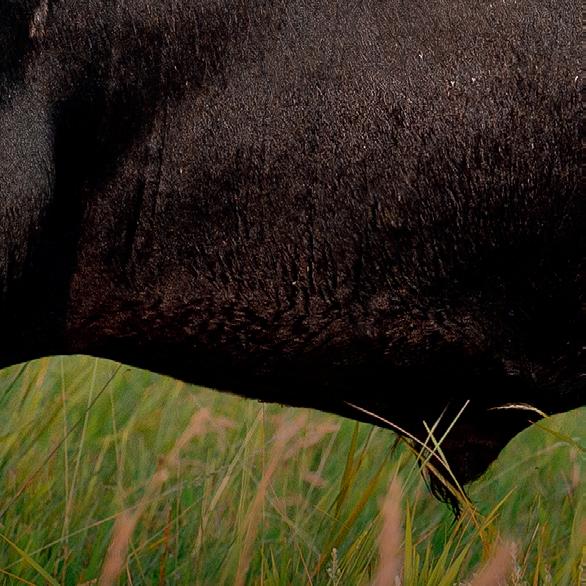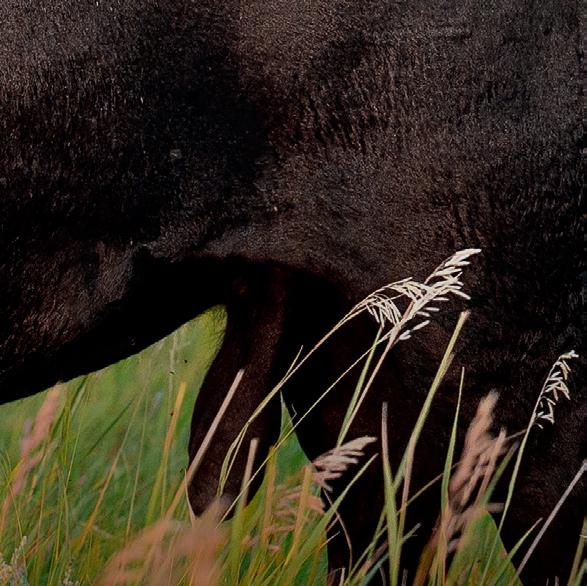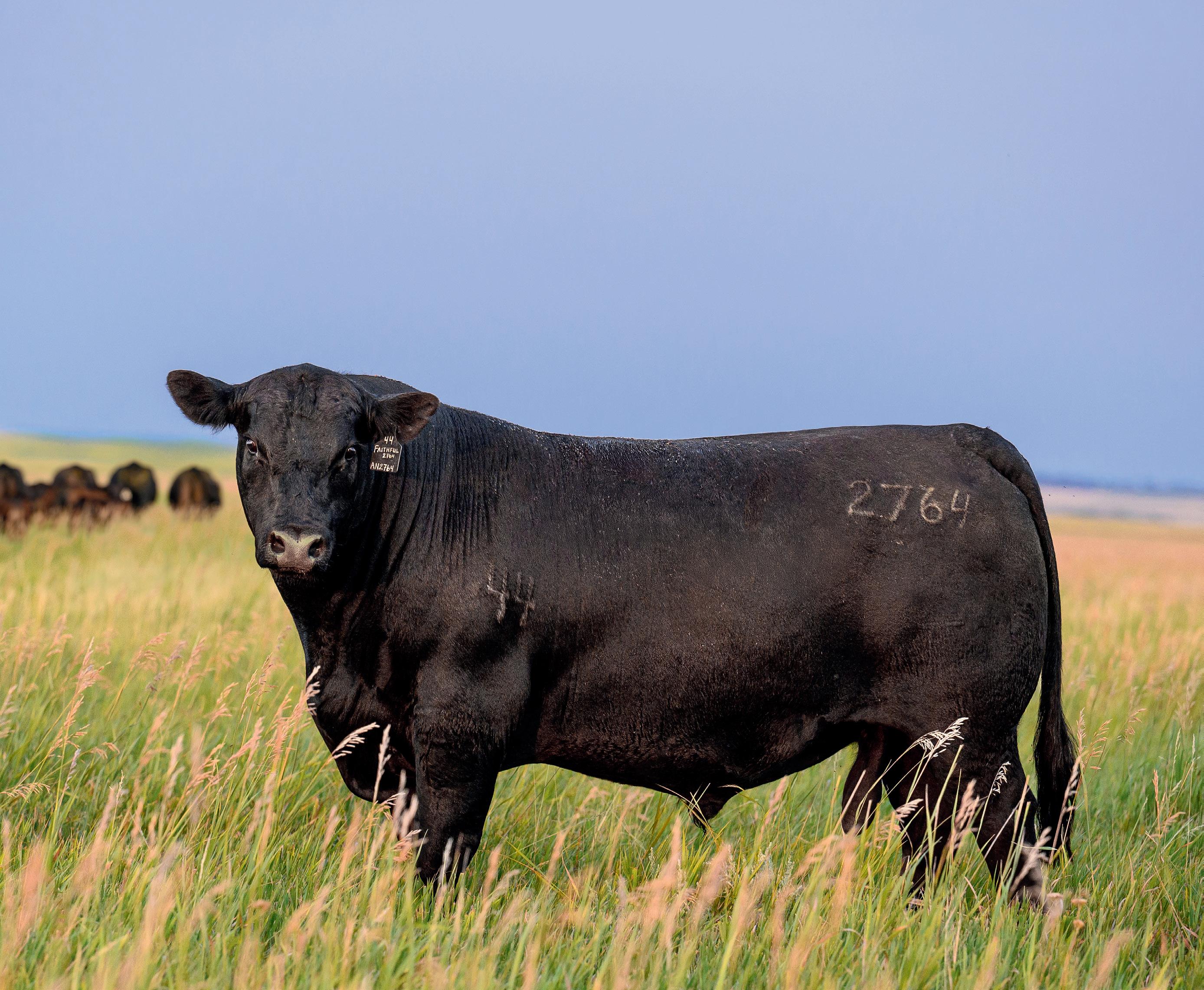Targeted Nutrition
Maximize forage, lower feed costs.



Are your cows getting enough?

Maximize forage, lower feed costs.



Are your cows getting enough?
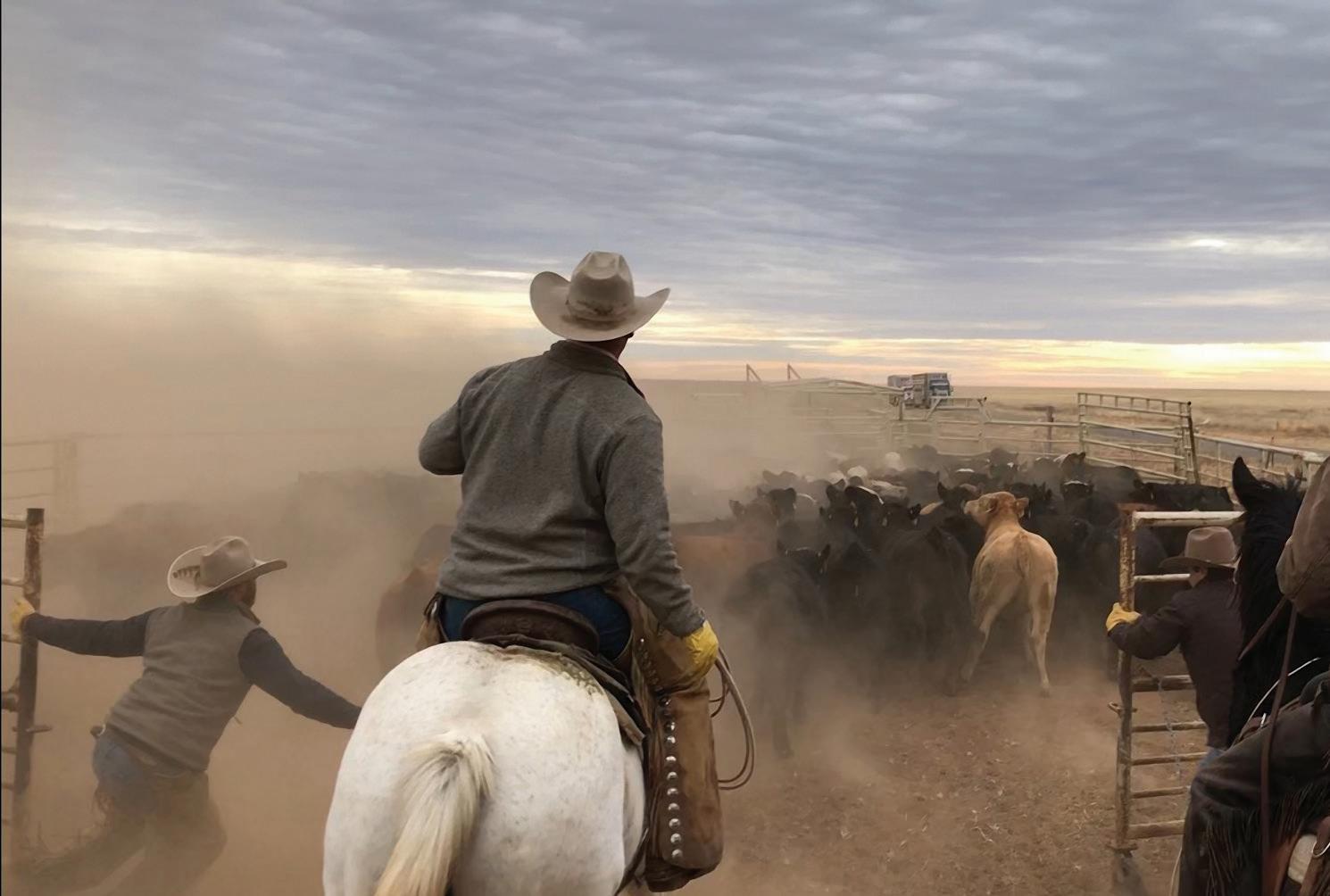

Birdwell Plainview, TX (806) 681-3667



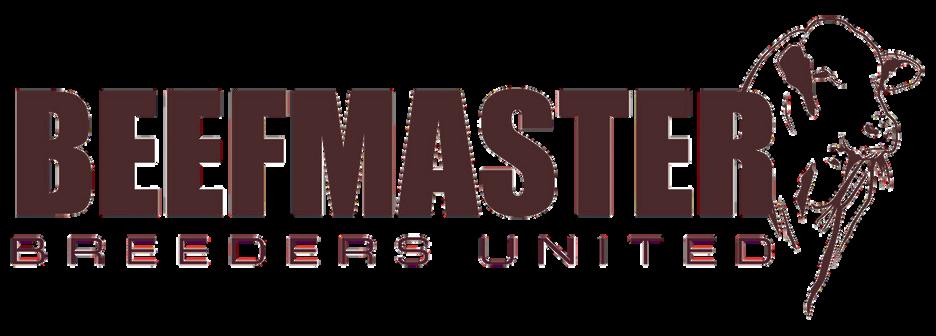
Encouraging cattle and forage to work together, lowering supplemental feed costs.
By Kayla Jennings

Cattle nutritionist shares protein feeding strategies for a drier season ahead.
By Jena McRell
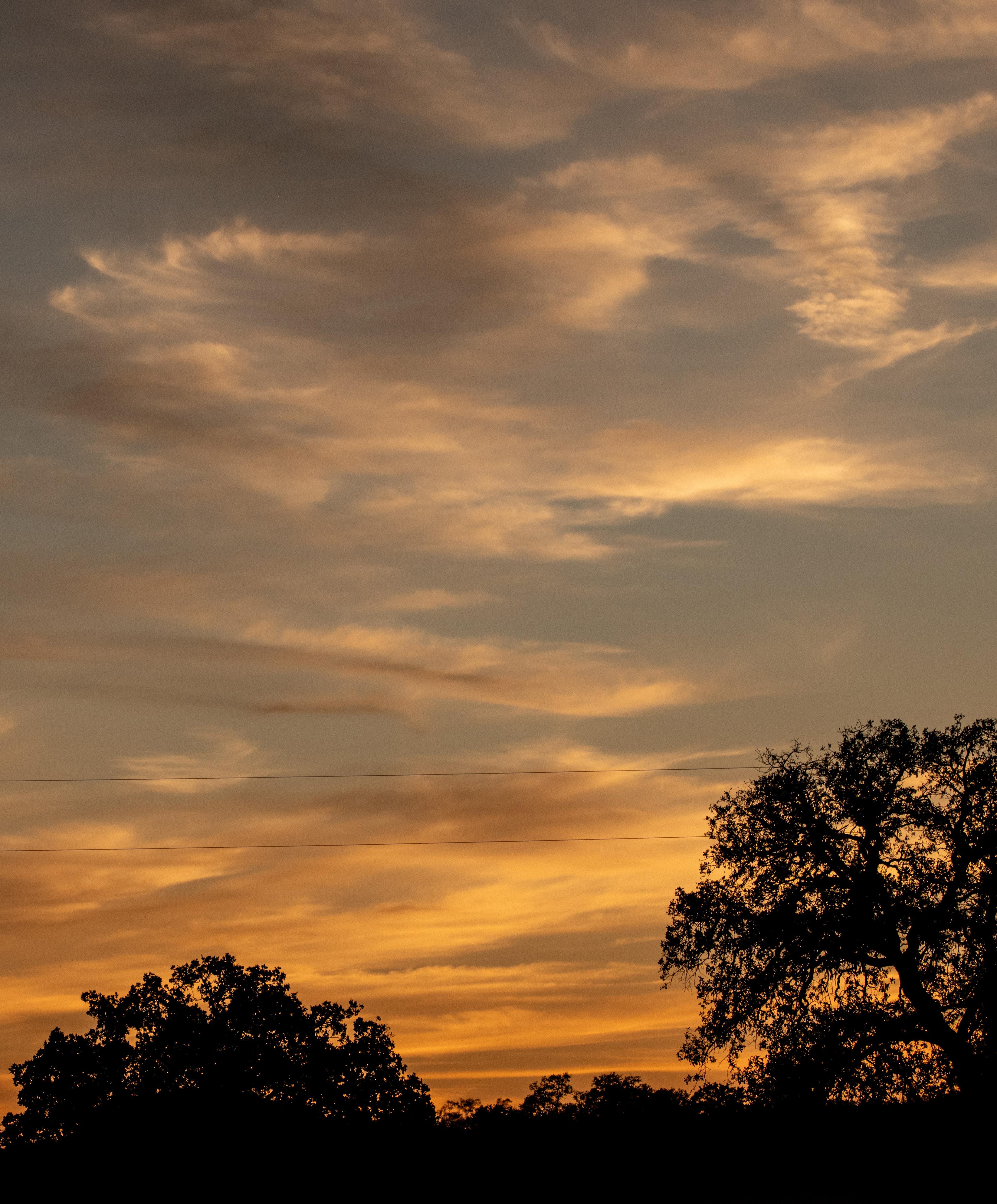
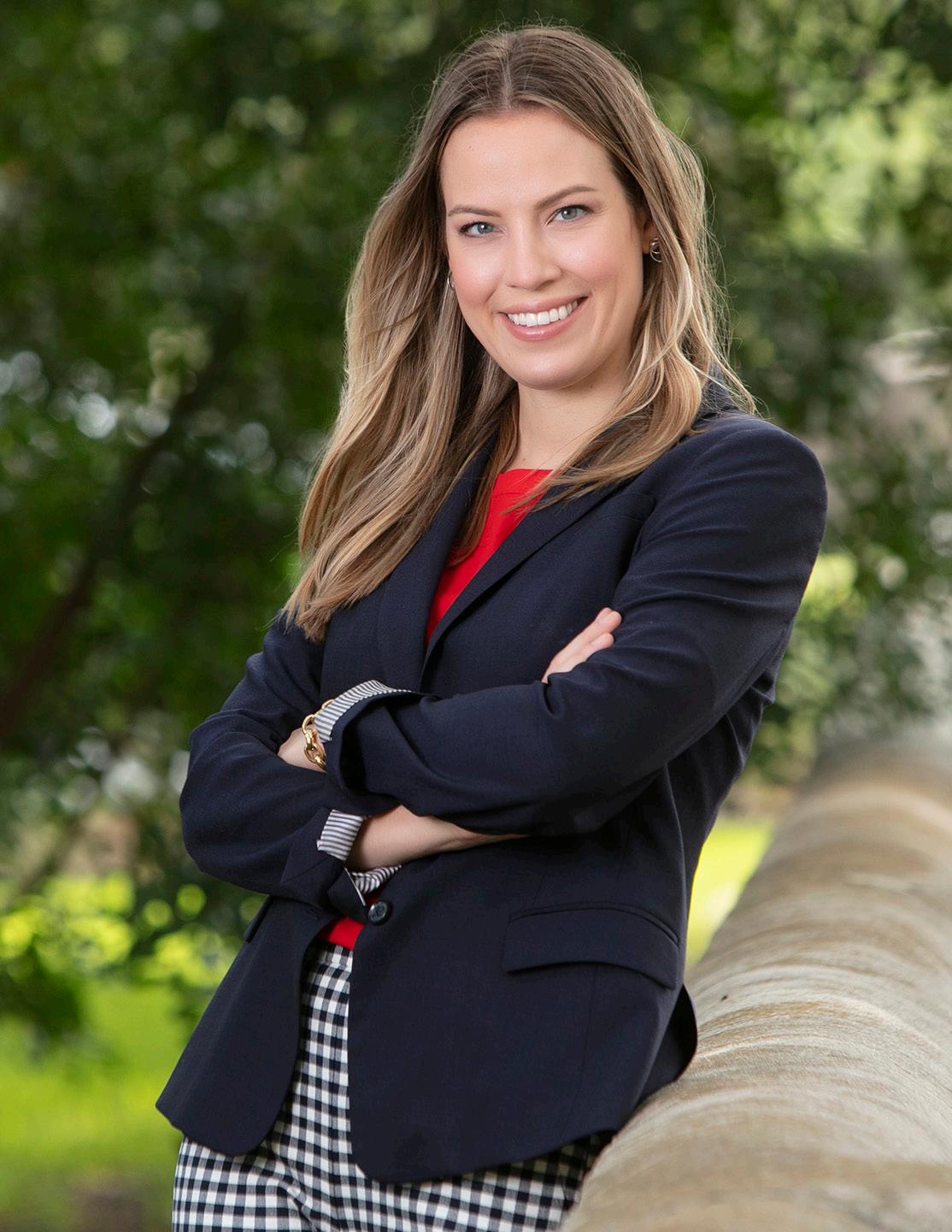
On the ranch, November marks the start of cooler days and preparing livestock for winter. We’re helping our members prepare with this month’s feature stories.
From tips on how to maximize forage and lower supplemental feed costs to nutrition strategies to meet protein needs of your herd, there’s much to learn in the pages ahead.
While fall chores may keep you busy, don’t let open enrollment sneak by unnoticed.
Texas & Southwestern Cattle Raisers Association owns Cattle Raisers Insurance, a full-service insurance brokerage that has long served rural communities and businesses of all kinds. This year, Cattle Raisers Insurance is offering even more ways to get great coverage.
In September, we introduced association memberonly healthcare insurance in partnership with Blue Cross Blue Shield. These new plans are not available through the open market.
While Texas & Southwestern Cattle Raisers Association members can sign up at any time, open enrollment is an
excellent chance to explore the plans. These memberonly offerings feature four different plan designs, including PPO plans that let you choose your own doctor. Plus, enrollment is easy, and there are no medical questions required.
Like always, Cattle Raisers Insurance also offers customized health insurance quotes across A-rated health insurance companies for individuals and businesses. This means Cattle Raisers Insurance can do the hard work for you — shopping to find the best deals for its membership.
Flip to their ad on page 27 to learn more about the available coverage options. T C

Jaclyn Roberts Parrish Executive Director of Communications & Marketing/ Editor-in-Chief, The Cattleman

Published by Texas & Southwestern Cattle Raisers Association
P.O. Box 101988 Fort Worth, Texas 76185
Phone: 817-332-7064
Fax: 817-394-1864
Subscription Inquiries: (orders, address change, problems) tscra@tscra.org or 800-242-7820 tscra.org
Jaclyn Roberts Parrish Executive Director, Communications & Marketing/Editor-in-Chief jaclyn@tscra.org • 817-916-1794
Shelby Kirton Manager of Communications & Marketing
Jena McRell Managing Editor
Kayla Jennings Elyssa Foshee Sanders Proofreaders
Grace Dunham Executive Director, Events & Partnerships gdunham@tscra.org • 817-916-1745
Kyle Conway Director of Corporate Relations & Sponsorships kconway@tscra.org • 817-916-1746
Heather Heater
Graphic Design & Print Production Manager
Production support by: GRANT COMPANY grantcompany.net
The Cattleman/TSCRA tscra.org
Cattle Raisers Insurance cattleraisersinsurance.com
Law Enforcement tscra.org, click on Theft & Law
Cattle Raisers Convention cattleraisersconvention.com
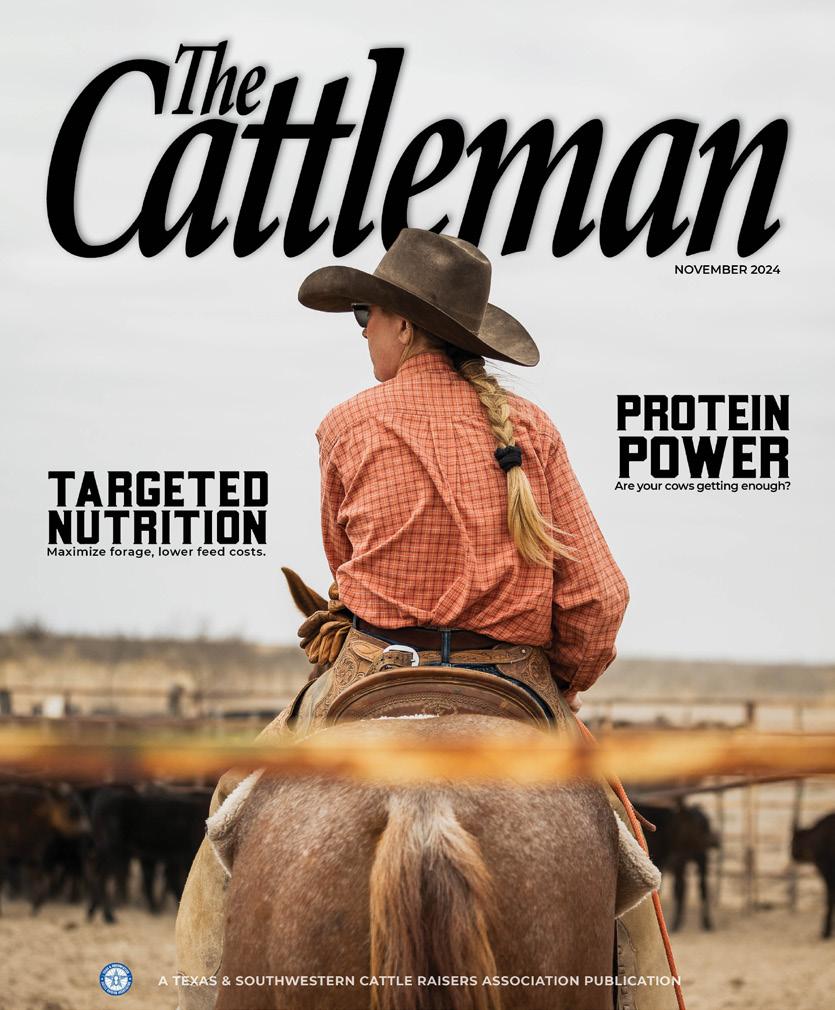
Alix Guin stands ready while working cattle on the T-Bar Ranch, Texas & Southwestern Cattle Raisers Association members near Tahoka.
Photo by Adrian Hawkins
A sunset-filled sky never gets old.
Photo by Kayla Jennings

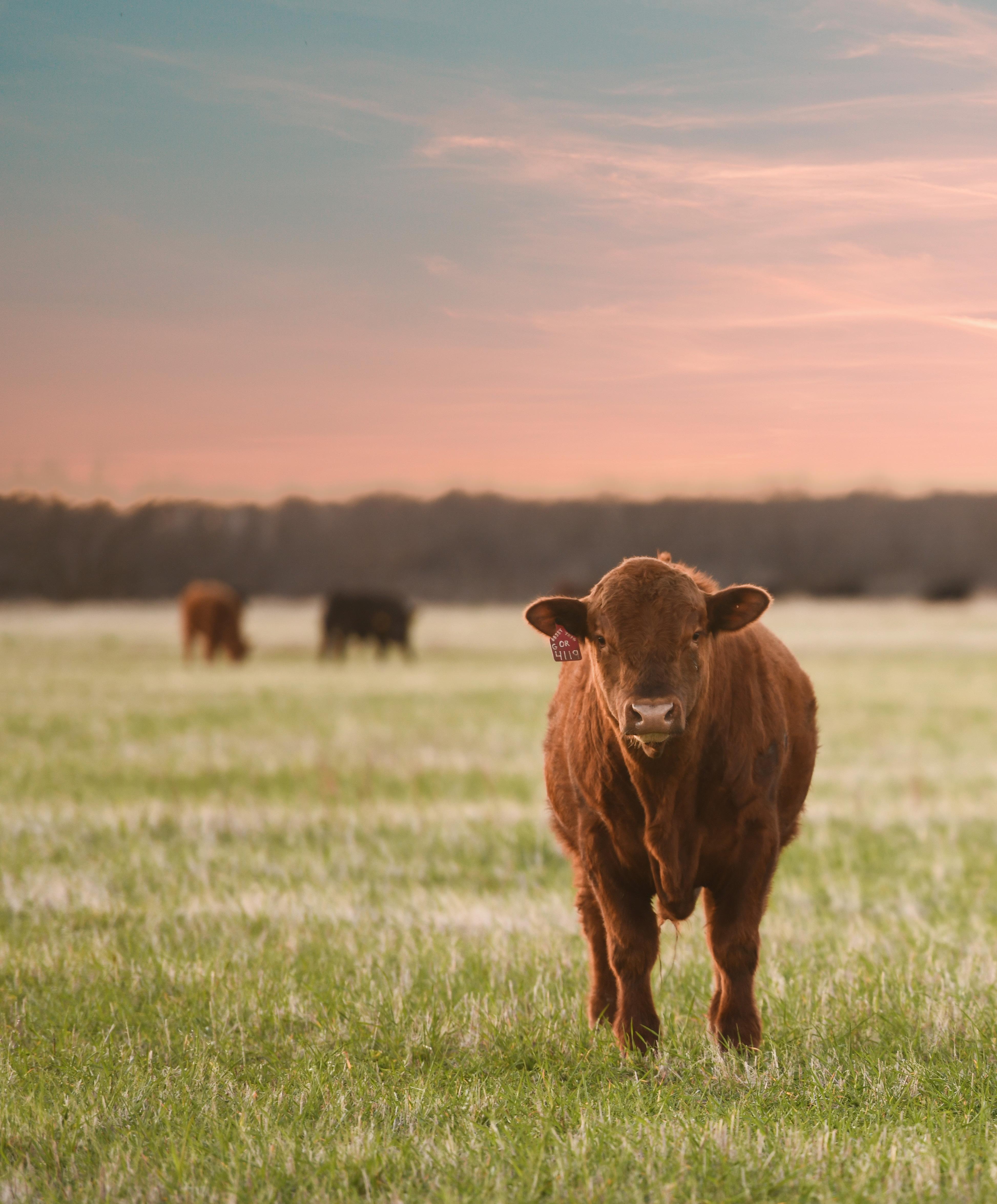

Encouraging cattle and forage to work together, lowering supplemental feed costs.
By Kayla Jennings
Peering in from the blacktop going 75 miles per hour past rolling green pastures dotted with cattle, the ranching profession might look easy.
Raising cattle simply entails 365 days of uniform grazing on a predictable monoculture, pastures that do not require rest, sunny and 75-degree days and a single animal class with identical nutrient requirements.
If that were the case, cattle raisers might find themselves at the coffee shop more often, said ruminant nutritionist Travis Whitney, Ph.D., Livestock Nutrition Center, during his presentation March 22 during the 2024 Cattle Raisers Convention & Expo School for Successful Ranching in Fort Worth.
“You do not have uniform distribution,” he added. “Pastures have to rest. We do have bad weather. We can have a really good plan, but it’s hard to execute because you’ve got to be adaptable and make changes.”
With experience in livestock production systems, academic research and education, and feed product development, Whitney has spent more than 20 years helping ranchers manage their operations through thoughtful, targeted plans.
In that timespan, he noted approximately 4.6 million acres have been sold into non-ag use in Texas — a statistic that continues to grow. From his perspective, this means it is crucial for producers of all sizes to economically maximize resources.
“We have to increase the efficiency,” he said. “We can manipulate grazing distribution to utilize the entire ranch at the right time. We can reduce the need to purchase additional feed. Our goal is to let the forage work for us, let the cattle work for us and not bring in supplemental feed.”

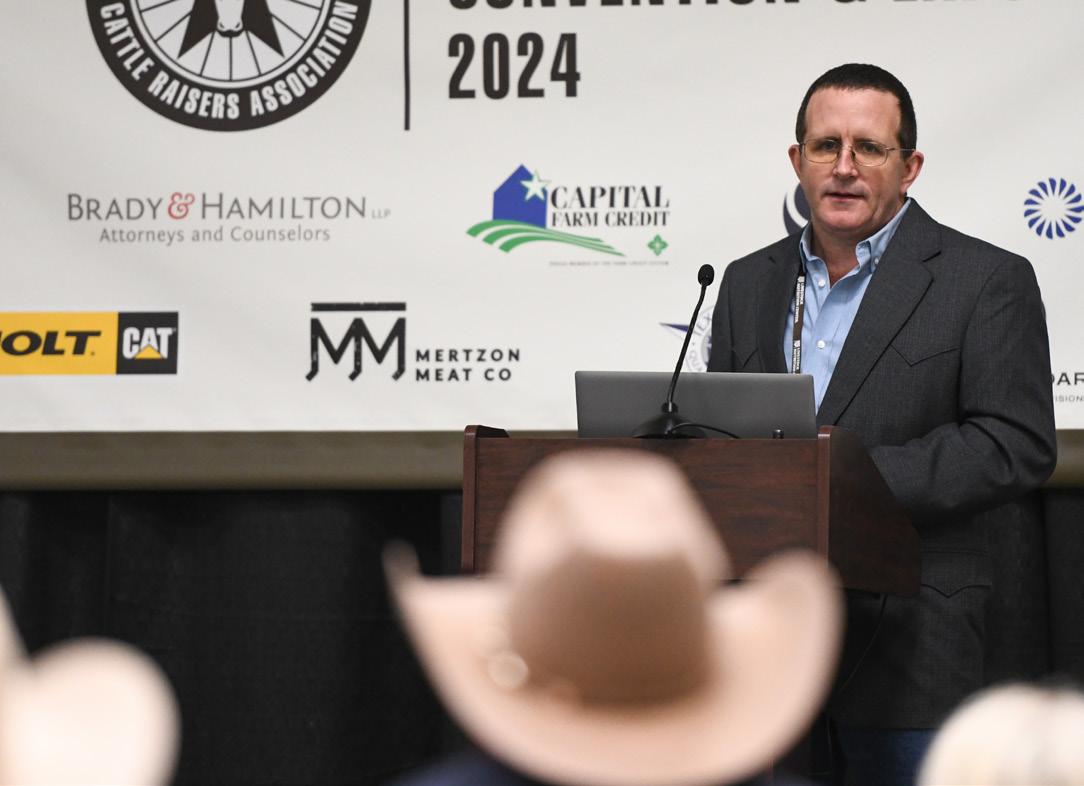
Toward this goal, Whitney stressed the importance of establishing a sound grazing strategy with an appropriate stocking rate.
To illustrate this, he offered an example of 10 head grazing 1,000 acres.
“They are fat and sassy because they don’t have to work hard,” he said. “They’re leaving the less desirable plants alone. They’re eating the most nutritious plants, so their gain is high, but their gain-per-unit-area is low.”
The other extreme is an overgrazed area now prime ground for invasive weeds and brush. Neither is ideal for hitting the desired gain-per-unit-area.
It goes without saying, establishing a sound stocking rate is key to a grazing plan.
Even so, Whitney pointed to more than just acreage when determining what a pasture can hold. He said cattle are reluctant to travel more than one mile to water, and they tend to avoid grazing on hills with slopes steeper than 30 degrees.
He also reminded producers that rainfall levels and forages vary depending on the terrain, so there is no one-size-fits-all management strategy.
Concepts shared in the School for Successful Ranching session felt familiar to Lyle Horwood, who is a fifth-generation rancher and Texas & Southwestern Cattle Raisers Association member.
The Horwood family never misses the largest annual gathering of cattle raisers in Fort Worth, where they learn ways to enhance their Angus cow-calf operation spanning Clay, Hall, Sterling and Mitchell counties.
Throughout the last 13 years he’s spent managing the Clay County division, Horwood said he is comfortable with a stocking rate of one head per 10 acres. In counties farther west, the family subscribes to something closer to one head to 35 acres. This is determined by available grasses, as well as predicted annual rainfall.
“We’re in the cattle business and that’s what we do, but we’re really grass farmers,” Horwood said. “If you don’t have grass, then you’re out. You can’t feed a profit into cattle, but you can use what the good Lord gives you and make it all work together by taking care of the grass.”
Horwood said being knowledgeable about the species of available grasses allows a producer to identify the prime time to rotate and rest pastures. If a person waits too long, the rest period may double to allow the grass to come back enough for grazing.
“You’ve got to work with your seasonal grasses, your perennial grasses and your annual grasses in rotational grazing,” Horwood said. “Try to get that pasture about half-full or cut down half before you rotate out.”
Grass management is only part of the jigsaw puzzle of cow herd nutrition. Mechanical considerations like strategic cross fencing, adjusting feed delivery systems, electric fences, and water source placement are all ways to maximize forage.
At a basic level, cattle desire to be near water, shade and feedstuffs. Whitney said research has proven cattle won’t travel far from their water source to graze. This means land beyond such a radius may be underutilized.
With this in mind, Horwood has strategically placed permanent water troughs within that radius to promote more uniform grazing, sometimes with as many as three water sources within the same pasture.
In some scenarios, Whitney said it may pay for a producer to use a portable watering unit.
An example he offered was purchasing a used cotton wagon and converting it into a watering unit. By moving the water source 600 feet in either direction, cattle will be drawn to the migrating water source and prompted to graze other acres.
In this instance, Whitney predicted producers can encourage about 33 more acres of grazing for the cow herd. This could result in 13 more days of annual grazing with 50 head of cattle — a big gain.
Whitney also pointed to brush control measures and prescribed burning. These management tools have proven to enhance forage quality over time, which creates more grazable acres. By removing brush, a producer allows the ground to focus on producing highquality forage in its place.
Similarly, prescribed burning encourages a better forage stand while also controlling weeds and other invasive plants to some degree. Yet, it does require increased input.
“Any time you make a decision, look at your return on investment and the bottom dollar,” he said. “The numbers are variable, so stick in your own numbers to see if it works for you.”
While setting up a grazing plan and strategically placing water sources are necessary steps, supplementing is another way to optimize resources.
“Everything that animal takes, especially low-quality forages, we want to increase digestibility and enhance the rumen microbes where they can use that forage better,” he said. “Supplementation can increase harvesting efficiency — basically the cow going out and increasing the efficiency of selecting forages.”
Whitney said supplement is the key word, though. When a producer moves from supplementing to substituting for nutrition, it becomes a high-stakes situation.

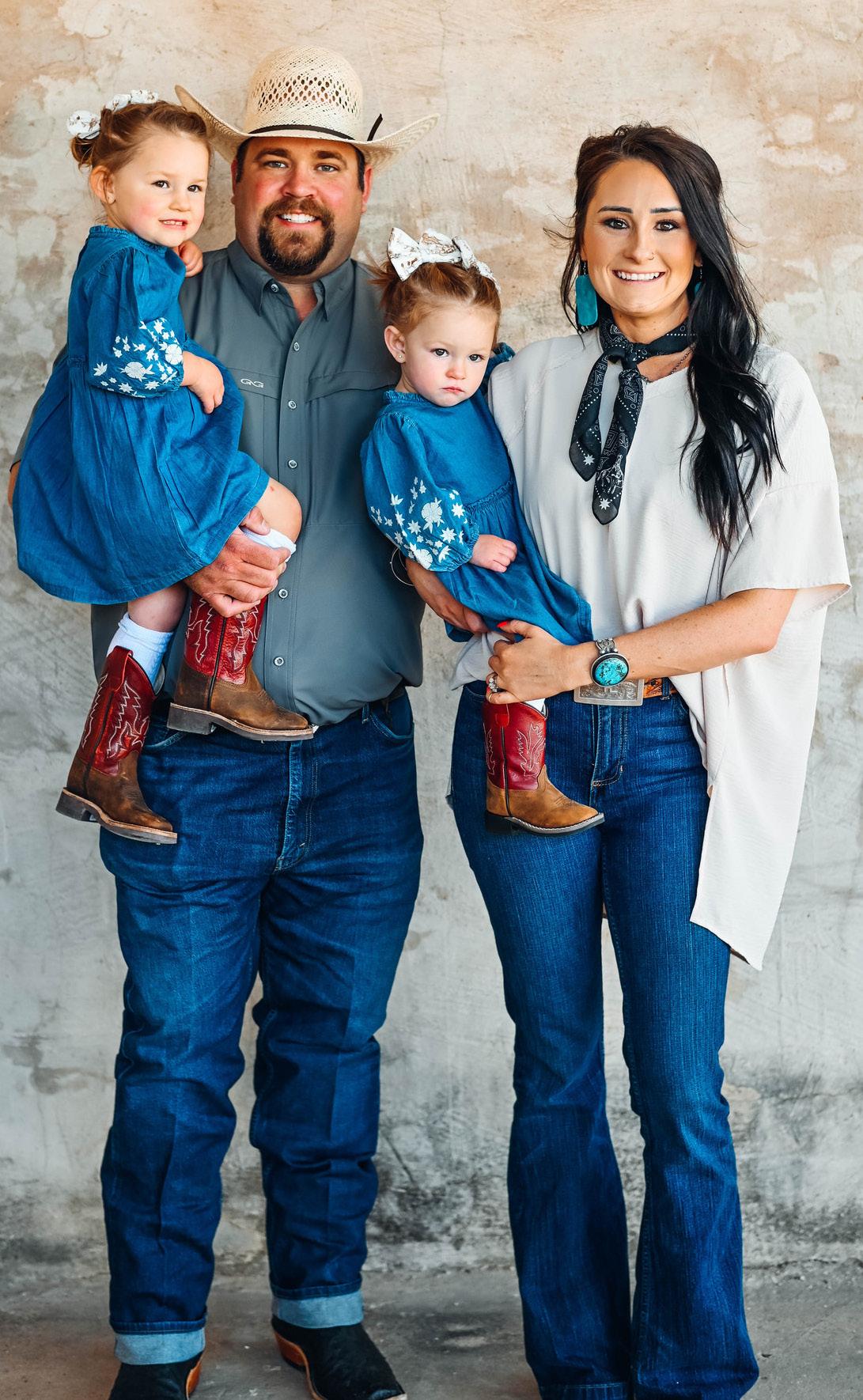
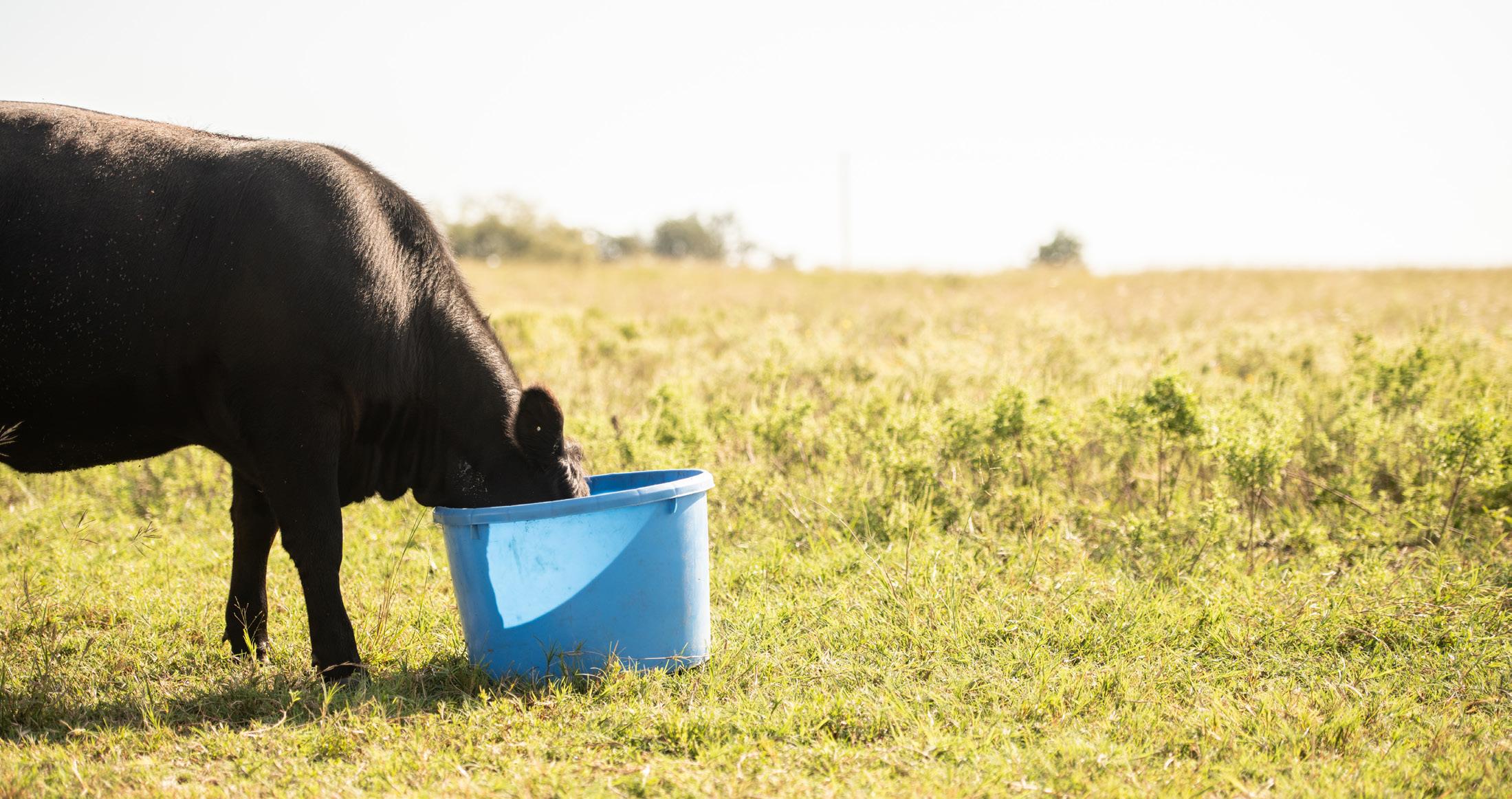
The type of supplementation hinges on several factors, namely the producer’s location and nutrition needs. In certain areas, cottonseed may be a costeffective supplement whereas others may source byproducts like distillers grains.
Growing a row crop like wheat or a combination of supplements, as the Horwoods do, are other options to consider. Along with their rotational grazing plan that allows a 60-to-90-day rest period per pasture, the Horwoods also supplement with a tub-based mineral, cubes in the winter, wheat pasture and hay, as needed.
In addition to selecting the appropriate supplement for the herd’s nutrient requirements, the delivery strategy is imperative to encourage grazing.
Horwood adopted this practice long before he realized it was helping the herd’s longevity in a pasture.
“When we were young kids, our dad would have us take mineral to a certain corner of the pasture to make the cows go over and eat, so we could get some decent grazing in,” he recalled. “And that’s just what we did, not knowing we were actually trying to help our cow herd stay longer in a pasture to better utilize that grass.”
Like water sources, cattle can be drawn to supplements. Intentionally moving mineral to underutilized areas ensures cattle graze new pasture.
Any time you make a decision, look at your return on investment.”
— Travis Whitney, Ph.D., Livestock Nutrition Center
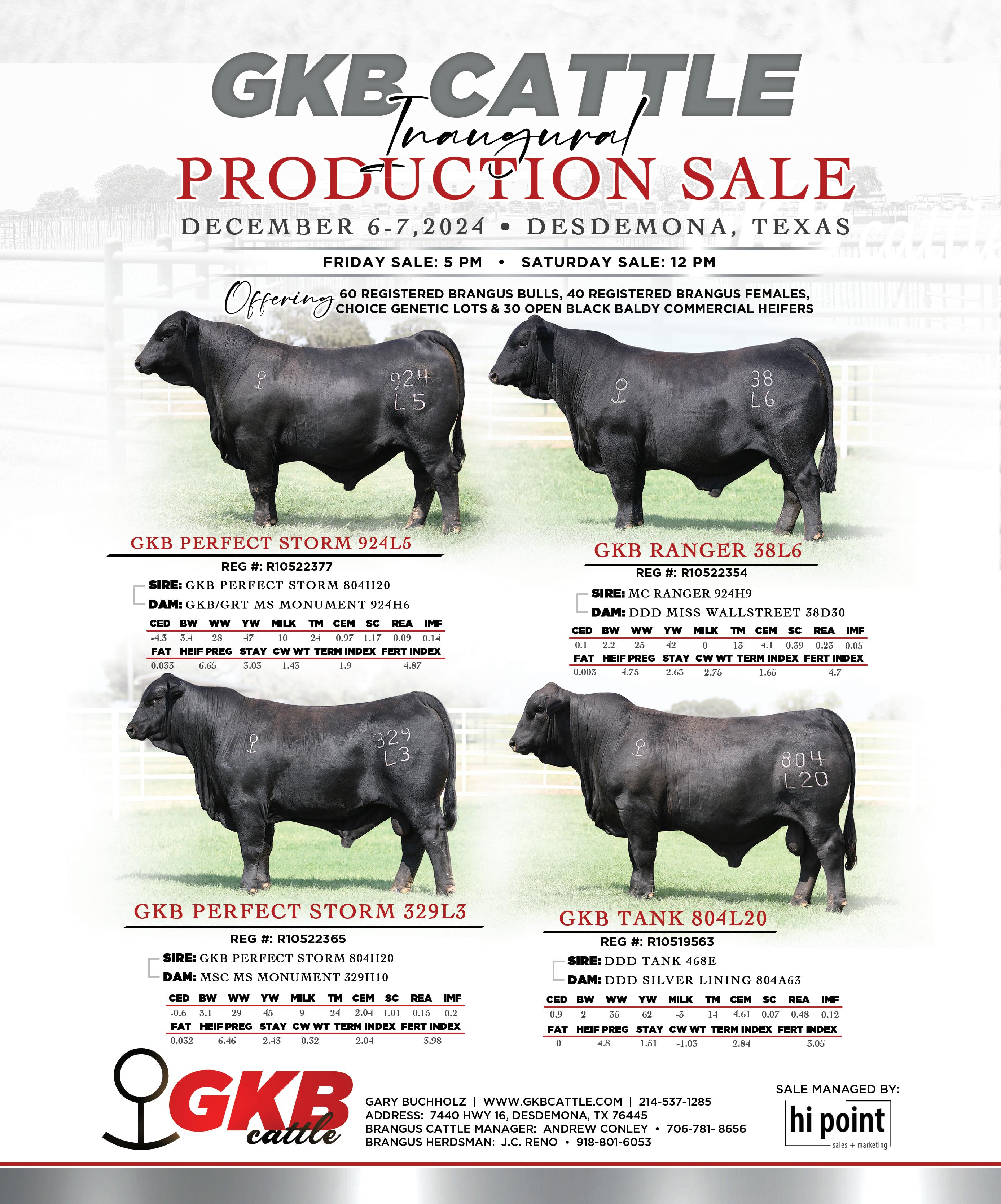
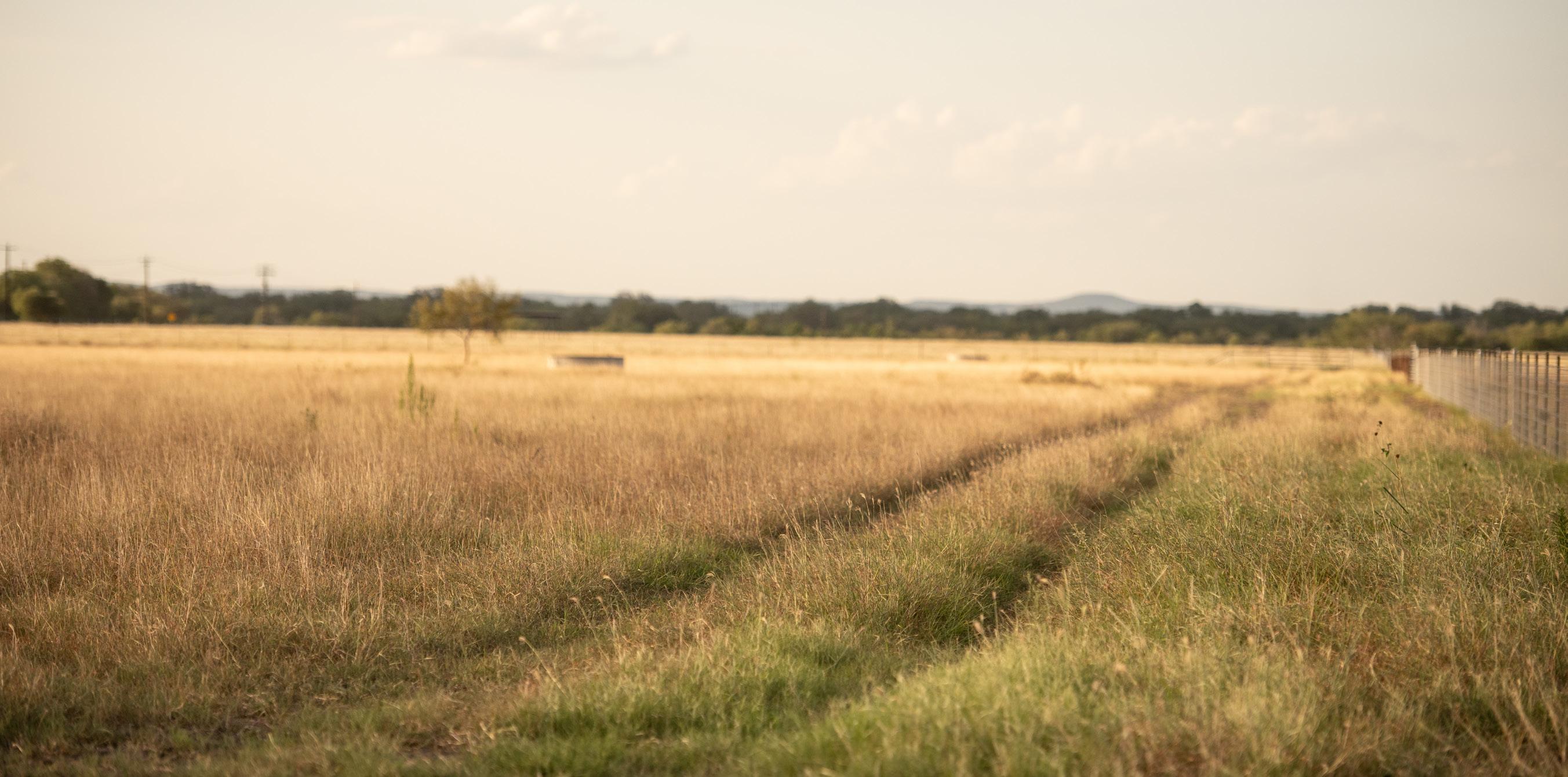
This idea is not to be confused with the shotgun approach, Whitney cautioned. Placing supplements in several locations may create adverse effects.
Instead, choose a location and allow cattle to consume what they can there before moving to the next section of underutilized pasture. Horwood said he uses this concept to keep an area from becoming overgrazed, as well.
“If you have a creek running through the pasture, cattle are going to try to hang out down there on that creek all the time, because that’s where the shade is,” Horwood said. “If you have their mineral right there too, you’re eventually going to end up with erosion, because you took out the grass that holds that soil together.
“That’s when we would utilize our mineral and drag it to those different corners to make cattle leave those high-frequency spots where they like to stay.”
Using a low-moisture block with salt and mineral is another option Whitney suggested. Because cattle tend to like these blocks, they will travel to get them.
That said, they won’t travel if there is not enough to sustain them. One block for every 15 head is a sweet spot to keep them coming back, Whitney said. However, if there is one block for 60 head, cattle will remember there was not enough to justify the journey.
Frequency also comes into play. Whitney said if a producer is supplementing daily, a cow’s work is done as
soon as the feed truck comes. In other words, she won’t continue grazing if she knows an easier feed option is coming. That is why he recommended an interval of three to seven days.
As technology improves, producers have more access to knowledge and tools to make better decisions regarding supplementation.
Whitney points to resources like virtual fencing, GPS tracking to determine grazing patterns, and maps to monitor forages and soil.
Horwood said that is one of the draws to the School for Successful Ranching. Learning about up-andcoming technology allows producers to gain efficiency in many cases.
“Sometimes old ways are better than new ways,” he said. “But there’s a lot of technology out here now that can really help us.”
By considering research, technology and common sense, cattle raisers today are well-equipped to continue striving for more product with fewer resources.
“Overall, we want the ranch [to be] sustainable,” Whitney said. “But we have different definitions that vary by region, goals, resources, knowledge and mindsets. It does require targeted consultation and an evaluation of your specific goals.” T C
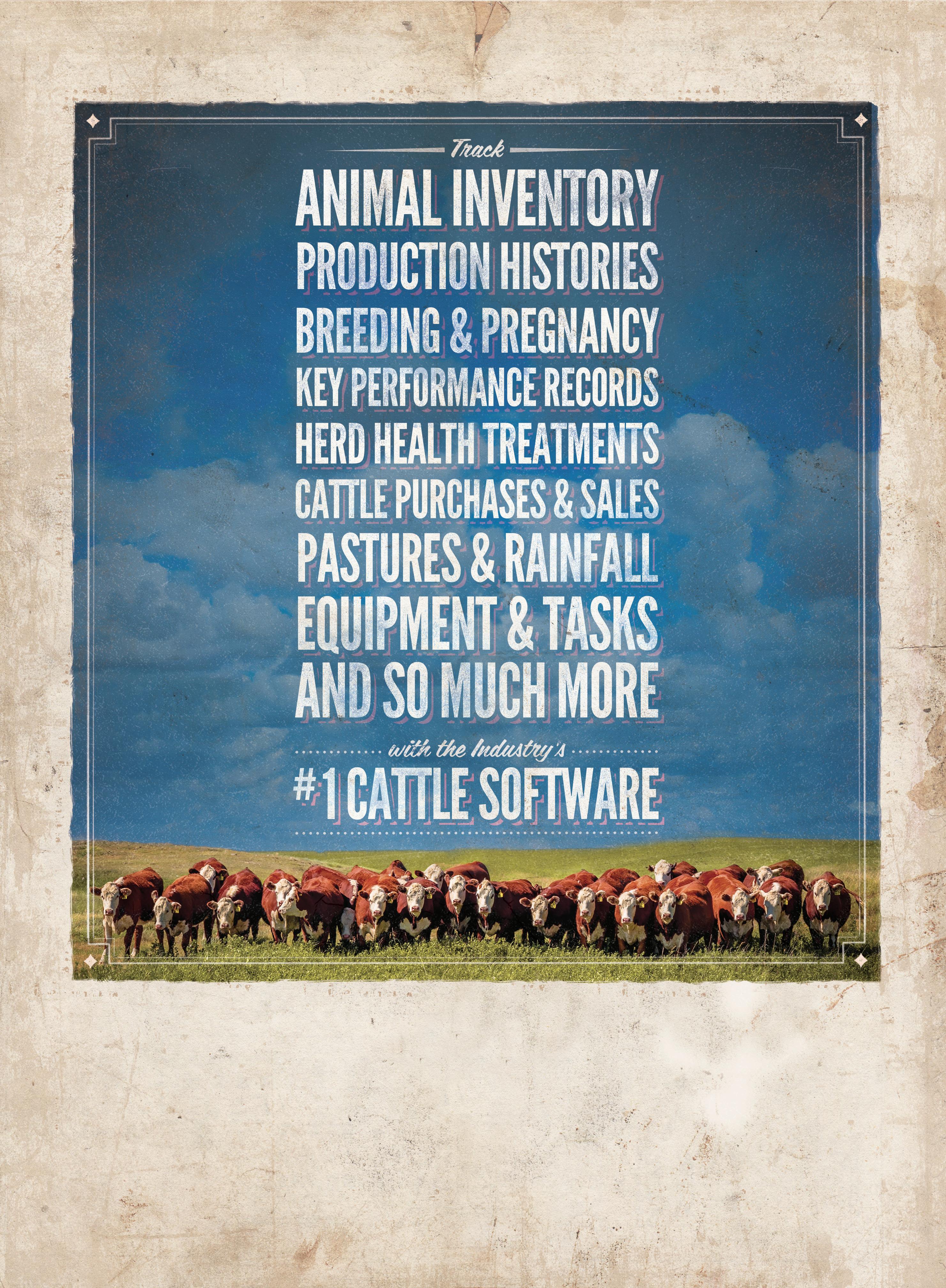
The only thing that takes more work than raising cattle is keeping track of all of the records that go with it. That’s why there’s CattleMax. Whether you’re tracking cattle or keeping records of everything from rainfall to receipts, CattleMax does it all. And does it easily.


Cattle nutritionist shares protein feeding strategies for a drier season ahead.
By Jena McRell
The inevitable shift to a La Niña weather pattern has many in agriculture holding their breath for what may come. In the Southwest, the change in oceanic patterns is notorious for its less-than-average rainfall.
Jon DeClerck, a cattle consulting nutritionist for Purina Animal Nutrition, says he is already seeing this trend play out across the region.
Following a productive spring growing season, when most areas received adequate moisture and forage growth, the late summer brought a prolonged period of intense heat. Around August, the rain stopped and temperatures spiked.
“In places where it was really hot and dry, that grass was zapped,” says DeClerck, who holds a doctoral degree in ruminant nutrition from Texas Tech University.
Based on recent forage test results, he has noticed an early drop in protein levels. In September, DeClerck says
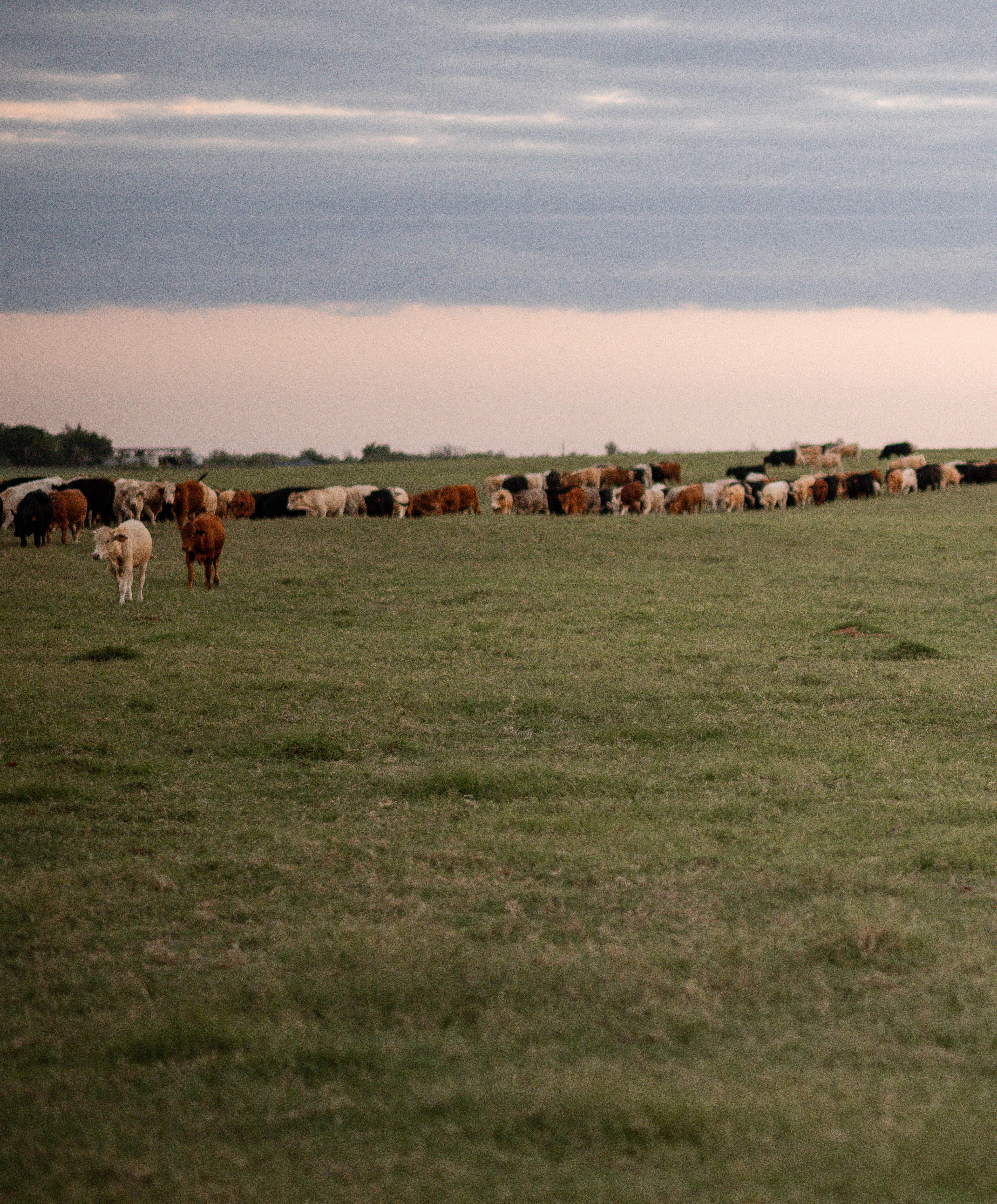
crude protein was reported at 4-5% in typically strong grazing areas of Texas that can handle a cow-calf pair for every three to four acres.
“Normally, we would not see that range until November,” he says. “This winter is going to be tough for folks.”
La Niña’s looming impact and current forage conditions should inform feeding strategies in the coming months.
One silver lining, DeClerck says, is most ranchers were able to put up more hay supplies than they have in recent years.
An understanding of total digestible nutrients, or TDN, within an animal’s diet — and supplementing where needed — will remain a priority.
“Most cow-calf producers are going to have to find a protein solution to supplement cows, and help them digest and maximize the grass they are consuming,” DeClerck says.
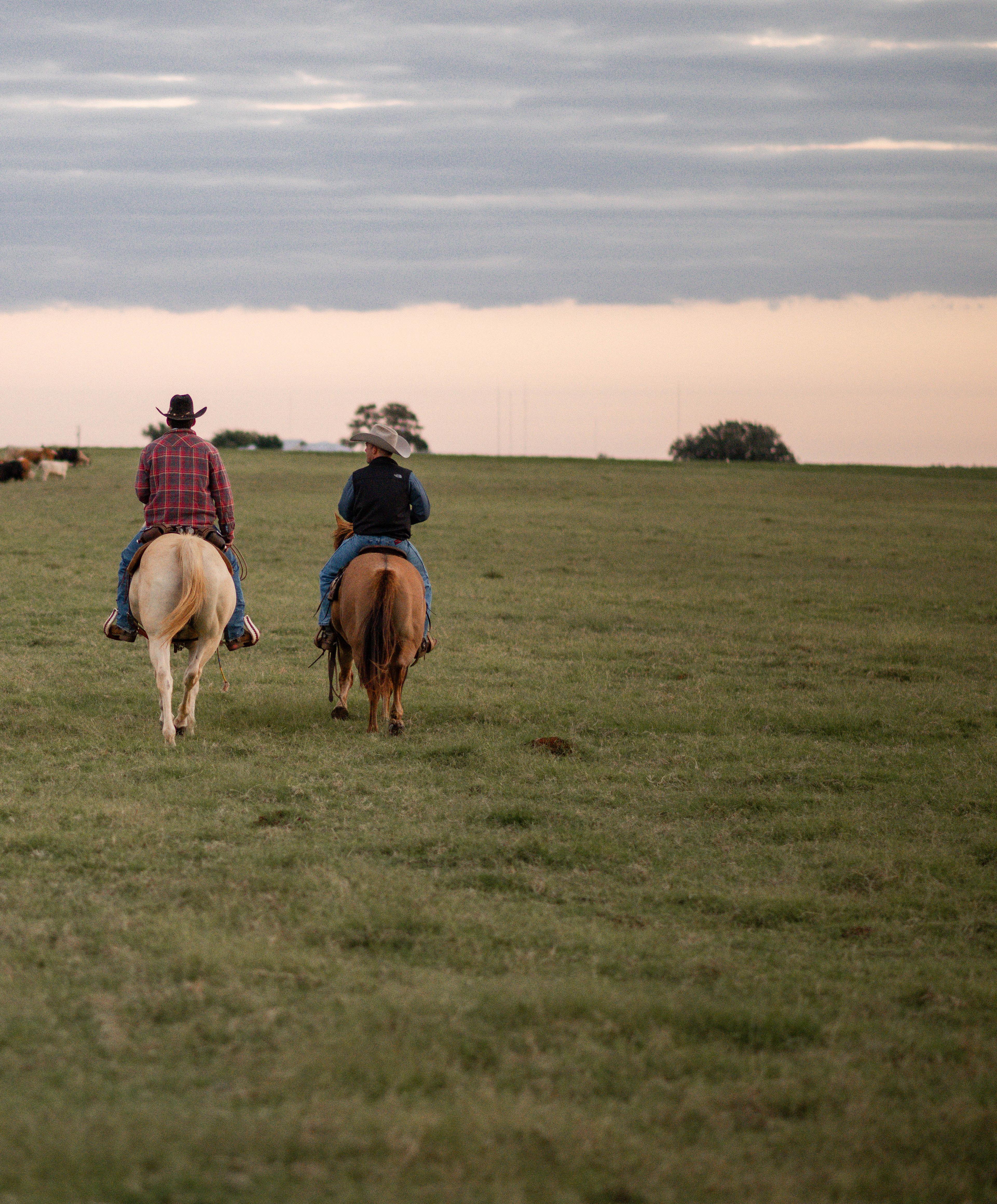
by Katie
Just as beef provides essential protein for human consumption, the importance of the nutrient for cattle cannot be overstated. Proteins play a crucial role in nearly every biological process.
“If you have a cow that is eating 80% of her required protein, her body is going to function at 80%,” DeClerck explains.

The vital nutrient is key to powering the ruminant animal’s sophisticated digestive system, where rumen microbes break down forages into highenergy fatty acids. Simply put, cattle need adequate protein to make the most of the grass they consume.
In the spring, when forages pack a greater protein punch, this is less of a concern. But in the fall and winter, DeClerck says there is often not enough fuel for microbes to efficiently digest and maximize forages.
“If we want to put the right kind of gain on those cattle, we need to make sure that they have protein, or the right kind of protein, so they are growing in an effective manner,”
DeClerck says.
As a rule of thumb, he says a cow needs between 1.6 and 3.4 pounds of daily protein, depending on her stage of production. A cow in peak lactation needs between 3 and 3.5 pounds of crude protein, while a dry cow likely requires 1.6 to 2 pounds per day.
“With a protein supplementation program, cows can go out and sustain themselves, digesting a higher percentage of the grass they are eating,” DeClerck says. “That is primarily what we are trying to do from a protein standpoint.”
Ensuring adequate protein consumption begins with understanding what is happening at the ground level.
Collecting forage samples and testing hay before feeding sheds light on exactly what the herd is consuming. DeClerck likens it to the label on a feed bag. Without testing, a forage’s nutritional base is unclear.
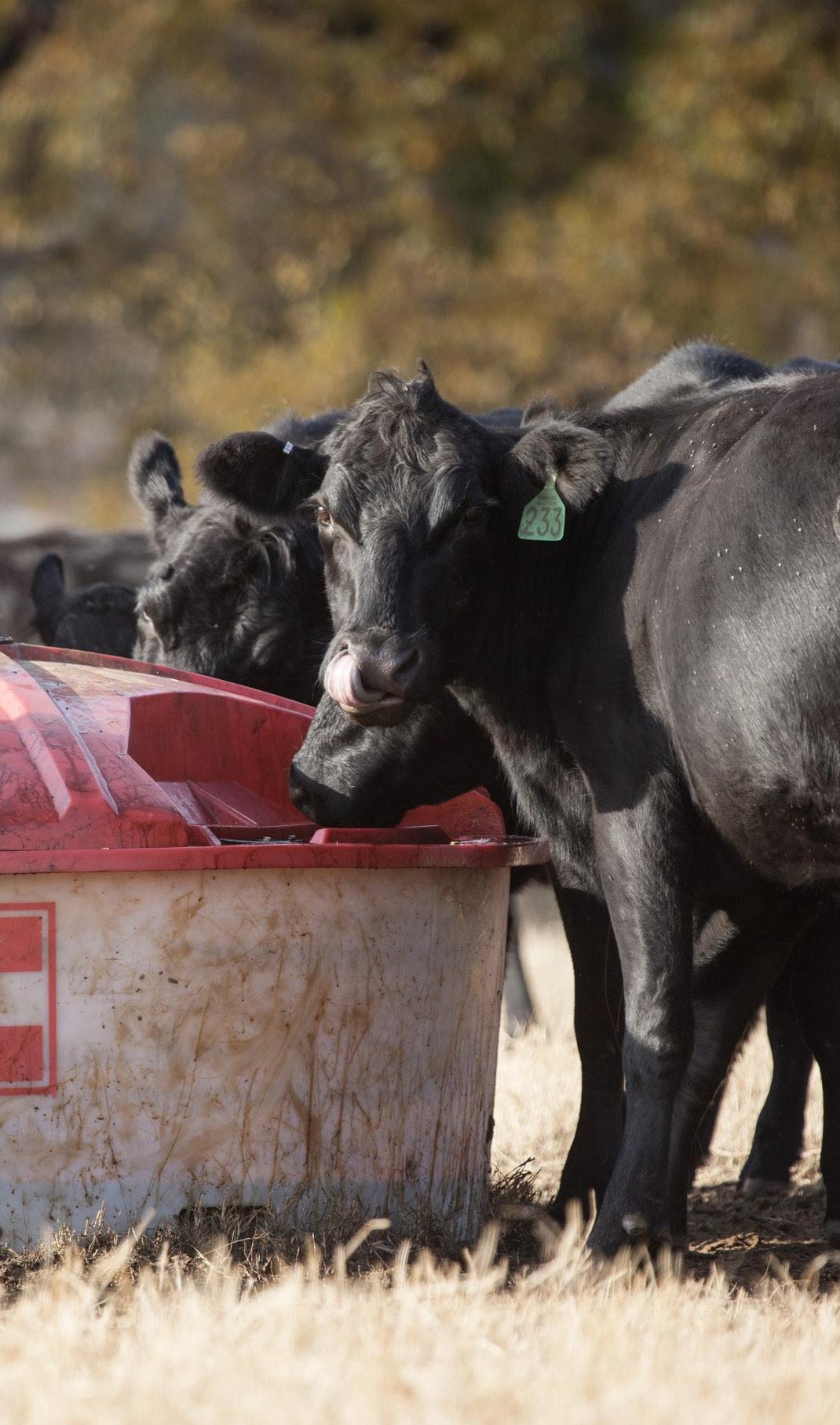
“It is so important to test those things so we can measure it, and then develop a nutritional strategy that meets our cow’s requirements,” he says.
Visually, an animal’s body condition score can be used as a barometer for available forage nutrients. However, as DeClerck points out, that is a lagging indicator.
By the time a cow’s body condition starts to slip, it may take more time to level up her plane of nutrition.
For bred females, any nutrient deficiency could also negatively impact the future performance of the calf growing in utero. Fetal programming research has shown how critical the dam’s nutrition is to the calf’s ability to one day reach its genetic potential.
What a cow consumes can influence everything from a calf’s muscle tissue development to future reproductive success — and its ability to gain and grade.
DeClerck cited a University of Nebraska study that offered insights into fetal programming. In the research, cows that grazed improved pasture for at least 60 days resulted in calves that were 32 pounds heavier than their contemporaries.
“In today’s market, that is north of $90 per head, just because those cows had an opportunity to graze a higher protein grass during the second trimester,” he says.
That time frame might be when some producers want cows to rough it out for a while. Even so, the next calf crop should remain at the forefront.
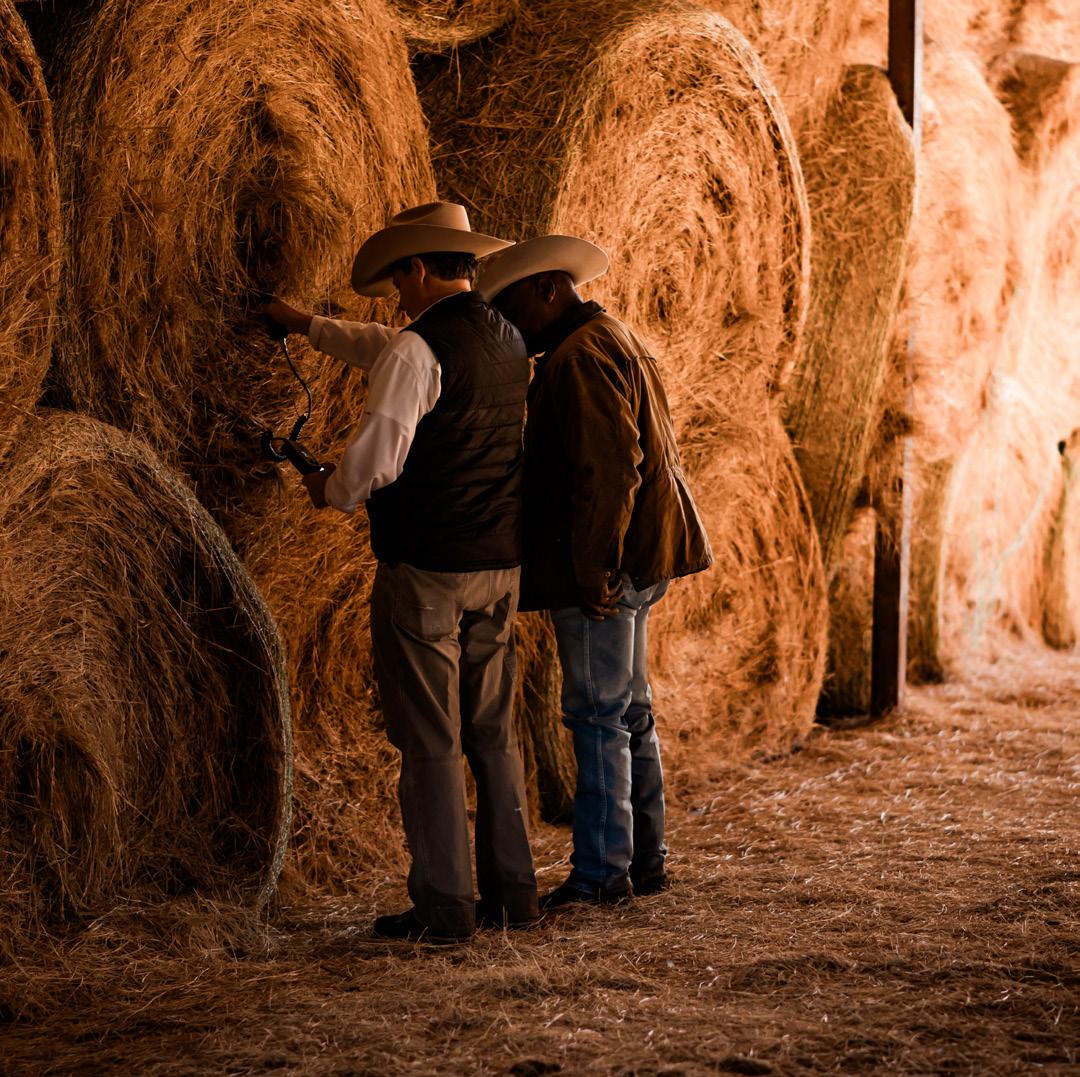
“You have to think about protecting your investment,” DeClerck says. “That cow could be carrying a $1,500 feeder calf.”
Herd nutrition strategies range as widely as the landscapes of Texas. Every ranch should make decisions based on its specific cattle and goals, pasture size and labor availability, to name only a few factors.
DeClerck says many cattle raisers find success supplementing protein by hand-feeding range cubes. He often recommends self-fed liquid supplements, like molasses tubs. Protein and mineral tubs are also popular options, but those can vary when it comes to satisfactory protein across the entire herd.
“If you feel like your grass is meeting your cow’s requirements, then maybe placing a tub out there will help make sure you are getting an extra two-to-threetenths in them as an insurance policy,” he says.
For low-protein forages, he recommends feeding high-protein range cubes, whole cottonseed, dried distillers grains or self-feeding liquid options.
With a national bumper crop expected for corn and soybeans this year, DeClerck anticipates prices could improve for dried distillers grains, making them a more viable option for cattle producers. A tighter cotton crop has limited the market for whole cottonseed, but certain locations might find this a cost-effective alternative.

“If you can purchase those commodities at a competitive price and have the manpower to deliver and feed it to your cows in bunks, those can be great solutions,” he says.
When developing a plan, DeClerck recommends rationing feed for cows with the highest maintenance requirement in mind.
Naturally, larger animals will need more protein, and the stage of production within a group can range widely throughout a 90-day breeding window. Then comes the reality of competition. Basing feed off the animal with the highest maintenance will help ensure there is enough to go around.
He also encourages preparing for the worst-case scenario when possible. For example, after testing hay supplies, producers should operate under the assumption the lowest nutritional value is being fed. Supplementing protein with that in mind means no animals are short-changed.
With a number of variables at play, understanding the herd’s specific needs — and the most costefficient way to meet them — is the ultimate goal.
“There are so many different ways you can effectively feed cattle,” DeClerck says. “It depends on all the variables specific to your operation, the climate, available forage, what kind of grazing system you have, accessibility to labor and feedstuffs.
“The most important thing is getting animals what they need.”
The robust cattle market, which by all indications will continue to thrive for the next couple of years, is another reason to finetune nutritional strategies for maximum gain.
DeClerck admits no one likes to back up to the co-op and put on a pallet of mineral or cubes, but it may mean the difference between another calf hitting the ground or a weaned calf weighing 20 pounds heavier.
When first consulting with cow-calf producers, he encourages them to calculate and work with a specific number in mind.
“One of the biggest disconnects that we have is, we sell by the pound, yet our expenses are on the percow basis or a per-acre basis,” he says. “I always like to try to marry those two numbers with pounds weaned per cow exposed — or pounds weaned per acre.”
That figure proves beneficial when considering the herd’s nutritional budget, while keeping in mind the opportunity cost of not feeding properly.

by Katie Barnett

protein requirements
DeClerck reminds producers that genetics and cow size have changed over time, and that means nutritional strategies should evolve, too.
If calves are still weaning at about the same size as they did 30 years ago, but cows weigh 300 pounds more, he says that results in a substantial increase in the feed bill — without generating any more pounds of beef.
As ranchers attempt to meet the challenges of urban sprawl, fewer acres of working land and growing consumer demand, every opportunity to become more efficient counts.
“That is why it is important to forage test, talk to a nutritionist and figure out how much TDN your cow needs, because it can be a pretty eye-opening experience,” DeClerck says. “If you are not feeding your cattle at the right level, you are not capitalizing on the advanced genetic capability to gain and grow.” T C
1,400-pound mature cow
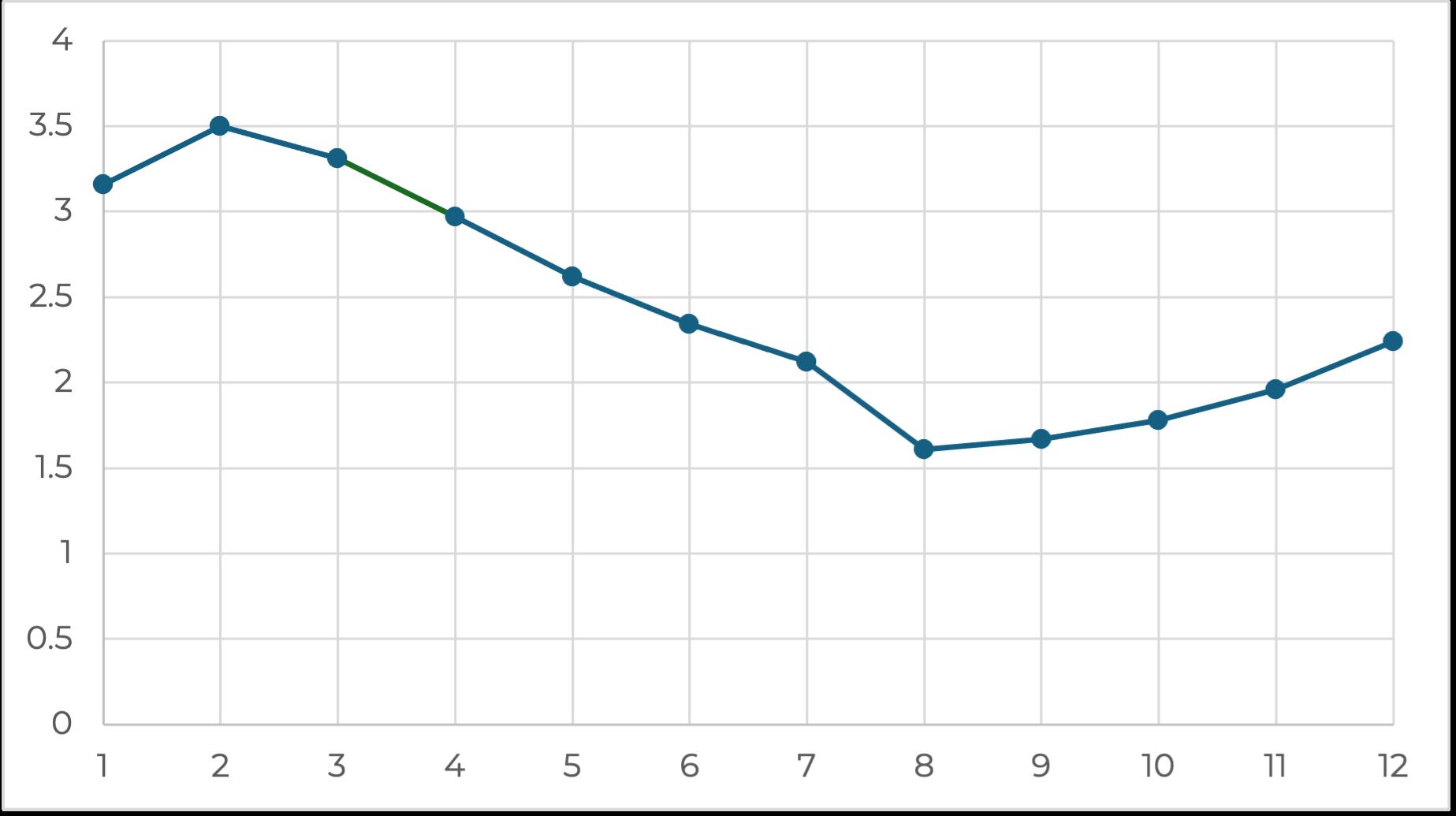
Source: Jon DeClerck, Purina Animal Nutrition
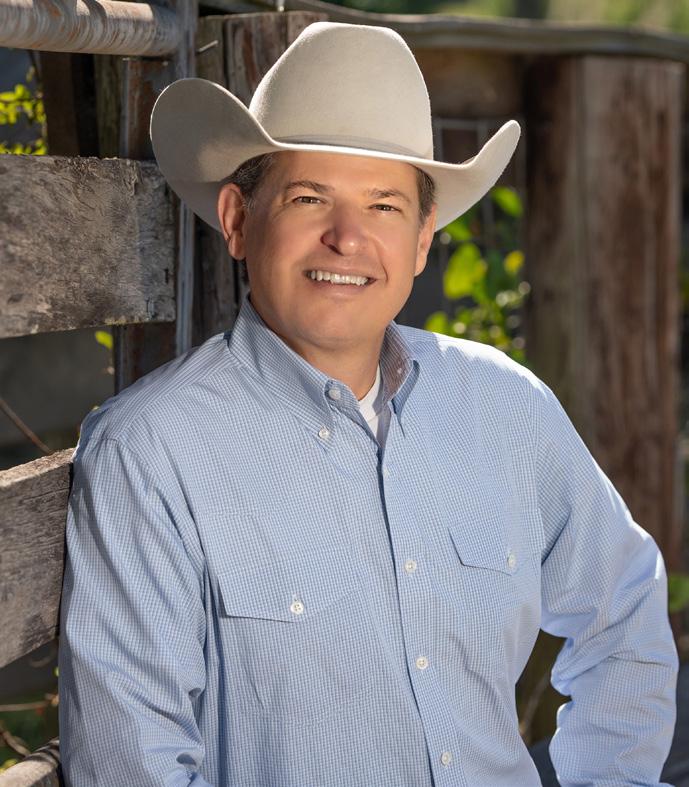
By Carl Ray Polk Jr., Texas & Southwestern Cattle Raisers Association president
Ranching is something to be proud of. It’s a tradition and foundation rooting us in hard work. Time and sweat invested today keeps this way of life alive tomorrow. This is what I love and what I want to pass on to the next generation — but that reality is fragile. A single animal disease outbreak could erase this hope not only for myself, but also for future generations.
Protecting ourselves is paramount. A core pillar of preventing a detrimental animal disease outbreak is a traceability program operating at the speed of commerce. We need traceability that allows for rapid response in the event of an outbreak and minimizes industry disruption.
The USDA Animal and Plant Health Inspection Service’s final rule for animal disease traceability takes effect Nov. 5. Livestock producers will be required to implement tags that are both visibly and electronically readable for specific classes of cattle. Understandably, many cattle raisers are approaching these new regulations with caution.
However, it’s important to put rumors fueled by cattle market commentary videos aside and set the record straight. The rule will not track your financials or your greenhouse gas emissions. The rule was not created to place additional taxes on your operation. Tags do not have GPS capabilities.
USDA’s animal disease traceability rule modernizes a decade-old regulation requiring metal clip tags for brucellosis vaccination or tuberculosis testing for specific classes of livestock crossing state lines. If you were not required to have a metal clip tag before, you will not be impacted by the new electronic ID tag now. Only sexually intact cattle over 18 months old; female dairy cattle; male dairy cattle born after March 11, 2013; and cattle used in rodeos, shows or exhibitions will be required to comply.
While Texas & Southwestern Cattle Raisers Association supports a traceability program and believes it can protect the industry, the program should never compromise the data privacy of our members. The program should work for the industry, not against it.
The current USDA animal disease traceability plan does not fully align with our expectations for data handling and storage. While USDA has assured the industry that data is not publicly available and steps are in place to restrict access to authorized government officials working on high-impact animal diseases, we are demanding more.
The responsibility for data management should not lie within USDA. Instead, we advocate for a decentralized approach where the industry has a significant role in managing and protecting its own data. This can be done through third-party groups like U.S. CattleTrace, of which Texas & Southwestern Cattle Raisers Association has been a member since the inception.
A third party would limit government access to data, releasing only necessary information if an animal disease outbreak were to occur. This infrastructure has already been developed, tested and is ready to deploy. There is absolutely no reason to spend valuable time and money within USDA recreating the wheel.
We do not take the threat of a disease outbreak lightly. This is why, for decades, we have joined industry partners in conversations about a traceability plan and process that works for all of us.
However, a failure to agree and enact an appropriate program has created an opportunity for the government to come in and attempt to fix the problem.
The choice is ours: be part of the solution or be willing to accept the consequences. We at Texas & Southwestern Cattle Raisers Association will continue to look for solutions. T C
In January 2017, U.S. Rep. Jodey Arrington became the fifth person to represent Texas’ 19th Congressional District since its formation in 1935.
Starting his third term in Congress, he continues to be an outspoken advocate for reining in federal government, promoting agriculture and energy, strengthening national security and respecting the Constitution — while serving the largest agriculture and energy district in the U.S.
Since 2019, Arrington has served on the Committee on Ways and Means. Dating back to 1789, Ways and Means has had the broadest legislative jurisdiction including tax, trade, healthcare, social security and welfare. As a committee member, prioritizing rural America’s most critical issues — agriculture, energy and healthcare — will remain his driving force. Arrington serves on the Subcommittees on Select Revenue Measures (tax), Trade and Social Security.
and comprising more than 120% of the entire economy, he believes confronting our unsustainable debt is the greatest challenge of the 21st century.
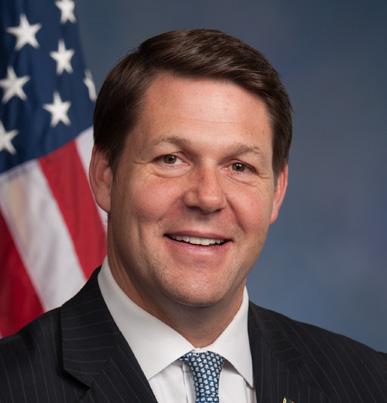
Arrington has championed legislation vital to Texas agriculture. Most recently, he introduced House Resolution 9456 titled “Protecting American Agriculture from Foreign Adversaries Act of 2024,” calling attention to transactions of agricultural working lands made by people outside of the U.S. He has also been a leader in working to resolve tax legislation detrimental to agriculture producers.
He further serves the food, fuel and fiber capital of the world by working as co-chair of the Rural Healthcare Task Force, leading a bipartisan congressional delegation on decreasing the national debt and reforming the federal budget process, and serving as co-chair of the Congressional Term Limits Caucus. He was also appointed to a second term as deputy chair of the National Republican Congressional Committee.
At the beginning of the 118th Congress, Arrington was elected to serve as the chair of the House Budget Committee. With the national debt surpassing $31 trillion
A graduate of Texas Tech University, he and his wife, Anne, have three children. T C

Special Bull Offerings
Inconjunctionwithourregularsale.Bullswillsellat10am. Bullswillbefertilitytested,meettrichrequirements,andreadytogotowork.
Thursday,December19@10:00a.m.–SanSaba
Leachman’sTexasFallStabilizerBullSale–60StabilizerBulls BooksareClosed!
Thursday,January9,2025@10:00a.m.–SanSaba
FeaturingSchaeferFarmsAngus&ShadyOakFarmCharolais&SimAngusbulls
Thursday,February13,2025@10:00a.m.–SanSaba
FeaturingMartin-BruniBrangus&STSRangerRegisteredAngusBulls
Saturday,December7@10:00a.m.–SanSaba Booksareclosed!
Saturday,January25,2025@10:00a.m.–SanSaba ConsignmentsWelcome!
WEEKLY SALES HELD AT 11:00 a.m.
Monday – Mason Thursday – San Saba
Formoreinfoonabove salesoronlineviewing andbidding,pleasecall orvisitourwebsite.
The Texas & Southwestern Cattle Raisers Association Political Action Committee, Cattle Raisers PAC, urges association members to vote in the upcoming November general election.
Available by scanning the QR code, Cattle Raisers PAC has published a list of endorsed candidates running in federal and statewide elections.

Texas & Southwestern Cattle Raisers Association members are encouraged to support candidates who will represent their interests in Austin and in Washington, D.C.
Early voting started Monday, Oct. 21, and ends Friday, Nov. 1. Election Day is Tuesday, Nov. 5.
Texas & Southwestern Cattle Raisers Association announced educational resources to support livestock producers as they prepare to comply with updated regulations on animal disease traceability.
The available resources are designed to assist cattle raisers navigating the new USDA requirements, including the use of electronic ID tags for certain classes of livestock crossing state lines beginning Nov. 5.
Texas & Southwestern Cattle Raisers Association provides important background information about the rule, answers frequently asked questions about compliance and implementation, and offers resources to help cattle raisers access free electronic ID tags.
Learn more at tscra.org/animal-disease-traceability.
Texas & Southwestern Cattle Raisers Association has opened the application window for the Cattle Raisers Convention & Expo internship held April 8 to 13, 2025, in Fort Worth. This internship program offers college students experience and knowledge, while making connections with industry leaders.
Students will build their communication and networking skills, acquaint themselves with a wide range of work departments, and gain a behind-thescenes look at hosting one of the largest agricultural event in the Southwest.
Convention internship applications are due Dec. 31 and available at tscra.org/what-we-do/students.
Texas & Southwestern Cattle Raisers Association has once again partnered with Fort Worth Stock Show & Rodeo to offer active association members free commemorative pins, granting complimentary access to the entire 23-day run of the 2025 Fort Worth Stock Show & Rodeo.
Pin quantities are limited. Once the pins run out, members will receive a pass that provides full grounds admission. Visit tscra.org to claim FWSSR Ground Pins by Dec. 16.
The Texas & Southwestern Cattle Raisers Association Leadership Development Foundation, a 501(c)(3) organization committed to future generations of land and livestock stewards and leaders, announced the application window for the TSCRA Leadership Development Foundation Working Grant Program is now open.
The program will distribute financial capital to business owners with a demonstrated interest in the beef value chain. Applications are open to entrepreneurs in Texas and Oklahoma including cow-calf operations, stockers, feeders, packing plants, large animal veterinary clinics and other industry segments.
To be eligible for consideration for financial assistance, applicants must operate a business in an economically depressed or blighted area in Texas or Oklahoma and face disadvantages.
Eligible applicants must also demonstrate the difficulty of obtaining conventional financing because of such disadvantages.
The TSCRA Leadership Development Foundation Working Grant Program was designed to support individuals establishing, operating or growing a beef business. The online application will remain open from Nov. 1 to Nov. 30.
Details about the TSCRA Leadership Development Working Grant Program including the application and eligibility requirements can be found at tscra.org/what-we-do/leadership-development-foundation.

Texas & Southwestern Cattle Raisers Association
Special Ranger Joe Aguilar Jr. testified in September before the Texas Senate Committee on Border Security on the implementation of the Attorney General’s Landowner Compensation Program, which was formed through the passage of Senate Bill 1133 during the 88th Texas Legislative Session and signed into law by Gov. Greg Abbott Sept. 1, 2023.
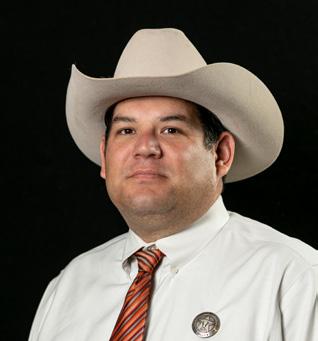
Aguilar serves District 29 encompassing Cameron, Hidalgo, Jim Hogg, Starr, Webb, Willacy and Zapata counties along the Texas-Mexico border. During his testimony, he emphasized the need for landowner protection against criminal activity as border insecurity continues to rise.
“Our membership is deeply grateful to the Texas Legislature for passing Senate Bill 1133 as it marks a crucial step forward in addressing the challenges
landowners along the Texas southern border experience,” Aguilar said.
Trespassing and property damage only scratch the surface of the hardships faced by landowners in this region. However, Aguilar called attention to the burdensome and time-consuming process a compensation program such as this can be to a landowner.
“We [TSCRA] urge the committee to consider adjustments to streamline the insurance declination process, eliminate unnecessary barriers and expand eligibility for direct payment to lessees,” Aguilar said.
Texas & Southwestern Cattle Raisers Association supports strengthening state and federal laws to better protect landowners from illegal border activities and reimbursing landowners for property damages caused by illegal border activities.
“The proposed changes would allow SB 1133 to better serve those affected by border-related damage and strengthen the partnership between landowners, lessees and law enforcement as we work together to secure our border,” Aguilar said. T C

For more than half a century, TCU’s renowned Ranch Management program has given students an edge in agricultural resource success. This unique nine-month intensive program equips graduates with real-world strategies as producers and land stewards in changing times.
Space is limited. Competitive financial aid and scholarship opportunities available. Visit ranch.tcu.edu or call 817-257-7145.
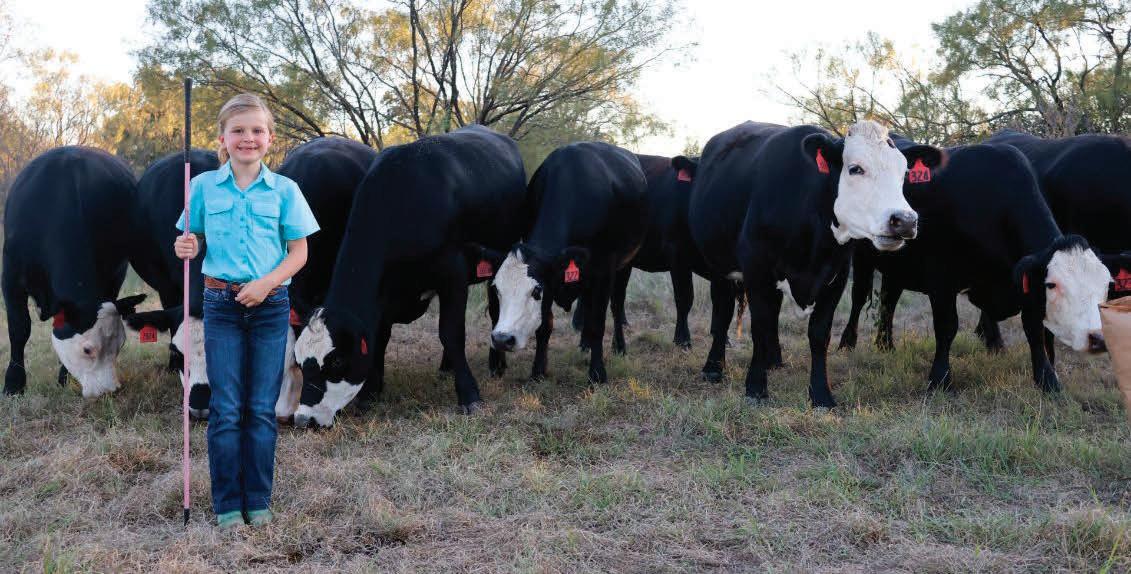

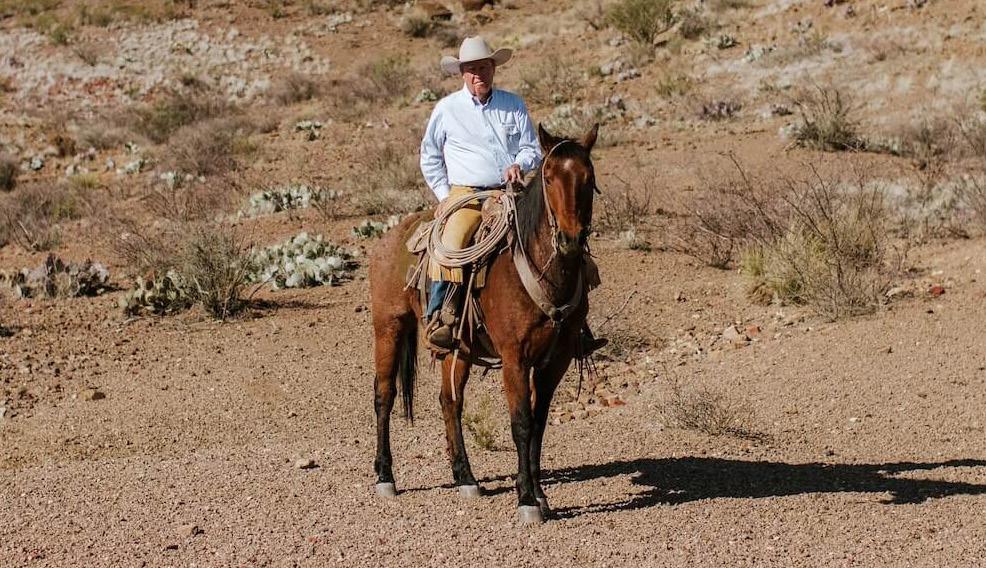
Jon Means, a fourth-generation rancher from Van Horn and past president of Texas & Southwestern Cattle Raisers Association, was honored with this year’s Texas Ranch Roundup Trailblazer Award.
Presented annually, the recognition is given to ranchers who have shown exemplary dedication to the cattle industry throughout their careers, earning the respect and admiration of their peers.
Jon said he was honored to receive the 2024 Texas Ranch Roundup Trailblazer Award, and views it as a tribute to his family’s long history in the industry.
Born in 1951 to Cole Cowden Means and Barbara Berkshire Means, he grew up deeply immersed in ranch life in the Davis Mountains. His father and grandfather, M.O. “Bug” Means, were passionate about horses, supplementing ranch income by selling polo ponies.
While Jon does not raise horses now, his love for ranching continues, with his primary focus being cattle. Today, Jon resides at the Moon Ranch in Jeff Davis County, where he raises commercial Angus cattle. He is also the owner of the H-Y Ranch in Grant County, New Mexico.
A 1974 graduate of Texas Christian University, Jon serves as vice chair of the National Finance Credit Corporation of Texas and Texas Livestock Marketing Association. He is also a board member and former regional vice president of the National Cattlemen’s Beef Association, and has served six years on the Texas Beef Council board.
Texas A&M University-Kingsville recently recognized this year’s Distinguished Alumni, including Presnall Cage, a Texas & Southwestern Cattle Raisers Association honorary director.
As the university’s most prestigious honor, the Javelina Alumni Association names Distinguished Alumni in recognition of their abundant success professionally and personally, through which they have positively represented and brought honor to their alma mater.
Cage was born in Corpus Christi and grew up in Falfurrias. He graduated from Texas A&I with a bachelor’s degree in animal science and was a charter member and officer of the Sigma Chi Fraternity.
He operates the family ranch and raises commercial Herefords and crossbred cattle. He was elected as a director of Texas & Southwestern Cattle Raisers Association in 1977 and has served continuously since, recently becoming an honorary director.
Joining Cage as 2024 Distinguished Alumni recipients are Javier Peña and Dr. Tadeo Reyna.
International Brangus Breeders Association announced Rick Cozzitorto as their new executive vice president. Cozzitorto replaced Darrell Wilkes, who retired after a five-year stint in the position.

“Our association is in a strong position, and we are excited to be bringing Rick on board to continue our upward trends,” said Shiloh Hall, a Brangus breeder from Oklahoma and the association’s current president. “We believe we have a very compelling value proposition for commercial cattle producers in the heat zones of this country, and internationally, and Rick’s skill set is a great fit for our next steps forward.”
Cozzitorto brings 35 years of experience to International Brangus Breeders Association. He served as a regional manager for American Angus Association early in his career, and he parlayed that into a career in livestock publishing and agribusiness, mostly in the animal health industry.
“I am very excited about the opportunity to further advance Brangus in the U.S. and international markets,” Cozzitorto said. “The stage has been set for significant growth, and I look forward to being part of it.”
Gov. Greg Abbott appointed Jerry “Kenny” Weldon II to the Brazos River Authority Board of Directors for a term set to expire on Feb. 1, 2027.
The board formulates plans deemed essential to the operation of the district and its administration in the control, storing, preservation and distribution of storm and floodwaters of the Brazos River and its tributary streams. In addition, the authority may discover, develop and produce groundwater in the Brazos River Basin for the use of its customers.
Weldon, of Stephenville, is the senior director of government programs for Collier Geophysics LLC. He retired as a colonel following a 26-year career with the U.S. Air Force, where he was a civil engineer officer. He served three terms as the Mayor of Stephenville from 2012 to 2018.
He is a member of Texas & Southwestern Cattle Raisers Association, Texas Hereford Association, the Society of American Military Engineers, Turnbow-Higgs American Legion Post 240 and Gideons International –Stephenville Camp.
Exports of U.S. beef continued to build momentum in July, according to data released by USDA and compiled by the U.S. Meat Export Federation.
July beef exports totaled 110,419 metric tons, up 7% from a year ago and the second largest of 2024. Export value climbed 12% to $910.9 million, also the second highest this year.
For January through July, beef export value increased 6% from a year ago to $6.13 billion, despite a 2% decline in volume, which totaled 754,152 metric tons.
“It is very gratifying to see demand for U.S. beef trending upward in Asian markets, with Japan and
Taiwan leading the way and an outstanding showing in the ASEAN region,” said U.S. Meat Export Federation President and CEO Dan Halstrom. “U.S. beef has weathered severe headwinds in Asia and especially in Japan, but the outlook for the remainder of the year is encouraging. July was another impressive month for Mexico, which continues to display excellent demand for an expanding range of U.S. beef cuts and variety meats.”
American Angus Association and Angus Genetics Inc. released two new research expected progeny differences. The rEPDs characterize teat size and udder suspension traits and are based on phenotypic data collected by association members, pedigrees and genotypes in a single-step genetic evaluation model.
Udder structure plays an important role in beef production, contributing to calf survival, calf growth and cow longevity.
Teat size, or TEAT, and udder suspension, UDDR, rEPDs expand the suite of selection tools available to Angus breeders to improve maternal function and the productivity of their herds.
More than 148,000 phenotypic records for each trait were collected from 87,000 cows to contribute to the dataset for the rEPDs, with more to be added each calving season.
The records are collected by members within 24 hours of a calving event. Females are given an individual score for both teat size and udder suspension using scales from 1 to 9.
The three rEPDS are anticipated to be released as weekly production EPDs during the annual evaluation updates in late spring 2025. Research on how these three new traits should be incorporated into Maternal Weaned Calf Value Index, or $M, is currently ongoing with potential updates coming next spring. T C
In key locations across Texas, Oklahoma and New Mexico, Helena has branches staffed with people who can provide landowners, ranchers and wildlife enthusiasts with all their management needs.
For more information, contact your local Helena representative or visit HelenaAgri.com.
Nutrition strategies will be in the spotlight during the upcoming Ranching 101.
Join Texas & Southwestern Cattle Raisers Association for the next Ranching 101 session at 1 p.m., Tuesday, Nov. 19.
During the hour-long Zoom webinar, participants will learn about cattle nutrition, herd profitability and ways to optimize feed efficiency, improve growth rates and enhance overall herd performance. Speaker Robert Barrett will cover how proper nutrition drives sustained success and maximizes returns in the beef cattle business.

Interested association members can register by scanning the QR code below.
Barrett holds animal science and ruminant nutrition degrees from Texas A&M University in College Station and Amarillo. He began his career as a nutritionist, specializing in small stocker and feedyard operations in southeast Kansas and northeast Oklahoma.
Since his return to Texas, Barrett has spent nearly 24 years with Producers Cooperative, focusing primarily on cow-calf and stocker nutrition while providing expertise for various other species. Additionally, he plays a key role in quality control, assurance and feed safety, ensuring optimal performance and safety standards.
Ranching 101 webinars provide participants with practical, sound guidance on the tools and equipment needed to get started in ranching or land ownership. The webinars are available online on the third Tuesday of every month.
Registration is complimentary for any Texas & Southwestern Cattle Raisers Association member. Visit tscra.org to learn more. T C
Sign up:

Ranching 101 is presented by:



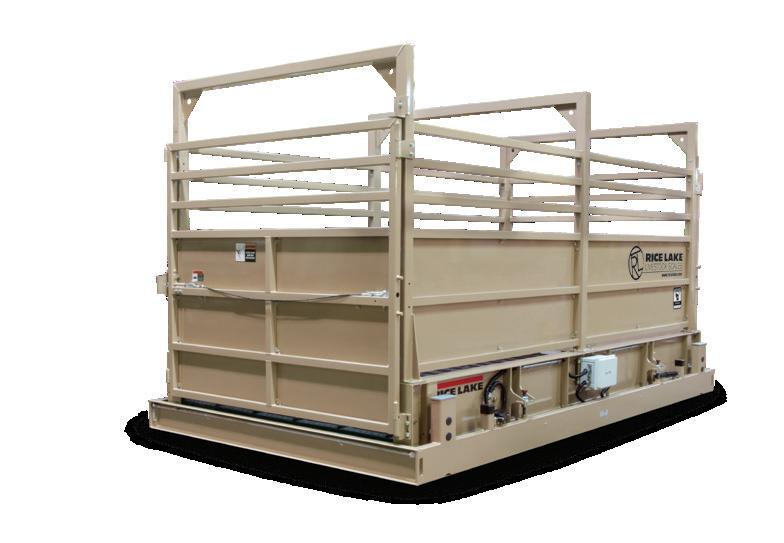
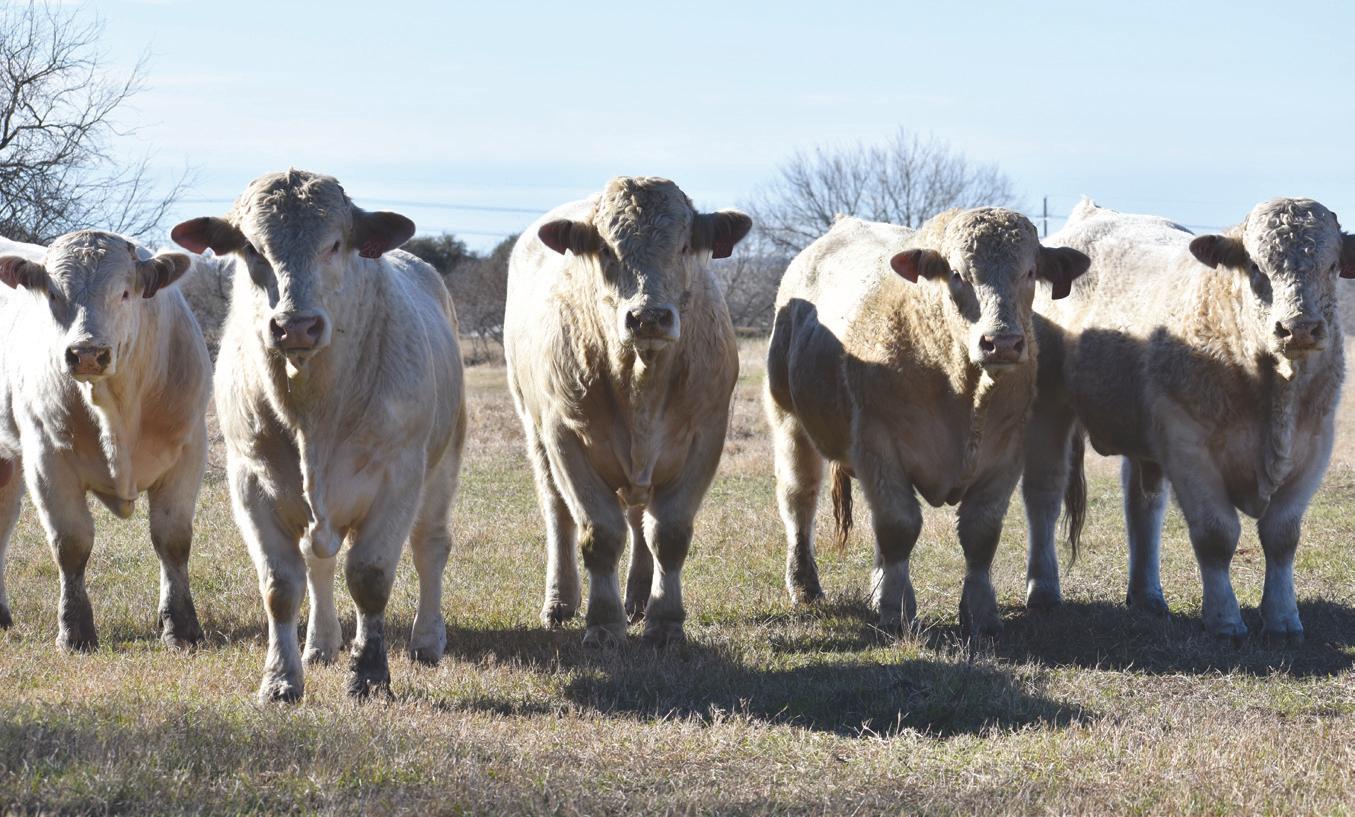
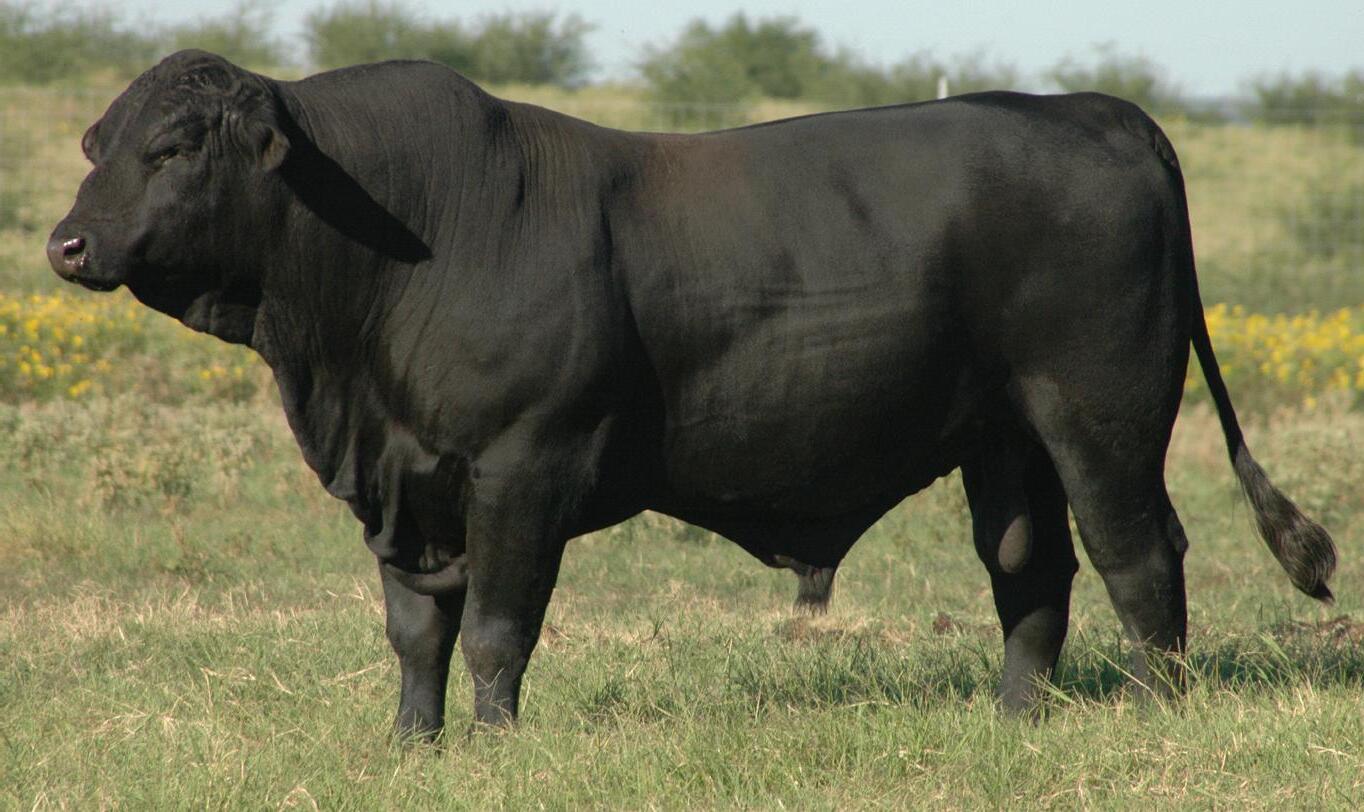
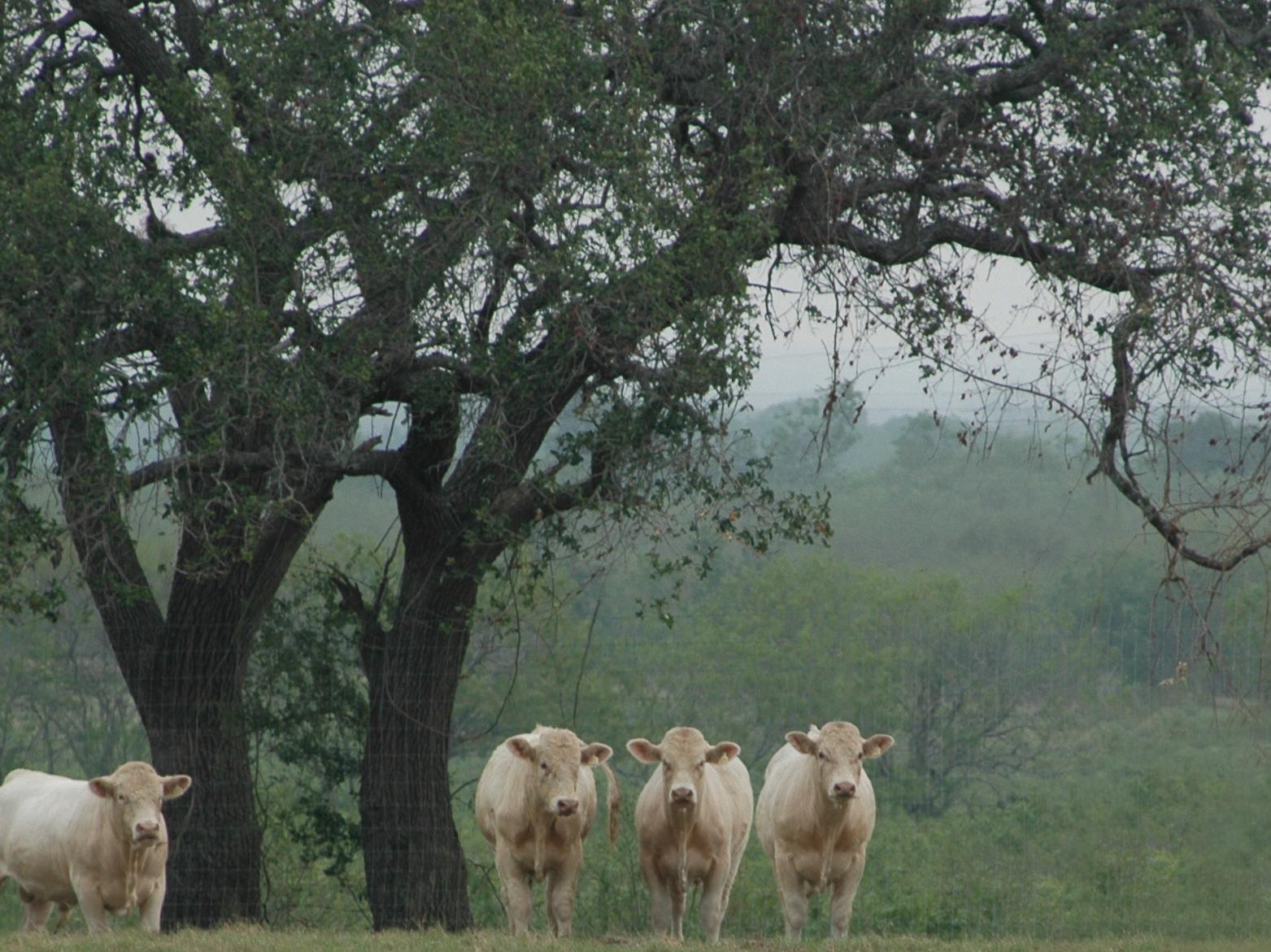
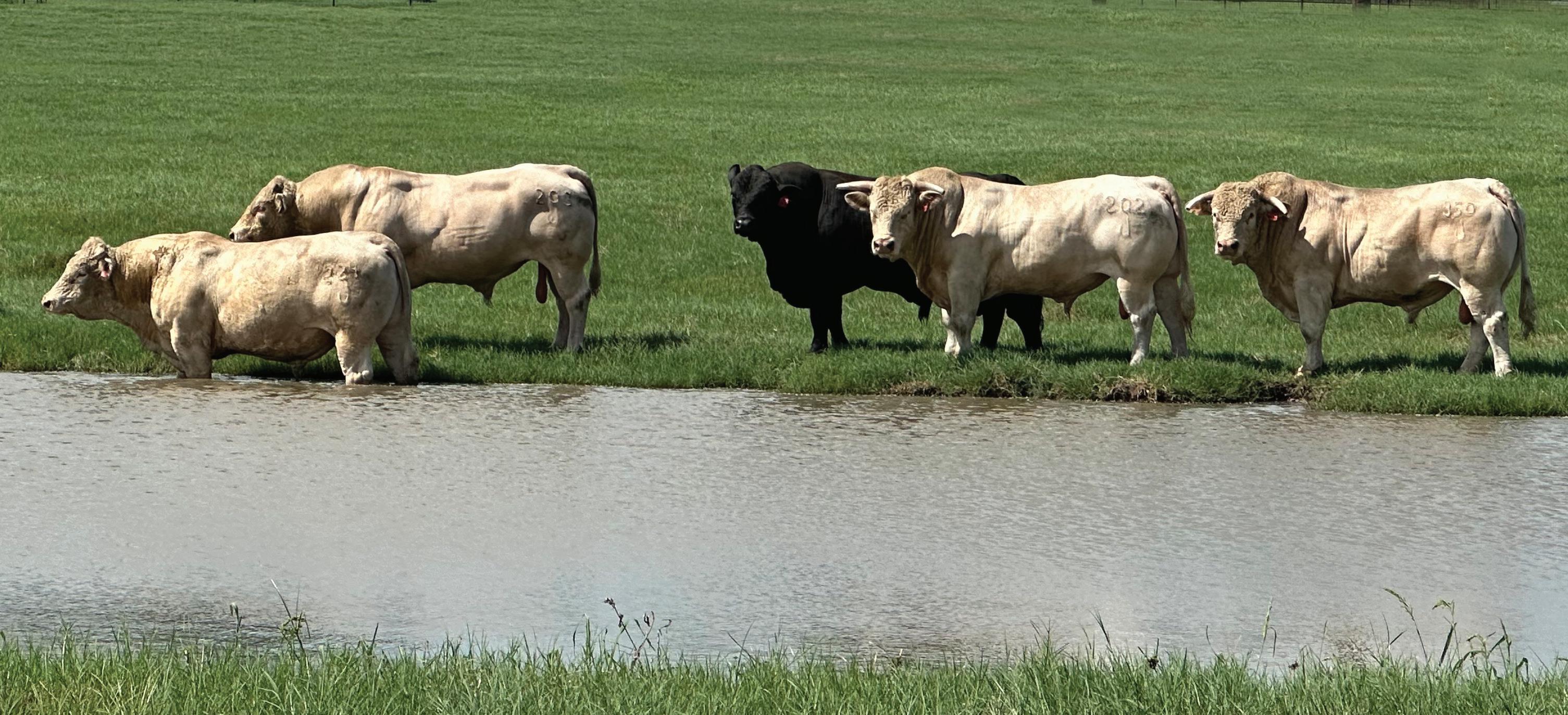
Join or renew your membership today.
Member benefits include the support of TSCRA Special Rangers, government relations advocacy, educational programs, networking and social events, member-only discounts, The Cattleman magazine and phone app, and insurance services.

To learn more about membership, scan the code above or visit TSCRA.org.
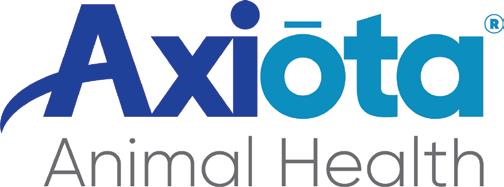
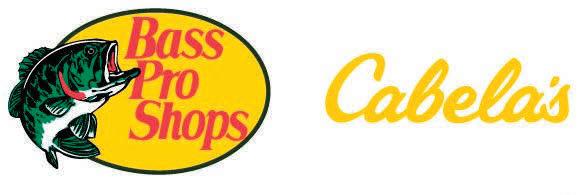

The TSCRA Business Partner Program allows companies and organizations whose values and mission align with TSCRA to demonstrate their support to the cattle industry. Thank you to our current business partners.
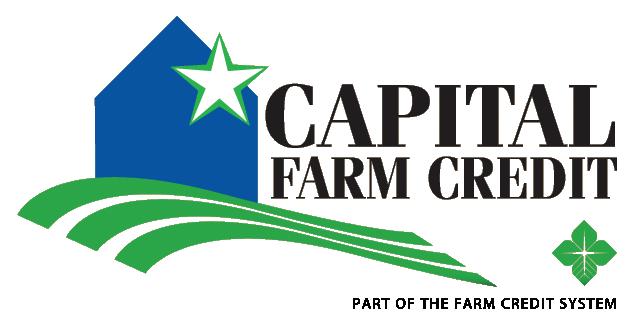
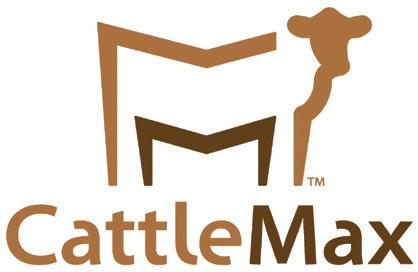
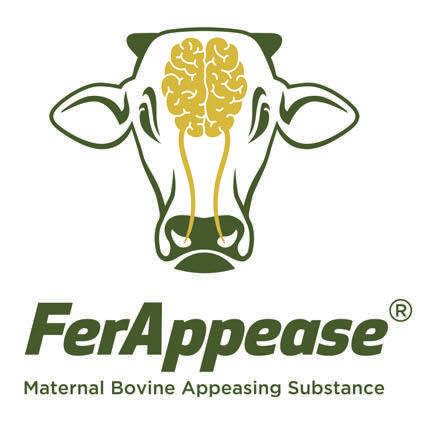





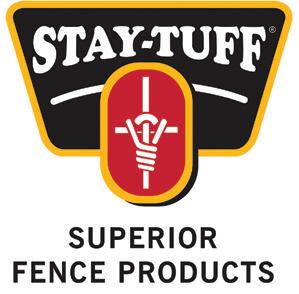
Two bred heifers missing in Lipscomb County.
Texas & Southwestern Cattle Raisers Association Special Ranger Ben Eggleston reports two black, baldy or motley-faced bred heifers missing from a pasture east of Follett. They are branded with a “3” on their left hip and a “- 5” on their left leg. They were last seen Aug. 12. Anyone with information on this case is urged to contact Eggleston at 806-852-4741.
Gooseneck stock trailer and several miscellaneous items stolen in Grady County.
Texas & Southwestern Cattle Raisers Association
Special Ranger Cody Hyde reports a metallic silver, 32foot Gooseneck stock trailer, galvanized square tubing and several miscellaneous items stolen from a property off East County Road 1554 in Lindsay. The items are described as:
• Metallic silver, 32-foot Gooseneck stock trailer with three axles and a metal top. The roof has minor damage approximately four feet from the first rear support beam.
• Approximately 1,800 feet of 2x2 galvanized square tubing, pre-cut in 8-, 10- and 12-foot posts.
• A 5,000-watt red and grey generator.
• A dual-tube style air compressor with a cut, extended power cord and black tapered air hose.
• A bandsaw on metal stand.
• A green push mower. The suspect(s) cut the chain and lock from the gate to enter the property during the night of Aug. 10. Anyone with information on this case is urged to contact Hyde at 918-315-2925.
Kubota tractor missing in Kiowa County, Oklahoma.
Texas & Southwestern Cattle Raisers Association Special Ranger John Vance reports a 2008 Kubota L 4400 Tractor with a front-end loader missing from a property off West 2250 in Roosevelt, Oklahoma. The
serial number on the tractor is 56048, and it was last seen July 28. Anyone with information on this case is urged to contact Vance at 903-438-6251.
Equipment stolen in Parker County.
Texas & Southwestern Cattle Raisers Association Special Ranger Zach Havens reports a Frontier Rotary Cutter, John Deere tractor and front-end loader stolen from a property off FM 1189 in Weatherford. The stolen items include: a Frontier Rotary Cutter, serial No. 1XFRC20XVM0176080; 4044 John Deere Tractor, serial No. 1LV4044MHMM114862; and a John Deere front-end loader bucket 400E, serial No. 1P400EXHMX061629. The equipment was stolen between Aug. 2 and 4. Anyone with information on this case is urged to contact Havens at 254-396-1747.
Black Wagyu bull missing in Fannin County.
Texas & Southwestern Cattle Raisers Association Special Ranger Brad Oliver reports a black Wagyu bull missing from a pasture off Fannin County Road 2855, north of Honey Grove. The 11-month-old bull weighs 500 pounds and has a yellow ear tag with No. 2392 in the right ear and a green ear tag with the owner’s contact information in the left ear. He was last seen July 27. Anyone with information on this case is urged to contact Oliver at 903-328-8023.
Cattle missing in Smith County.
Texas & Southwestern Cattle Raisers Association Special Ranger Larry Hand reports three black baldy cows and three black cows missing from a pasture off CR 4105 east of Lindale. The cows weigh approximately 900 to 1,000 pounds and are branded with a “TW on Ih” or “3H connected” on either hip. They were last seen Aug. 22. Anyone with information on this case is urged to contact Hand at 903-571-3488.
Cattle missing in Houston County.
Texas & Southwestern Cattle Raisers Association Special Ranger Darrel Bobbitt reports three black Brahman-Angus-cross yearlings missing from a property off CR 2180, west of Grapeland. They have a “WP” and a “23” branded on their left side. They were last seen Aug. 15. Anyone with information on this case is urged to contact Bobbitt at 936-222- 2144.
Bull missing in Brazoria County.
Texas & Southwestern Cattle Raisers Association Special Ranger Brent Mast reports a black bull missing from a pasture off County Road 18 near Damon. The bull has a white ear tag in his left ear with No. 114 and a “MP connected” over a “38” over a “K12”, branded on his left hip. He was last seen July 7 before Hurricane Beryl made landfall.
Equipment stolen in Milam County.
Mast also reports a Kubota tractor, Polaris Ranger XP 1000 UTV, Polaris Ranger 570 EFI UTV, Kubota zero-turn mower and numerous miscellaneous items stolen from a property off CR 353 in Milam County. The items are described as:
• 2023 Kubota L3902DT 39 horse-power tractor with front-end loader, last four numbers of the VIN 8598;
• 48-inch Standard Series quick attach pallet fork frame, last four numbers of serial No. 8722, and a Land Pride post hole digger, last four numbers of serial No. 8180;
• 2025 Polaris Ranger Crew XP 1000 six-person UTV, last four numbers of VIN, 2425;
• 2015 Polaris Ranger 570 EFI six-person UTV, last four numbers of VIN, 0421; and
• 2023 Kubota zero-turn 48-inch deck mower, last four numbers of VIN, 8181.
During the night of Sept. 6 and morning of Sept. 7, suspect(s) cut the owner’s fence to steal the items.
Anyone with information on these cases is urged to contact Mast at 936-714-6619.
Equipment stolen in Jackson County.
Texas & Southwestern Cattle Raisers Association Special Ranger Robert Fields reports a Kubota SVL95-2 skid steer and a Miller Bobcat 225 welding machine stolen from a property off FM 530 in Edna. The items are described as:
• Miller Bobcat 225 welding machine mounted on a skid frame. The frame had toolboxes containing welding and cutting tools, oxygen and acetylene bottles, and about 250 feet of 1/0 welding leads.
• Kubota SVL95-2 skid steer, serial No. KBCC0953VK1D46776, with approximately 3,500 hours. Additionally, the skid steer had a Loftness hydraulic cooler on the roof and pallet forks.
On the night of Aug. 28, suspect(s) driving a black Buick Enclave cut the gate lock to enter the property. Anyone with information on this case is urged to contact Fields at 361-207-5207.




Angus cow missing in Mason County. Texas & Southwestern Cattle Raisers Association Special Ranger Todd Jennings reports a black Angus cow missing from a pasture off Union Road near Art.
The cow has an orange ear tag with No. 85 in her right ear and a “4 Bar S” branded on her left hip. She was last seen in May.
Calf missing in Brown County.
Jennings also reports an 8-month-old Charolais cross heifer missing from a pasture off CR 407 near May. The calf has an orange left ear tag and was last seen Aug. 16.
Red Brangus bull missing in Llano County.
The special ranger reports a red Brangus bull missing from a pasture off CR 412 in Llano. The bull is branded with a “Rafter 2” on his right shoulder, and a “Circle 4” with a “7” and “8” branded on his right hip. He was last seen Aug. 19.
Three black Angus calves missing in McCulloch County.
Jennings also reports three 3-month-old black Angus calves missing from a pasture off U.S. Highway 377, nine miles north of Brady. Two of the calves have red ear tags in their left ear with No. 80 or No. 62 and an under-bit notch in their right ears. The third calf is unmarked. They were last seen April 19.
Beefmaster bull missing in Brown County.
The special ranger reports a red Beefmaster bull missing from a property off County Road 211 near Brookesmith. The bull is branded with a “Hat B” on his left hip. He was last seen in August. Anyone with information about these cases is urged to contact Jennings at 830-997-7585. T C
TSCRA offers a cash reward for information leading to the arrest and/or grand jury indictment of individuals for theft of livestock or related property. Anonymity is guaranteed. To provide information, call the Operation Cow Thief tip line at 817-916-1775.
With everything you need to accomplish in a day, insurance protection for your business might be the last thing on your mind. However, you do recognize that a one-size-fits-all insurance policy isn’t the smart way to run a business. Our AGRIBUSINESS INSURANCE PROGRAM can provide you with a flexible farm package that allows you to customize a policy to match your individual needs.
CONTACT ME TO FIND OUT MORE.
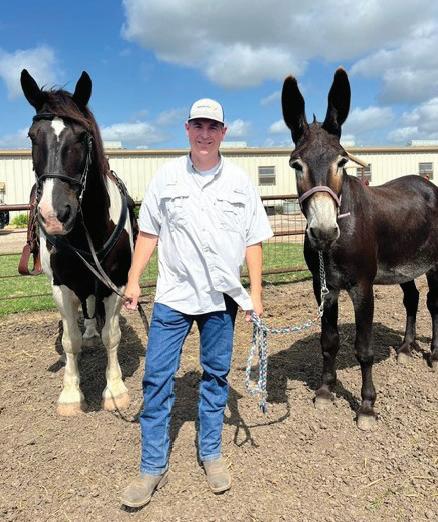
Jonathan Killian AGENT
330 N 8th St, Ste 208 Midlothian, TX 76065 Jonathan.Killian@american-national.com 214-903-2255 www.AmericanNational.com
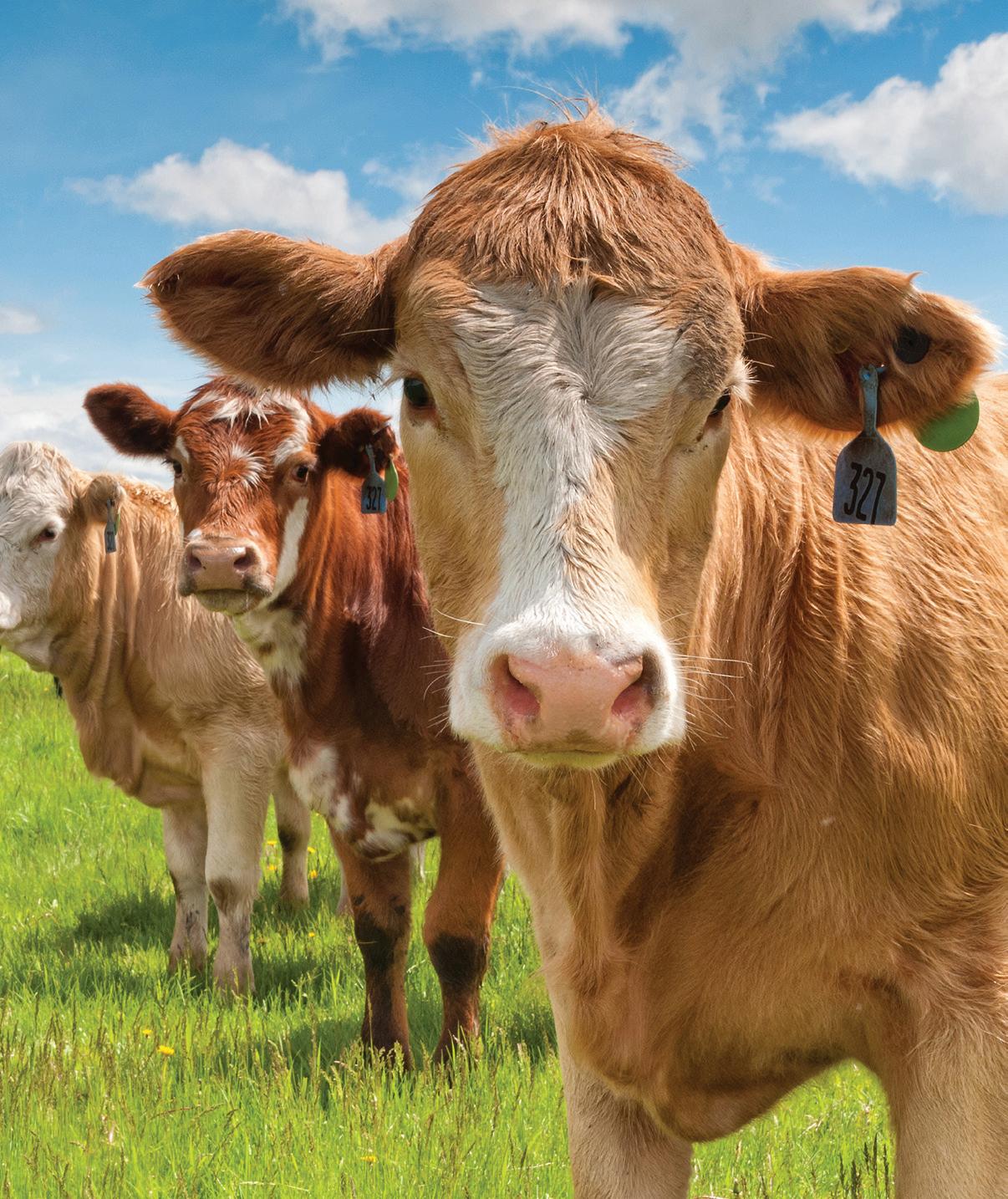
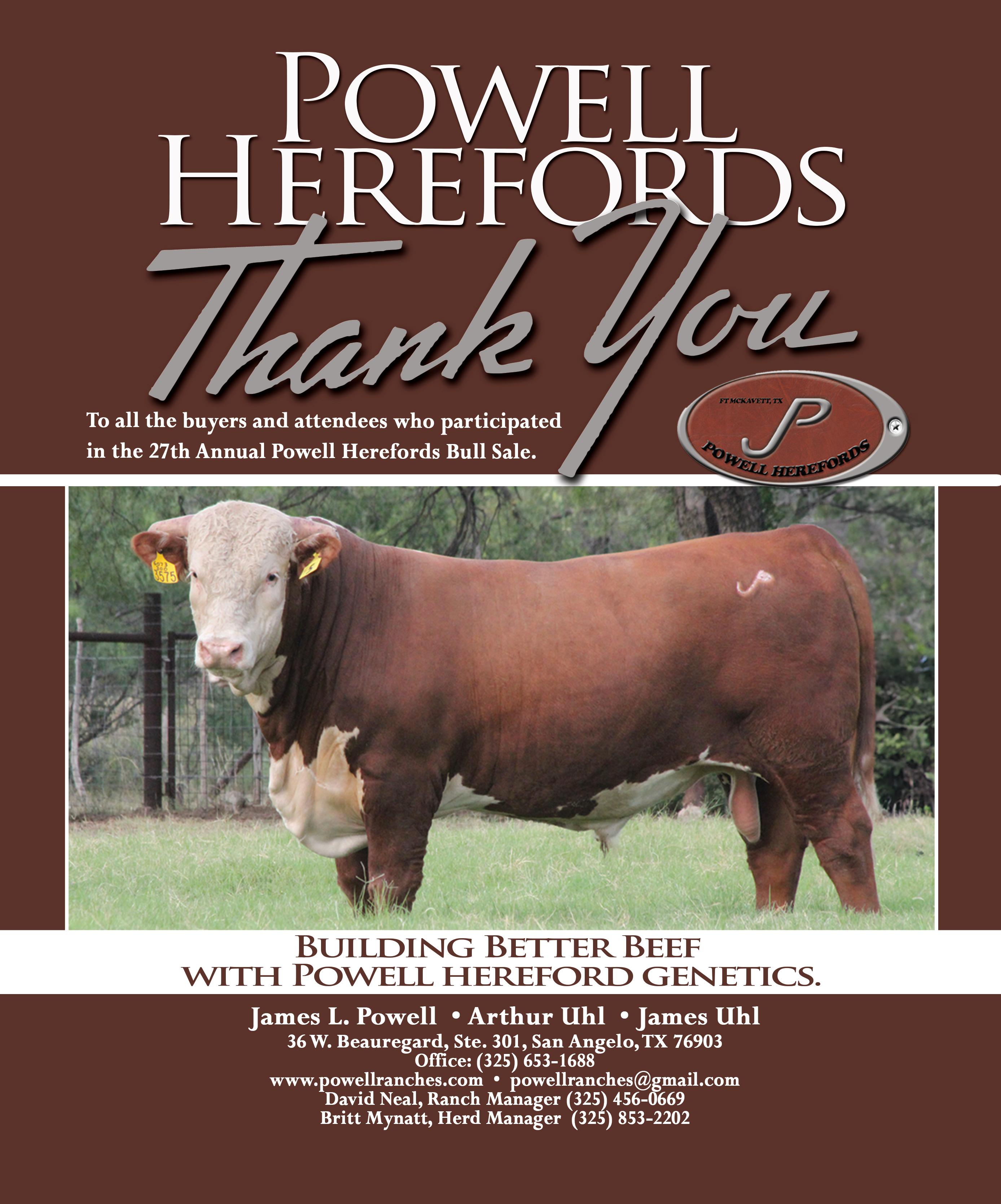
Date of Birth: April 29, 1978
Offense: Theft of Livestock < $150,000
Date of Offense: Jan. 27, 2022
Victim: Frank Griffin
Location of Offense: Caldwell County
Trial Date: June 3, 2024
Trial Court: 421st District Court
Plea: Guilty
Sentence: 7 years, probation
Fine: $1,000
Restitution: $3,308.86
TSCRA Special Ranger: Kenny Murchinson T C
U.S. Postal Service
Statement of Ownership, Management and Circulation
1. Publication title: The Cattleman
2. Publication number: 095000
3. Filing date: Sept. 27, 2024
4. Issue frequency: Monthly
5. Number of issues published annually: 12
6. Annual subscription price: $60
7. Complete mailing address of known office of publication: 1301 W. 7th Street, Fort Worth, Tarrant, Texas 76102-2651
8. Complete mailing address of headquarters or general business office of publisher: P.O. Box 101988, Fort Worth, Texas 76185
9. Full names and complete mailing addresses of publisher, editor and managing editor: Publisher – Texas & Southwestern Cattle Raisers Association; Editor – Jaclyn Roberts Parrish; Managing editor –Jena McRell; P.O. Box 101988, Fort Worth, Texas 76185
10. Owner: Texas & Southwestern Cattle Raisers Association –P.O. Box 101988, Fort Worth, Texas 76185
11. Known bondholders, mortgages and other security holders owning or holding 1% or more of total amount of bonds, mortgages or other securities: None
12. Tax status: Not applicable
13. Publication title: The Cattleman
14. Issue date for circulation data below: September 2024
15. Extent and nature of circulation. Total number of copies:
• Avg. no. copies each issue during preceding 12 months, 14,900.
• No. copies of single issue published nearest to filing date, 14,735.
• Free or nominal rate distribution: avg. 321; single issue 288.
• Total distribution: avg. 14,876; single issue 14,735.
• Percent paid: avg. 97.84%; single issue 98.05%.
16. Paid electronic copies: avg. 27,917; single issue 27,917.
17. Publication of statement of ownership: Nov. 1, 2024.
18. Signature and title of editor, publisher, business manager or owner: Jaclyn Roberts Parrish, editor-in-chief, Sept. 27, 2024.


PROTECT YOUR BOTTOM LINE AGAINST REDUCED APPETITE AND WEIGHT LOSS.

Stress happens every time cattle are handled, transported or commingled. Cortisol levels increase from stress impacting appetite, health and weight gain. Studies demonstrate FerAppease® reduces the impact of stress on calves treated:*
• Reduced cortisol levels
• Improved appetite
• Increased weight gain
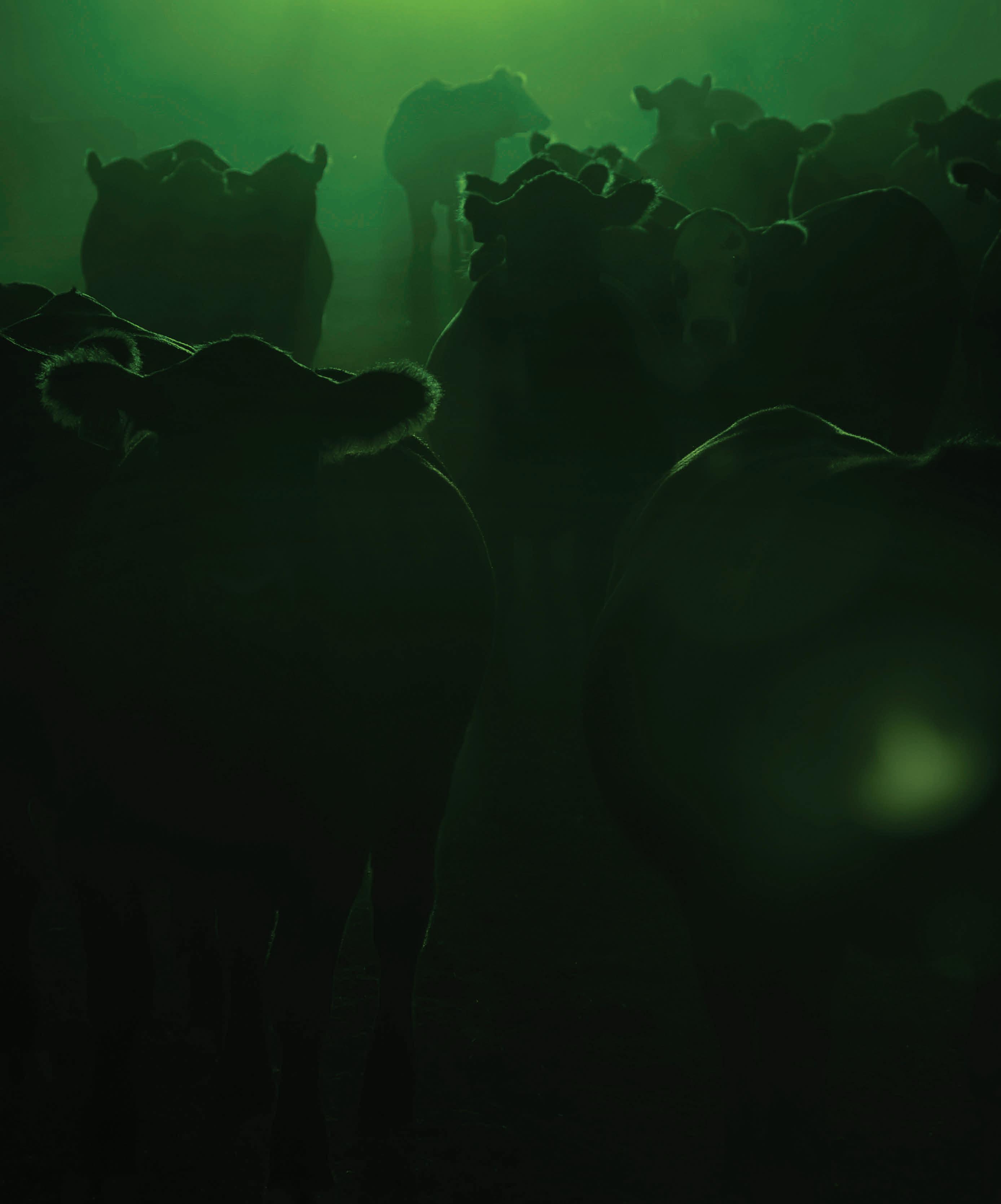
• Improved immunocompetence
• Improved health response, better recovery
• Decreased mortality
*Conducted by Dr. Reinaldo F. Cooke, Texas A&M University
HEALTHIER & HEAVIER CALVES = MORE PROFIT



Ranch advisor breaks down a common question.
By Laura Brenner
Photos courtesy of Noble Research Institute
One of the most common questions ranchers ask Jim Johnson is how to supplement grazing needs while transitioning to regenerative practices.
Instead of baling or buying hay, Johnson, senior regenerative ranching advisor at Noble Research Institute, suggests adding fall cover crops to your grazing plan.
From a grazing perspective, there are many reasons to add fall cover crops to pastures, especially if you want to reduce your reliance on hay. But these cool-season cover crops add more to your ranch than grazing days. They can boost soil health, increase plant diversity and attract pollinators and other beneficial insects.
“In the first year, you may see an increase in insects and beneficial animals,” Johnson says. “But it may take a few years for a noticeable increase in earthworms and water retention or infiltration rates.”
Noble’s Red River Ranch began incorporating fall cover crops a couple of years ago. Ranch Manager Kevin Pierce
plants cool-season crops in December and grazes them in February and March, when his warm-season pastures are dormant.
Pierce adopted this practice for soil health benefits, but Johnson believes there’s an economic benefit, too. It’s a conversation that perks up ears in the Noble Land Essentials courses he teaches.
“The economics would be a lot better, for one, because you’re not paying to cut, rake, bale and haul hay off, then haul it back and feed it [to the cattle],” he says. “You don’t have the shrink from it decomposing in a field, or the capital expenditure if it’s in a barn for storage.”
But before hauling out the planting equipment, Johnson says it’s important to know why you are planting the cover crop — and how you plan to use it.
“How does that grazing field fit into the rest of your grazing plan?” he asks. “Does it match a time when you have a forage need and allow you to reduce hay feeding?
“Maybe instead of a cover crop, think of it as a second forage crop. I think it can still provide a lot of the same benefits to the ecosystem if we manage it properly when you graze a cover crop.”
If you know why you are planting the cover crop, then you can begin to determine the right crop — or mix of crops — to plant.
For example, a cover crop to increase plant diversity and add forages to your grazing plan might be a specific mix of grasses and legumes, while a cover crop to break up compacted soil or attract pollinators will focus on plants with deep root systems or flowering plants, respectively.
Johnson recommends connecting with a neighbor who uses cover crops or contacting a regional Cover Crops Council for more information about what works well in your area. If local producers aren’t an option, he suggests starting with a seed company website or catalog. There are many good ones available, but his preference is Green Cover, based in south-central Nebraska.
“Many seed company websites have some kind of interactive tool to help producers determine the right mix for their operation,” Johnson says. “You might have to tweak their recommendation, but it gets folks started on a good path.”


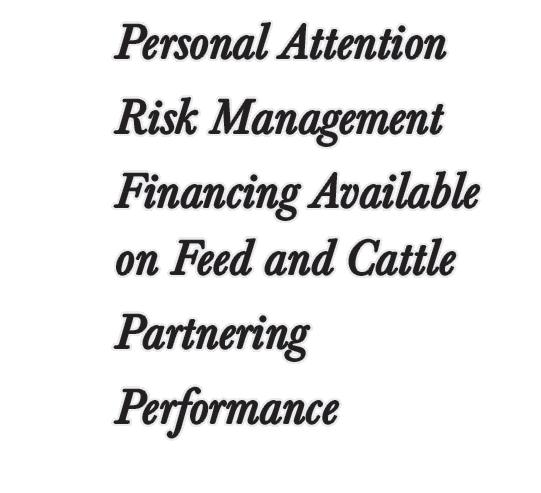







The easiest way to integrate a fall cover crop is to let the first frost stop the growth of warm-season grasses, then plant the cool-season cover crop. Johnson acknowledges that access to a no-till drill, the tool he believes is the best way to establish a crop, can be limited for many ranchers.
“You can broadcast or tread in with cattle, but it’s not as dependable and predictable as a no-till drill,” Johnson says. “Though, if you can get some good rain right after planting, you might get closer.”
He also points out that broadcast seeding rates may need to be higher than those recommended when using a no-till drill.
While he knows ranchers may not like hearing this, Johnson often responds to requests for specific covercrop advice or recommendations with, “It depends.”
He knows every ranch is unique and every rancher employs a different philosophy to achieve their goals. Generally, he encourages producers to experiment on a small section of their pasture to determine what works best for them. T C

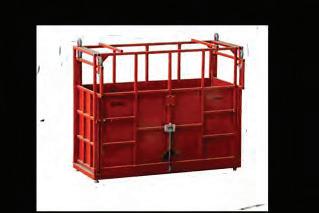



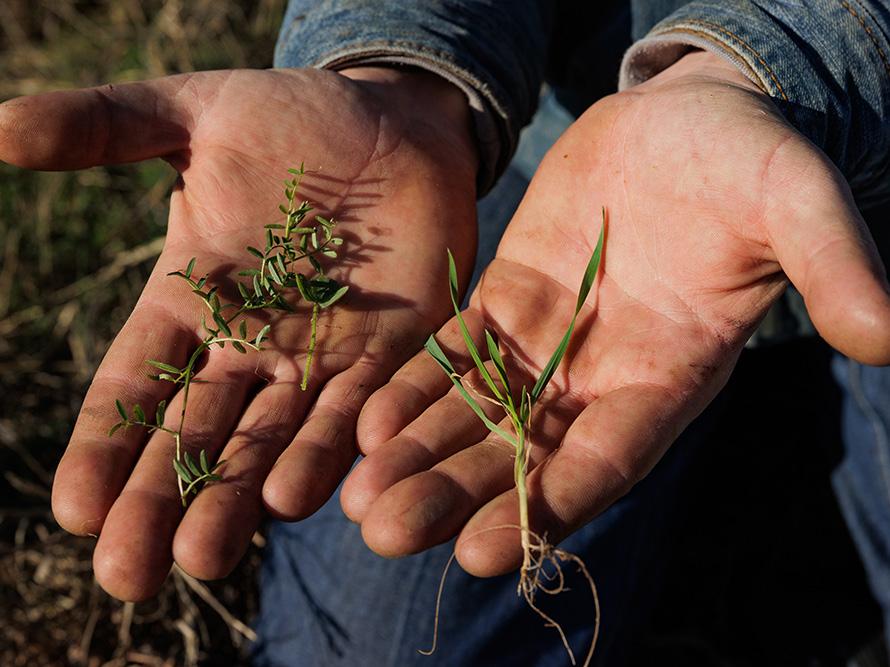

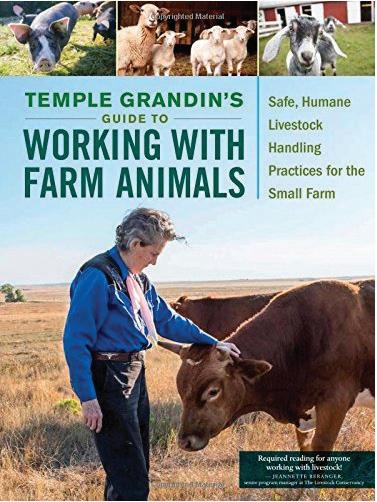


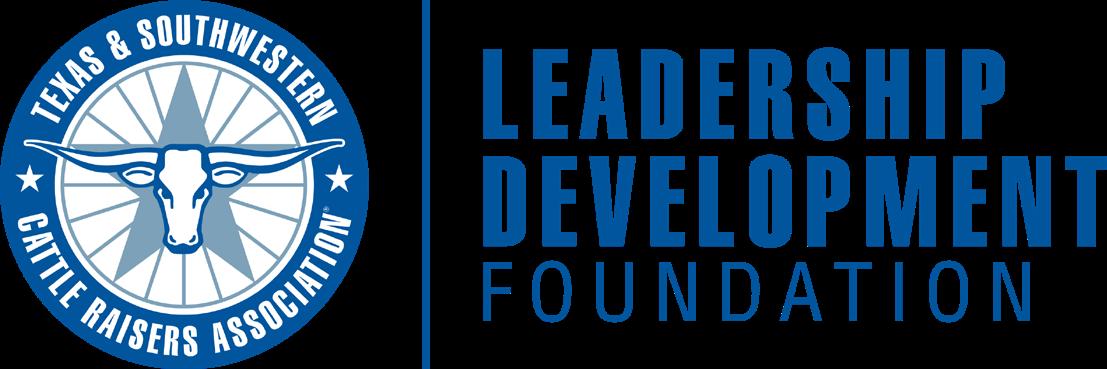
Financial capital to support individuals establishing, operating or growing a beef business.

TSCRA Leadership Development Foundation Working Grant Program is now accepting applications from Texas and Oklahoma entrepreneurs in the beef value chain seeking financial support in economically disadvantaged areas.
Apply by Nov. 30 to establish or grow your beef business.

LEARN MORE

Late-flowering Boneset (Eupatorium serotinum)
By Kent Ferguson
Anative, warm-season perennial forb, Late-flowering Boneset grows in most of the South, except arid regions like far West Texas. It is often found along stream banks and riparian areas.
Late-flowering Boneset:
• Has a single erect, hairy stem up to 6 feet tall.
• Has opposite branches in its upper regions that form large, white-flowering heads.
• Produces numerous quarter-inch flowers, which form in small clusters with several bunching together to form a flat-topped terminal mass that gives the plant the large-flowering appearance.
• Has 1- to 4-inch long, gray-green, opposite leaves that are stalked, lanceolate and have three main veins at the base, with a tapered apex and toothed margins.
Late-flowering Boneset is a rhizomatous plant that forms large colonies and can be an asset to streambank stabilization. It is not grazed or consumed by domestic livestock or wildlife. Its greatest value is being used by a number of pollinators.
Late-flowering Boneset can be quite a sight in fullbloom with its striking white flowers. T C
Kent Ferguson, a retired rangeland management specialist from the USDA Natural Resources Conservation Service, provides plant identification photo stories to help ranchers
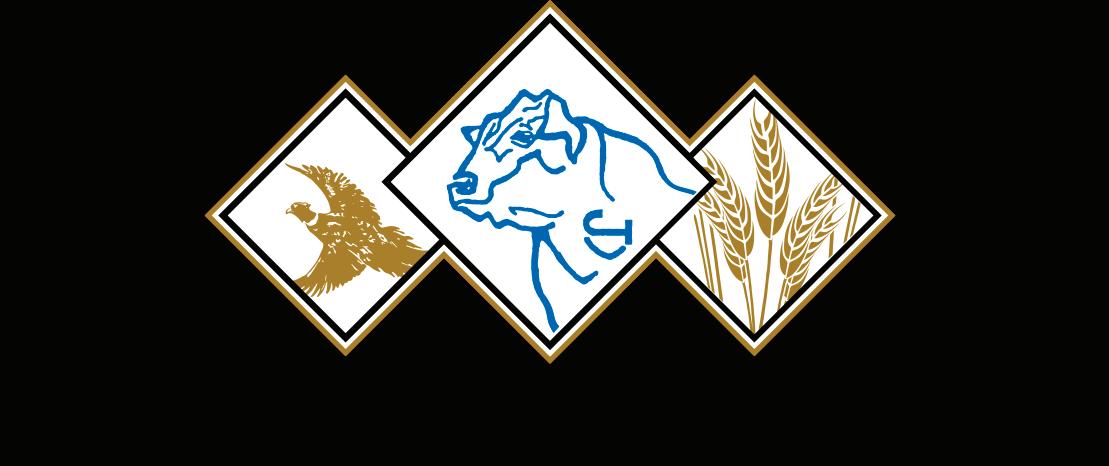
Our Angus Smar tBulls® are mature. They can breed more cows. They can handle the heat.
A n d , t h e y d o n ’ t n e e d p a m p e r i n g . 1 - 8 0 0 - 5 4 8 - 2 8 5 5
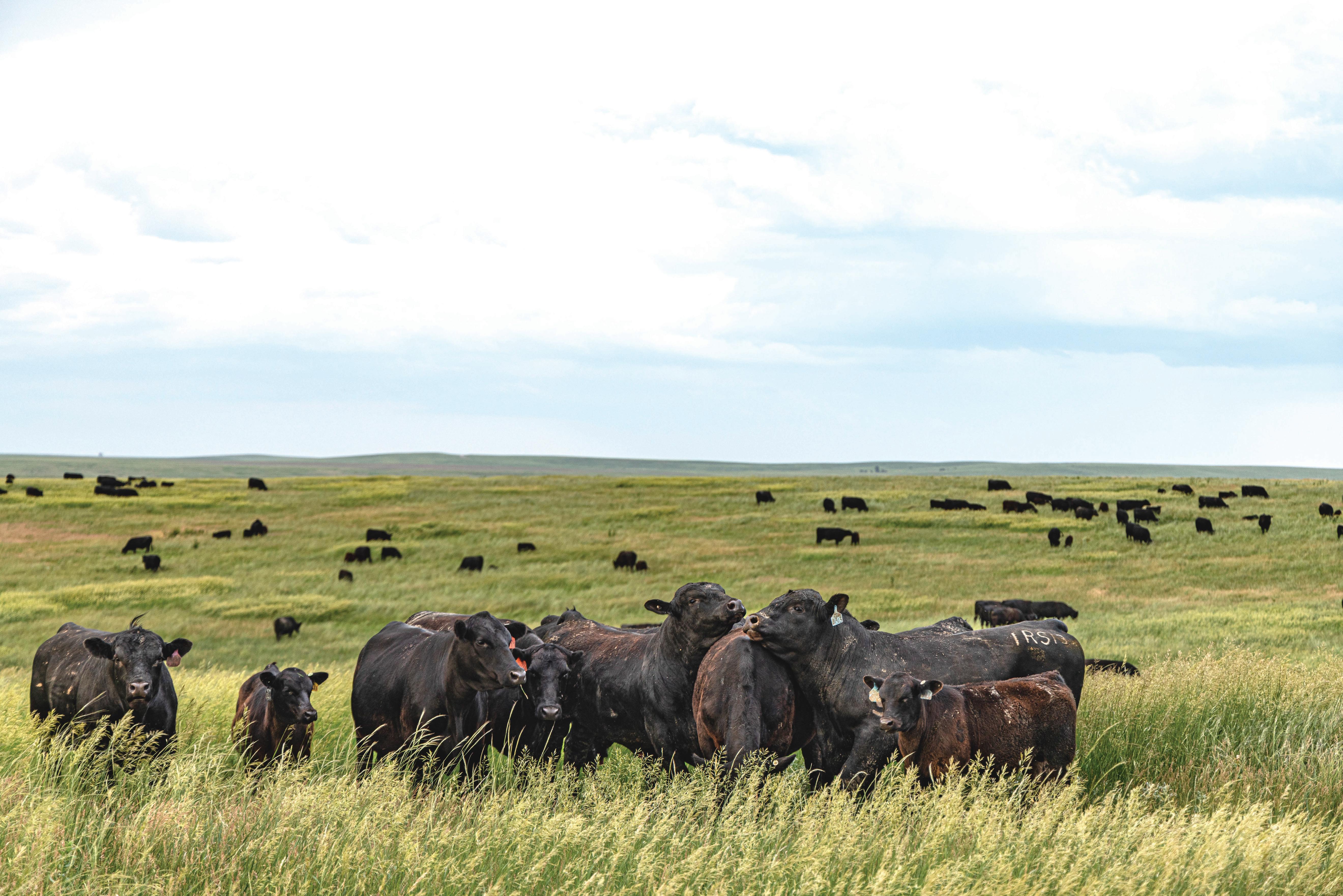
Bulls A S o u t h e r n T h i n g f o r O v e r 5 0 Y e a r s
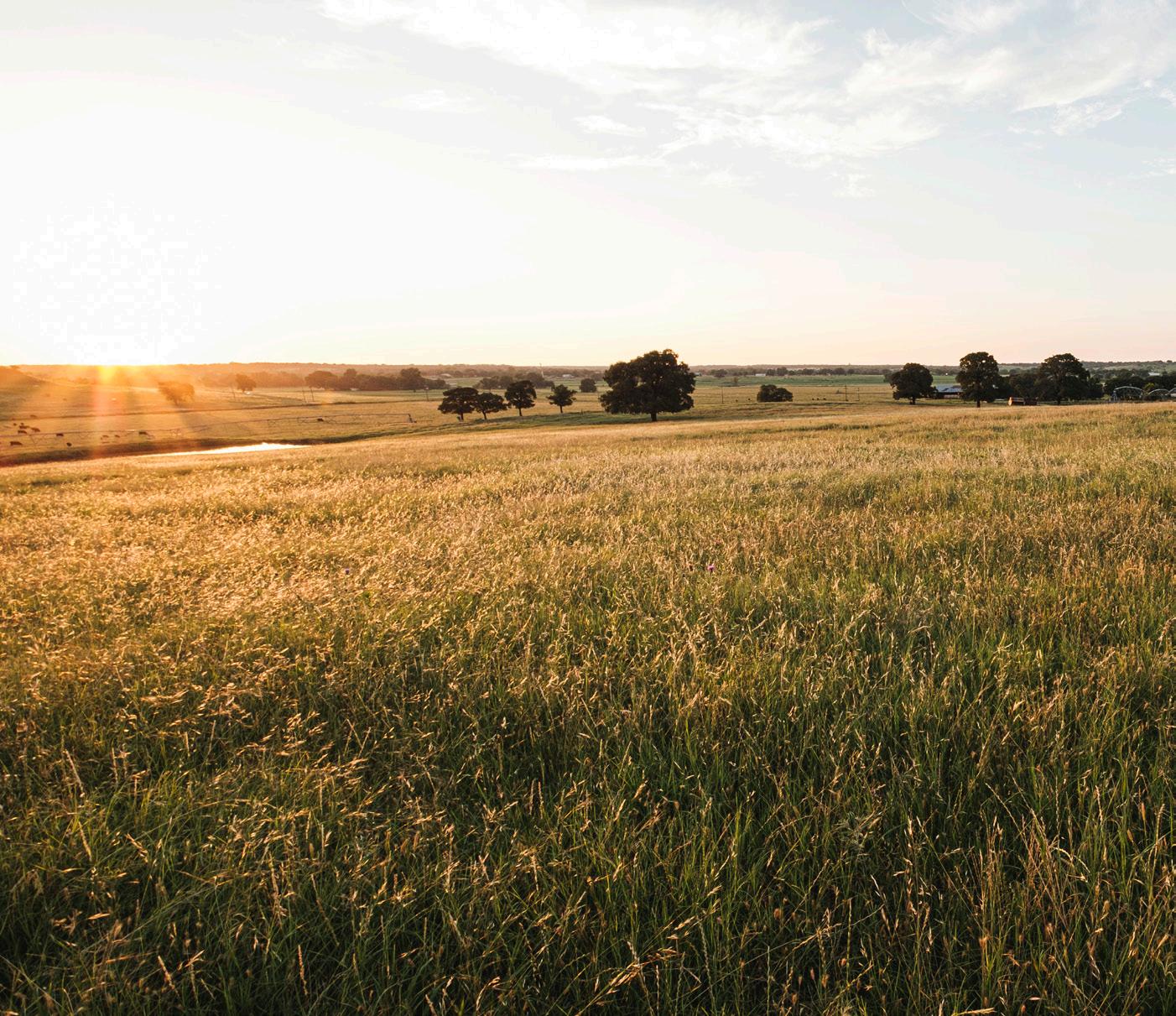
The type of soil beneath the surface impacts many aspects of cattle management on pasture or range, including forage availability, stocking rates and fertilization.
In most situations, a property will contain several different soil types. To gain a better understanding of soil composition, access USDA’s Web Soil Survey online. The tool allows producers to determine the various soil types found throughout a property.
By using the area of interest feature, users can select all or a portion of the property. A map can be created showing the approximate number of acres of each soil type and its characteristics. T C

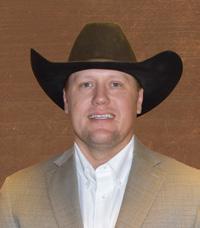
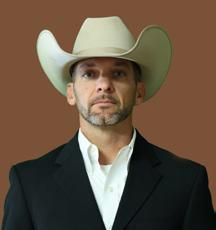
Cactus Feedyard
Matthew Turney, Manager
Cactus, TX
office: (806) 966-5151
cell: (806) 282-7077
Centerfire Feedyard
Adam Gerrond, Manager
Ulysses, KS office: (620) 356-2010 cell: (806) 390-9034
When Our Folks Drive Through the Gate They Think and Act Like Owners Because They Are Owners - They Have a Vested Interest in the Cattle They Care For
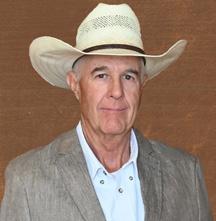
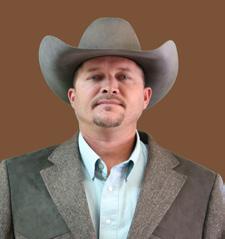

Frontier Feedyard
Jon Vanwey, Manager
Spearman, TX office: (806) 882-4251 cell: (719) 251-2381
Stratford Feedyard
Pistol Audrain, Manager
Stratford, TX office: (806) 396-5501 cell: (806) 753-7133
Burlington Feedyard
Logan Hardin, Manager
Burlington, CO office: (719) 346-8532 cell: (620) 575-6702
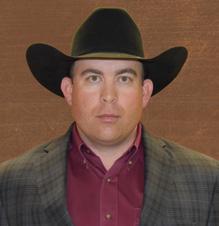
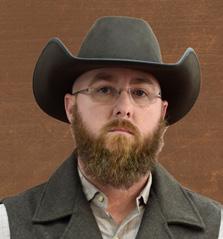

Southwest Feedyard
Kacey Graham, Manager Hereford, TX
office: (806) 364-0693 cell: (806) 316-8799
Hale Center Feedyard
Rusty Jackson, Manager
Hale Center, TX
office: (806) 879-2104 cell: (806) 773-9457
Ulysses Feedyard
Adam Gerrond, Manager Ulysses, KS office: (620) 356-1750 cell: (806) 390-9034
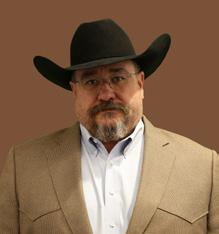
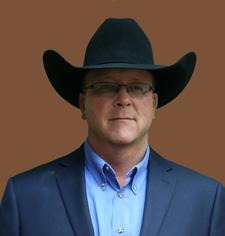
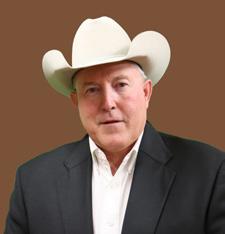

Wolf Creek Feedyard
Keith Brinson, Manager Perryton, TX
office: (806) 435-5697
cell: (806) 282-7588
Wrangler Feedyard
Randy Shields, Manager
Tulia, TX
office: (806) 583-2131
cell: (806) 290-0559
Syracuse Feedyard
Phil Moreman, Manager
Syracuse, KS
office: (620) 384-7431
cell: (806) 340-4790




By Helen White
Since the early 1900s, eradicating cattle fever ticks has challenged surveillance and quarantine programs designed to protect the U.S. cattle industry.
Throughout the decades, scientists and specialists in state and federal regulatory programs overseeing the U.S. Cattle Fever Tick Eradication Program have developed datasets tracking a detailed history of detecting and eliminating the parasite.
Now, a team of Texas A&M AgriLife researchers is assimilating this information into an interactive, computer-based tool to identify ever-changing risks to prevent or mitigate cattle fever tick infestations.
The three-year project, Agricultural Biosecurity: Harnessing Data Fusion to Meet Emerging Challenges to Cattle Fever Tick Eradication in a Changing World, has received a $600,000 grant from USDA’s National Institute of Food and Agriculture, Agricultural Biosecurity
Program and is funded by the Agriculture and Food Research Initiative, the nation’s leading competitive grants program for agricultural sciences.
Texas A&M AgriLife Research project investigators are Pete Teel, Ph.D., Regents professor, and Taylor Donaldson, Ph.D., assistant research scientist, both in the entomology department; and Rose Wang, Ph.D., senior research scientist, and William Grant, Ph.D., professor, both in the ecology and conservation biology department.
“The cattle fever tick issue is a constant challenge for Texas,” Teel said. “It has a considerable history related to the development, security and sustainability of the cattle industry, and not just in the U.S. because of our international boundary with Mexico.”


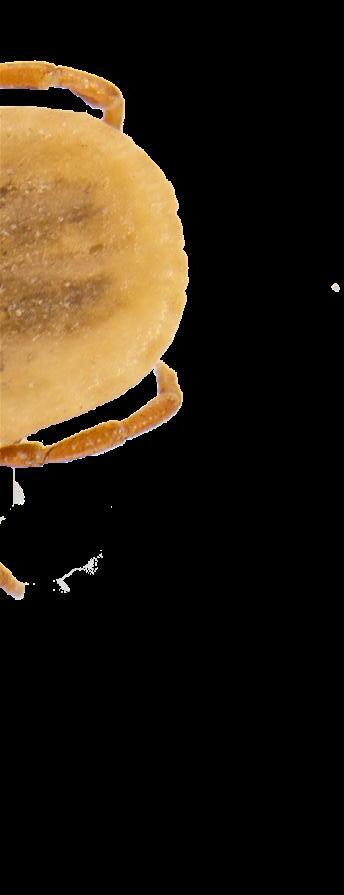
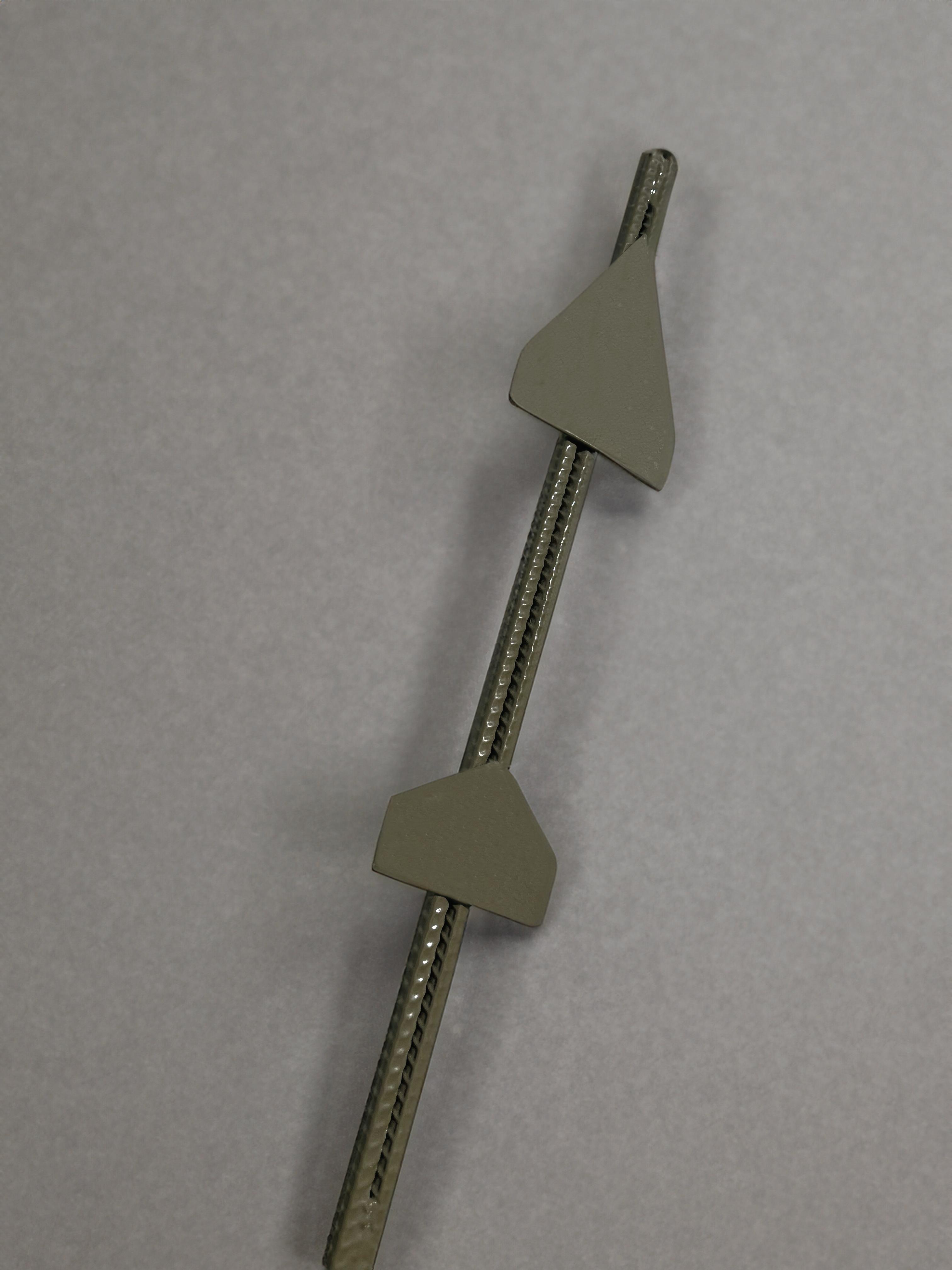
Only two species of cattle fever ticks, Rhipicephalus annulatus and Rhipicephalus microplus, can transmit the pathogens that cause the highly fatal cattle disease, bovine babesiosis, or Texas cattle fever, Teel said.
“There are no drugs or vaccines to protect cattle from this disease, so we rely upon eliminating the vectors to prevent this problem,” Teel said. “The best disease control is to prevent the tick vectors from reestablishing in the U.S. from Mexico, where both the ticks and disease pathogens remain endemic. At risk are U.S. cattle that are immunologically susceptible to infection through the bite of cattle fever ticks.”
Teel said these ticks and the pathogens they transmit were once distributed throughout 13 southern states and southern California. In 1906, the U.S. Cattle Fever Tick Eradication Program was developed.
By 1943, the USDA declared the ticks were eradicated in the U.S., except for a zone on the Texas-Mexico border. A permanent quarantine zone inside Texas along the Rio Grande was established to intercept infested animals and ticks that might come across from Mexico.
In Texas, USDA-APHIS operates the eradication program within the permanent quarantine zone, collaborating with the Texas Animal Health Commission and other state and federal agencies outside the
permanent zone for inspection, quarantine and other eradication efforts. USDA-APHIS estimates the annual economic benefit of the eradication program to the U.S. cattle industry is more than $1 billion.
Both tick species and pathogens are still endemic in Mexico. Teel said the problem remains and has become more complicated in Texas because of several challenges.
There have been land use and population changes, as well as increased resistance to acaricides, the pesticides used to control ticks. Also, wildlife hosts such as whitetailed deer and nilgai antelope can spread ticks over a more extensive range because they are not confined within fence lines like cattle.
The research project uses these challenges as scenarios for risk analysis with data fusion, which integrates multiple data sources to produce information relevant to cattle fever tick eradication.
Teel said the research project’s goal is to combine disparate datasets from the U.S. Cattle Fever Tick Eradication Program to create a computer-based platform that better analyzes and identifies factors conducive to the spread of cattle fever ticks.
Some of these factors are changes in climate and weather patterns, vegetation, land use and
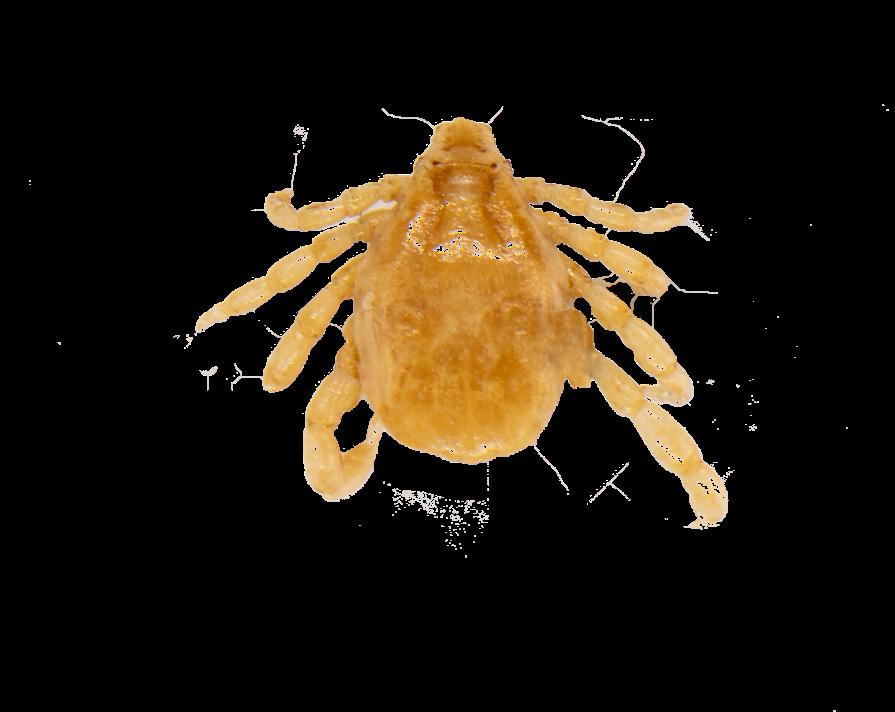
Joining the Texas A&M AgriLife Research project investigators are Doug Tolleson, Ph.D., professor, rangeland, wildlife and fisheries department and director of the Sonora research station; David Anderson, Ph.D., Texas A&M AgriLife Extension economist and professor, agricultural economics department.
Research collaborators from the USDA Agricultural Research Service are Kimberly Lohmeyer, Ph.D., director, Knipling-Bushland U.S. Livestock Insects Research Laboratory, Kerrville; Donald Thomas, Ph.D., research scientist, Cattle Fever Tick Research Laboratory, Edinburg; and Kennan Oyen, Ph.D., research scientist, Animal Disease Research Unit, Pullman, Washington.
The advisory group includes representatives from the USDA Animal and Plant Health Inspection Service, Veterinary Services, the Texas Animal Health Commission and the regulatory agencies in charge of the U.S. Cattle Fever Tick Eradication Program.
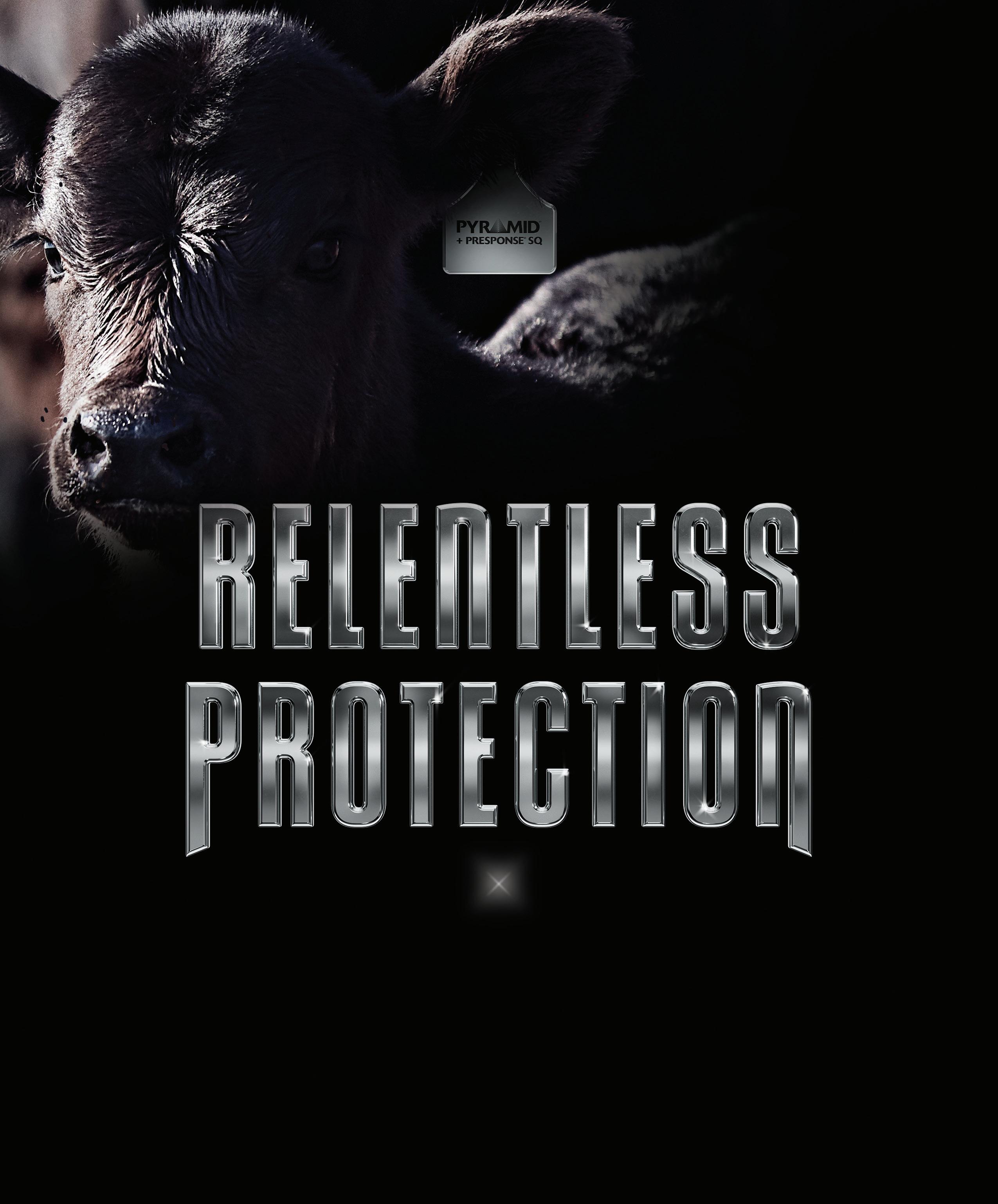
On a beef operation, risk is everywhere. And calf health is everything. Invest in your herd’s future by using a calf vaccine as premier as your calves: Pyramid® + Presponse® SQ. It’s proven by recent research to defend against the primary viruses and bacteria that lead to bovine respiratory disease — like BVDV Type 1b, BRSV and Mannheimia haemolytica — even in the face of maternal antibodies.1,2
fragmentation, and the risk of evolving strains of cattle fever ticks resistant to acaricides.
Some datasets have analytical models going back 65 years; others include realtime weather data, GPS mapping and outbreak investigations.
Another project goal is to develop an interactive tool that regulatory agency staff can use in the field on devices such as a tablet, phone or computer to access the new computer platform.
“Texas has developed different technologies and databases that track the history of these infestations and the interactions of how incidents occurred,” Teel said. “There’s a lot to be learned from the relationship of these datasets if they can be evaluated in conjunction with each other. Then we can develop risk assessments to be proactive about stopping tick incursions as quickly as possible.” T C
Helen White is a communication specialist for Texas A&M AgriLife.

Pete Teel, Ph.D., Regents professor in the Texas A&M department of entomology, leads a team of Texas A&M AgriLife researchers developing a computer-based platform to assess the risk of cattle fever tick infestations.
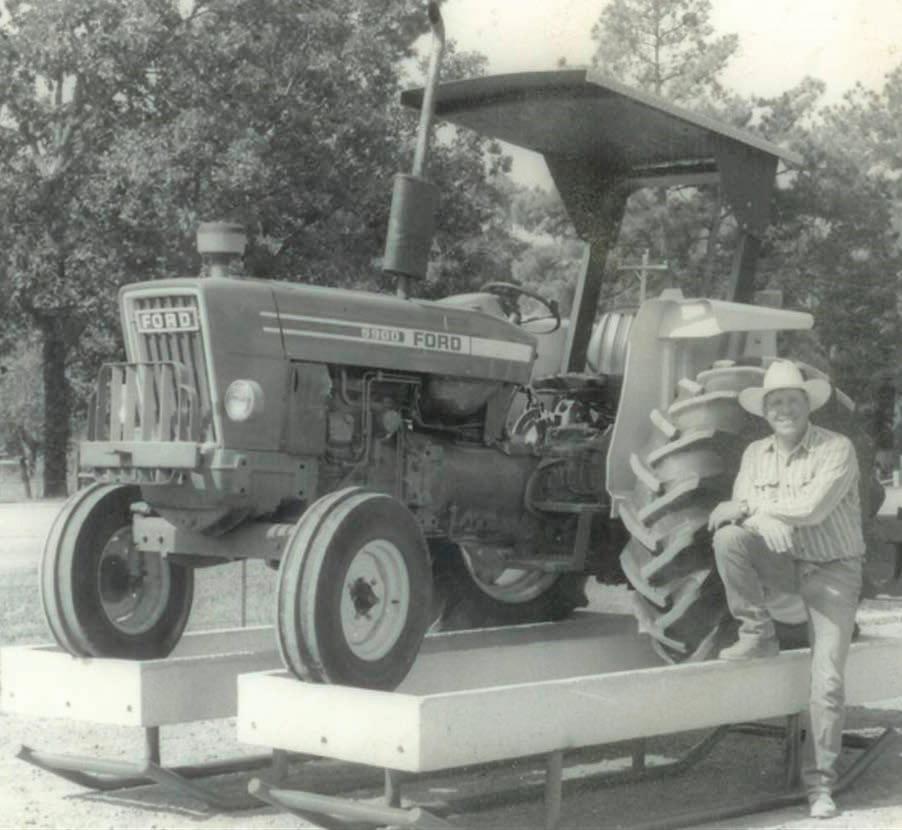

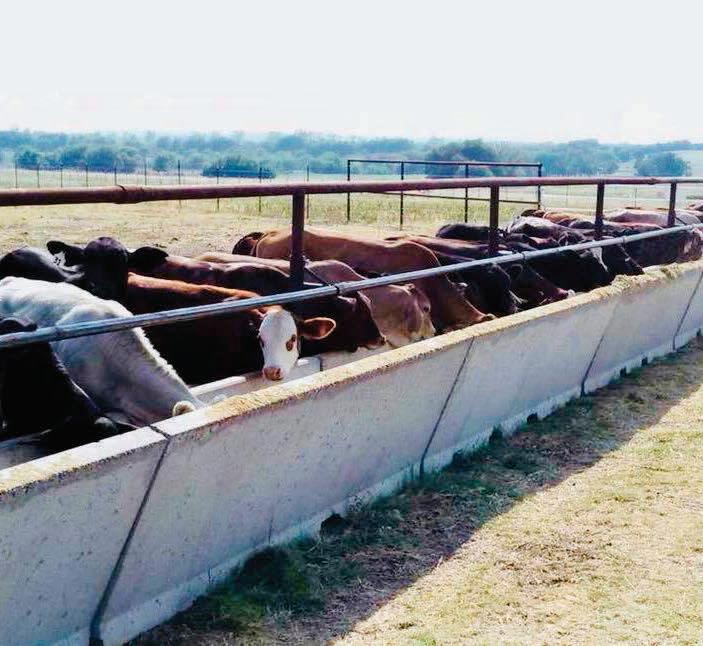

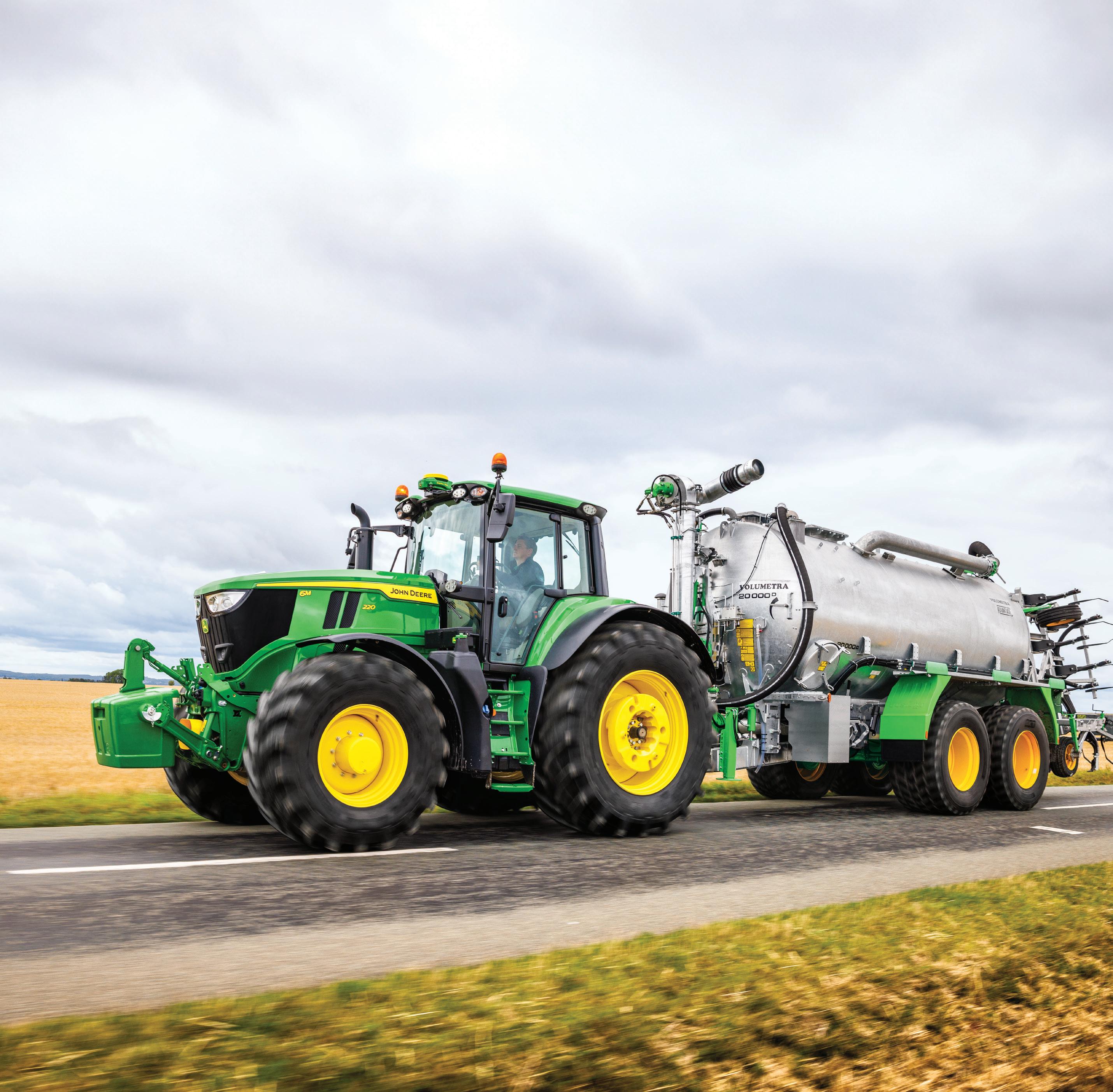



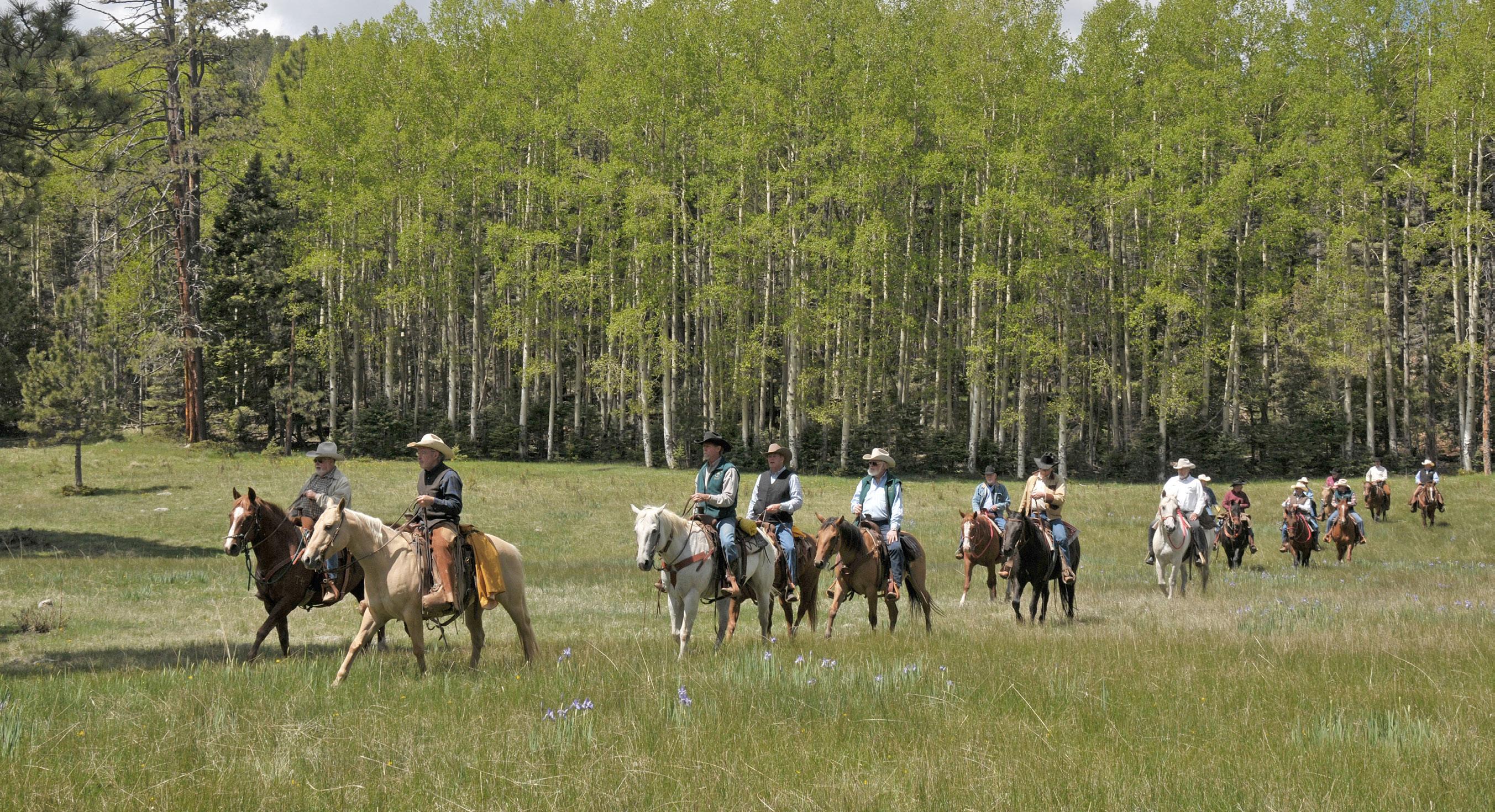
A West Texas ranch family’s deep roots, dedication and love for the Western lifestyle.
By Shelby Kirton
Awalk around the Cattle Raisers Museum in Fort Worth this fall felt like home to John and Charlotte Kimberlin, a West Texas couple with strong ties to both cattle ranching and Texas & Southwestern Cattle Raisers Association.
From Oct. 11 to Nov. 3, museum guests enjoyed A Western Retrospective: The John and Charlotte Kimberlin Collection, featuring pieces from their extensive art collection selected by a special committee from the Cowboy Artists of America. Notable artists featured included Joe Beeler, Bill Owen, James Boren, Frank Hoffman, Frank Tenney Johnson and many others who helped cultivate Western art.
“Our life has always been inspired by all things Western, so it never really occurred to us not to build this art collection,” says John, who is an honorary director for Texas & Southwestern Cattle Raisers Association. He is also a director and longtime supporter of the Cowboy Artists of America, as well as a member-supporter of the Fort Worth Stock Show Syndicate.
The Kimberlins started collecting art in the early 1970s. From oil paintings to sculptures, sketches to watercolors, they have assembled an inspiring array of work that was showcased during the exhibit.
Charlotte and John both grew up in Midland, with cattle ranching roots predating the Trail Drives.
“I became involved as a child with my grandfather,” says Charlotte, expressing how association events have also served as family gatherings for generations.
John was elected to the association board of directors in 2002, and he was elevated to honorary director in March 2024. Over the years, he has served on various committees, including the legislative and natural resources and wildlife committees.
The Kimberlins say Texas & Southwestern Cattle Raisers Association represents more than a professional network; it’s a cornerstone of their social life. Their participation has taken them on numerous trips, fostering connections with fellow ranchers close to home and around the world.
“Business connections, friendships — it’s been a lifelong thing for us,” Charlotte says. “We love cattle and the Western lifestyle.”
The couple emphasizes the importance of building relationships, especially for the next generation of cattle raisers. They say the industry will continue to face challenges, and standing united with fellow ranchers will provide a strong foundation moving forward.
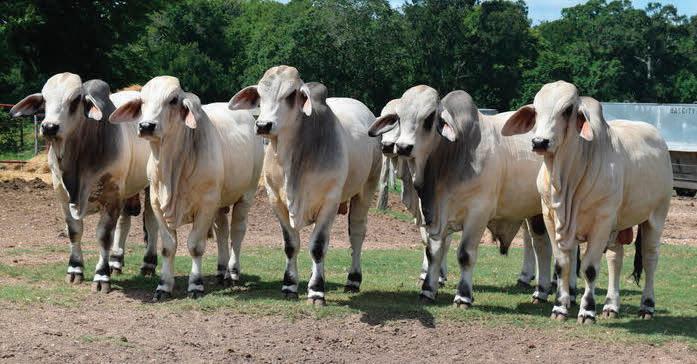


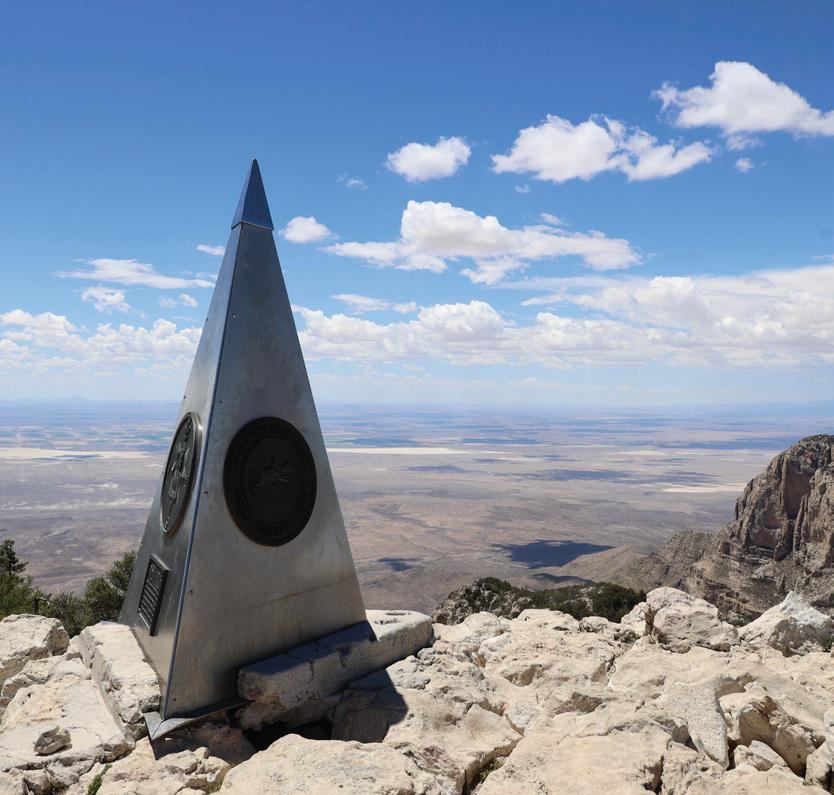

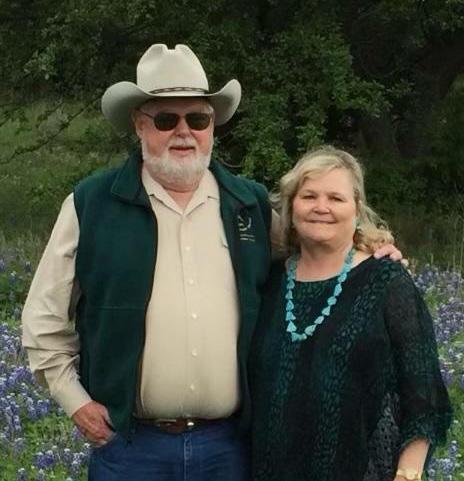
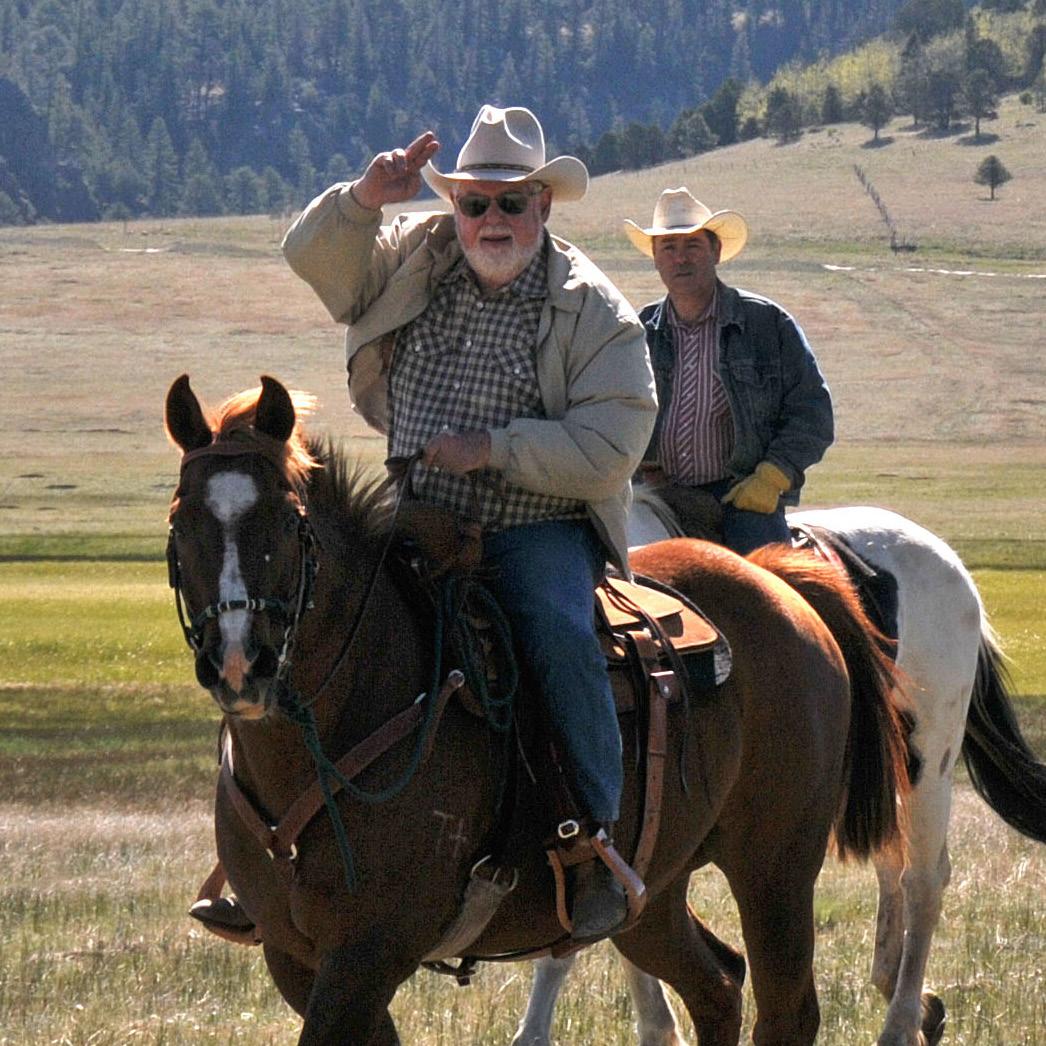
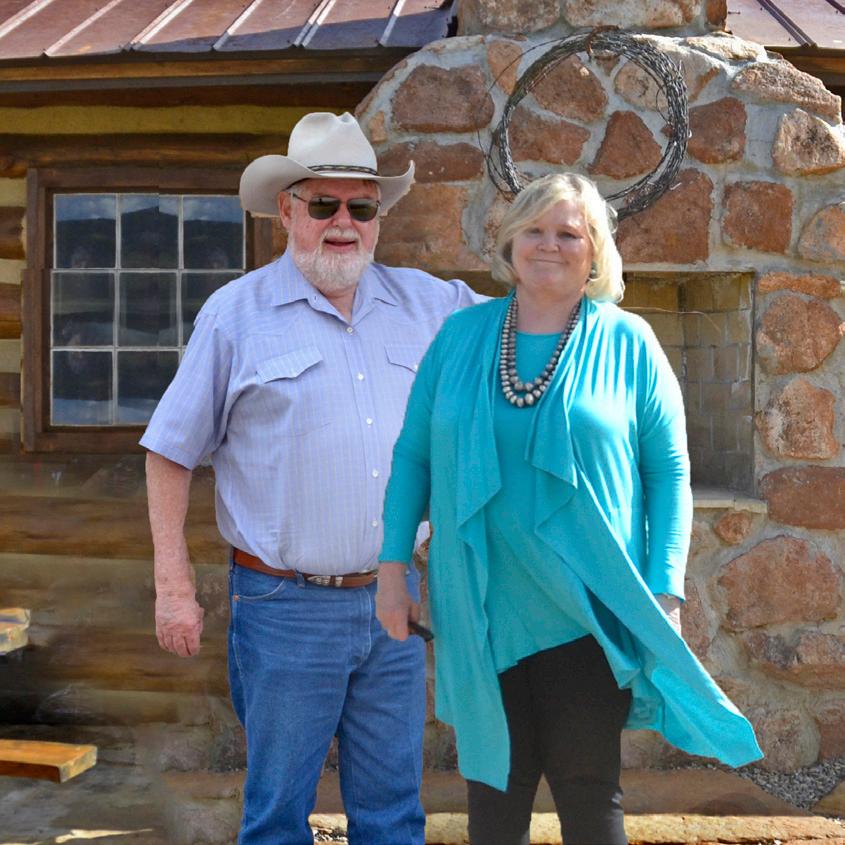
Charlotte’s family’s ranching heritage began in the mid-1800s near Clifton and later in Stephens County. In 1918, disgusted by land damages from the Ranger Oil Boom, Charlotte’s grandfather, Roy Parks Sr., moved their ranching operations far west to Midland and Odessa.
As pioneering Midland ranchers, the family became well-established and known throughout Texas for fine cattle and horses. Parks served as president of Texas & Southwestern Cattle Raisers Association in 1954 and the American Quarter Horse Association in 1960.
After the Civil War, John’s ancestors traded, ran, and trailed cattle in Missouri, the Oklahoma Territory, and down into North Texas. The epic Loving Brand Book of 1884 lists the Kimberlin Cattle Company’s 20 brands registered only in North Texas.
In 1855, Oliver Loving homesteaded his Big Valley Ranch on the Brazos River, southeast of Fort Belknap, and began his famous wild cattle gathering and trailing business — initially to Louisiana, then Illinois, and finally Denver — establishing the perilous Goodnight-Loving Trail.
The historic Big Valley Brazos Ranch — the beginning of the Goodnight-Loving Trail — was owned by a founding member of Texas & Southwestern Cattle Raisers Association. The ranch has been owned by the Kimberlin family since 1941.
In 1988, producers of the Lonesome Dove television series searched for a “pristine Montana landscape close to Texas” and were taken to a mountain ranch south of Angel Fire, New Mexico, also owned by the Kimberlins.
The Kimberlins proudly connect their two scenic, historical Western ranches, which link the beginning of the Goodnight-Loving Trail to the setting of the popular Western film.
Among the Kimberlins’ displayed art collection is a commissioned painting by Jim Norton titled The Lonesome Dove View. It holds special significance, as it captures a scene from the movie against a breathtaking backdrop.
Their Hat Creek Ranch was also a gathering place for the Cowboy Artists of America, and the Kimberlins hosted the group’s annual trail ride there in 2016 — helping preserve and inspire Western art and culture. They hosted the event on the Brazos Ranch in 2021, at which time John and Charlotte were made honorary members of the Cowboy Artists of America.
In addition to their involvement with Texas & Southwestern Cattle Raisers Association, they are involved in Texas Wildlife Association, National Cattlemen’s Beef Association, American Quarter Horse Association, and the New Mexico Cattle Growers’ Association.
Additionally, they actively participate in the Southwestern Exposition and Livestock Show in Fort Worth and continue supporting the industry.
Now married for 58 years, the Kimberlins have three children, Mary, Susan, and John III, and six grandchildren. As they look to the future, their hope is simple: to continue raising cattle, providing high-quality beef to consumers, and preserving the Western heritage they hold so dear.
“That’s our job as cattle raisers,” John says. T C


CARL RAY POLK JR. President P.O. Box 155108 Lufkin, Texas 75915

STEPHEN DIEBEL
First Vice President 3907 Salem Rd. Victoria, Texas 77904
John M. “Jack” Shelton III Amarillo, 1984-1986
James L. Powell San Angelo, 1988-1990
Tom Beard Alpine, 1994-1995
C. Coney Burgess Amarillo, 1997-1999
J. Mark McLaughlin San Angelo, 1999-2001
John E. Dudley Comanche, 2001-2003
Bob McCan Victoria, 2003-2005
C.R. “Dick” Sherron Beaumont, 2005-2007
Jon Means Van Horn, 2007-2009
Dave Scott Richmond, 2009-2011
Joe J. Parker Byers, 2011-2013
Pete Bonds Saginaw, 2013-2016
Richard Thorpe lll Winters, 2016-2018
Robert E. McKnight Jr. Fort Davis, 2018-2020
G. Hughes Abell Austin, 2020-2022
Arthur G. Uhl III San Antonio, 2022-2024
VICE PRESIDENTS
Jack Hunt San Juan Capistrano, California
Richard Wortham Austin
P.O. Box 101988 Fort Worth, Texas 76185 817-332-7064 • 800-242-7820
Jason Skaggs Executive Vice President/ Chief Executive Officer
Jaclyn Roberts Parrish Executive Director, Communications & Marketing

DAN GATTIS
Second Vice President and Secretary/Treasurer 213B W. 8th St. Georgetown, Texas 78626
Emily Lochner
Executive Director, Leadership Development & Education
Grace Dunham Executive Director, Events & Partnerships
Megan Wills Executive Director, Finance & Human Resources
Michele Woodham Executive Director, Insurance Services
Scott Williamson Executive Director, Law Enforcement, Brand & Inspection Services
Lisa Walker Executive Director, Membership & Operations
919 Congress Ave., Suite 750 Austin, Texas 78701 512-469-0171
Melissa Hamilton Executive Director, Government Relations
Don’t gamble on unproven genetics. There are a lot of Angus bulls on the market, but not all are backed by the Invest wisely in a registered Angus bull.

Look for the REGISTRATION NUMBER. Bring the Power of Angus to your herd. Angus.org/PBA.
Joe M. “Jody” Bellah, Throckmorton
Blake Birdwell, Canyon
E. S. F. “Swasey” Brainard II, Pampa
J. K. “Rooter” Brite Jr., Bowie
Donnell Brown, Throckmorton
Campbell Burgess, Amarillo
Deborah Clark, Henrietta
Lynn Cowden, Skellytown
J. B. Daniel, Crowell
James Henderson, Memphis
Clayton Henry, Wichita Falls
Brooks Hodges, Guthrie
Joe Leathers, Guthrie
Frank McLelland, Tahoka
Jeff Mitchell, Amarillo
Gage Moorhouse, Benjamin
Diaz W. Murray, Wichita Falls
J. Malcolm Shelton IV, Amarillo
Dale A. Smith, Amarillo
Jim Thompson, Breckenridge
Ross Thompson, Iowa Park
Wesley Welch, Lubbock
HONORARY DIRECTORS
William M. “Buck” Arrington, Pampa Van Baize, Nocona
Emry Birdwell Jr., Henrietta
Mary Lou Bradley-Henderson, Childress
R. A. “Rob” Brown Jr., Throckmorton
J.D. Cage, Muleshoe
Jay C. Evans, Dripping Springs
Mike Gibson, Paducah
Ronald J. “Ron” Gill, Chico
Robert B. Mansfield, Amarillo
Tom Moorhouse, Benjamin
Boots O’Neal, Guthrie
James Palmer, Roaring Springs
Wilson Scaling, Henrietta
Chris Scharbauer, Amarillo
Tom Watson, Muleshoe
John Welch, Wolfforth
A. B. “Buck” Wharton III, Vernon
Tom Woodward, Decatur
DIRECTORS
Kevin Busher, Winters
Charles M. “Charley” Christensen Jr., San Angelo
C.A. “Chili” Cole IV, San Angelo
Alan F. Curry, San Angelo
James H. Dudley IV, Horseshoe Bay
Amanda Dyer, Fort Davis
Johnny Ferguson, Big Lake
DA Harral, Fort Stockton
Ron Helm, Van Horn
Heath Hemphill, Coleman
Shelby W. Horn, Fredericksburg
Larry R. Horwood, Sterling City
Grant Jones, Rochelle
Mark W. Jones, Brady
W. Clay Jones, Brady
Ty Keeling, Boerne
Lorenzo Lasater, San Angelo
Brian T. McLaughlin, Midland
David L. Neal, San Angelo
Gerald Nobles Jr., Brady
James Oliver, Ozona
Wade Perks, San Angelo
Jessica Tate, Marfa
James Uhl, Fort McKavett
Cody Webb, Barnhart
Ken Welch, Baird
Ray W. Willoughby III, Eldorado
HONORARY DIRECTORS
C. A. “Chip” Cole III, San Angelo
William C. “Billito” Donnell Jr., Alpine
Richard Gates, Marfa
W. H. “Billy” Green III, Albany
Rafe Hargrove, Rotan
Dr. Joe Pat Hemphill, Coleman
Ken Jordan, San Saba
Don Keeling, Fredericksburg
Chris Lacy, Fort Davis
Laurence M. Lasater, San Angelo
Ben Love, Marathon
Len P. Mertz, San Angelo
Tom Perini, Buffalo Gap
Bill Phinizy, Gail
Frank Price, Sterling City
Gordon E. Sauer, Fredericksburg
Danny B. Stewart, Sterling City
Rick Tate, Marfa
Cliff Teinert, Albany
Dennis W. Webb, Barnhart
W. C. “Billy” Williams, Mertzon
Ford Drummond, Pawhuska, Oklahoma
HONORARY DIRECTORS
Les Nunn, Pauls Valley, Oklahoma
DIRECTORS
Edward Bordovsky Jr., Riviera
Austin Brown III, Beeville
W. Christopher Bush, Refugio
James Clement lll, Kingsville
David S. Crow, Corpus Christi
Dustin Dean, Floresville
David DeLaney, Kingsville
Robert “Bobby” Dobson, Birmingham, Alabama
James L. “Jamie” Donnell Jr., Fowlerton
J. David Eppright, Cost
Benjamin Eshleman III, Corpus Christi
Joseph B.C. Fitzsimons, Carrizo Springs
Cody Fry, Lueders
Jim L. Gates, Pearsall
Milton S. Greeson Jr., Victoria
Bret Griffith, Del Rio
Heath Grigg, Kingsville
Marty R. Harris, Tilden
Anson Howard, San Antonio
Leslie Kinsel, Cotulla
Claude Koontz, San Antonio
Steven J. Mafrige, Tilden
Richard Marbach, Victoria
Beth Knolle Naiser, Sandia
Federico “Freddy” Nieto, Raymondville
T. Michael O’Connor, Victoria
Jason Peeler, Floresville
J.R. Ramirez, La Pryor
Gilly Riojas, Corpus Christi
Michael Sasser, Corpus Christi
Lew Thompson, Pearsall
C. Clark Welder, Beeville
John E. Zacek, Victoria
HONORARY DIRECTORS
Steve G. Beever, Pearsall
Richard H. Bennett, San Antonio
Chip Briscoe, Carrizo Springs
Presnall Cage, Falfurrias
Martin W. Clement II, Kingsville
Thurman S. Clements Jr., Victoria
Nixon Dillard, Pleasanton
Trainor Evans, Mercedes
Thomas J. “Tommy” Haegelin, Concan
Phillip C. Hardee, DMD, Beatrice, Alabama
Allen C. “Dick” Jones IV, Corpus Christi
David W. Killam, Laredo
Dan W. Kinsel III, Cotulla
Steve C. Lewis, San Antonio
Jim McAdams, Seguin
James A. McAllen, Linn
Tim Pennell, Westhoff
Jim Peters, Quemado
Scott Petty Jr., San Antonio
Tom Risinger, Weslaco
M. Stuart Sasser, Corpus Christi
Frates Seeligson Jr., San Antonio
Richard Traylor, Batesville
Roger F. Welder, Victoria
David W. Winters, Del Rio
DIRECTORS
Bill Cawley, Crockett
Wayne Cockrell, College Station
Herff Cornelius Jr., Wadsworth
Carlos Detering III, Houston
Gardner H. Dudley, Houston
Lloyd French IV, Houston
Dan Gattis, Georgetown
Kelley Sullivan Georgiades, College Station
George Harrison, Bay City
Robert Hodgen, Houston
Colt Hoffmann, Marlin
Clay Kenley, Crockett
Clive Runnells III, Austin
John Sumner Runnells III, Bay City
Tony Spears, Rosanky
John “Rocky” Sullivan, Galveston
Claudia Scott Wright, Richmond
Jay C. Evans, Dripping Springs
Leroy Ezer, Anahuac
Frank Green, Liberty
Tom J. Haynie, Navasota
Coleman H. Locke, Hungerford
Katharine Armstrong Love, Austin
Richard M. Lucas Jr., Houston
William “Alan” McNeill, Beaumont
Evalyn Moore, Richmond
Raymond E. Moore IV, Richmond
Rick Peebles, Baytown
Gary Price, Blooming Grove
Gordon Richardson, Caldwell
Charles R. “Butch” Robinson, Navasota
Nolan Ryan, Round Rock
Ed Small, Austin
Guy F. Stovall Jr., El Campo
Gerald Sullivan, Galveston
John L. Sullivan, Galveston
Robert J. Underbrink, Houston
Beau Brite White, Rosanky
Dr. M. R. “Mike” Wirtz, Brenham
April Bonds, Saginaw
Missy Bonds, Saginaw
John L. Cantrell, Cresson
Ian Chapman, Madill, Oklahoma
Hunter Crow, Dallas
James T. Dangelmayr, Muenster
Seth Denbow, Weatherford
Crawford Edwards, Fort Worth
John Greer, Henrietta
Jason Harlow, Dallas
Pete Hudgins, Sherman
Tom Johnson, Wortham
Ken Leiber, Fort Worth
Stefan Marchman, Fort Worth
William H. McCall, Fort Worth
Dan Nance, Haslet
Susan Roach, Fort Worth
Stephen S. “Steve” Sikes, Fort Worth
Bragg Smith III, Dallas
Curtis A. Younts Jr., Belton
Bradford S. “Brad” Barnes, Fort Worth
George Beggs IV, Fort Worth
John W. Carpenter III, Dallas
Barrett D. Clark, Breckenridge
Markham B. Dossett, Waco
Bob Drake, Davis, Oklahoma
James H. “Jim” Dudley, Comanche
John Z. Kimberlin Jr., Dallas
James E. “Jim” Link, Crowley
Jon David Mayfield, Dublin
C. H. “Terry” McCall, Comanche
Bob Moorhouse, Weatherford
Russell “Rusty” Noble, Ardmore, Oklahoma
Mary Joe Reynolds-Montgomery, Fort Worth
Tom L. Roach III, Bozeman, Montana
Stephen T. “Steve” Swenson, Dallas
Frederick “Bart” Wulff Sr., Dallas

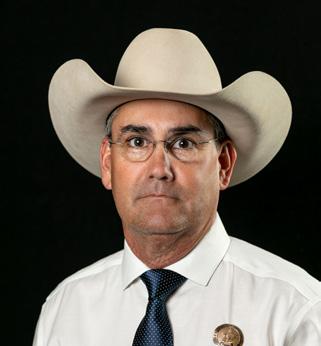

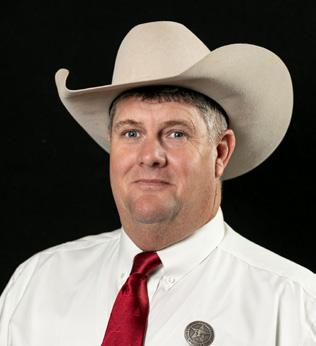
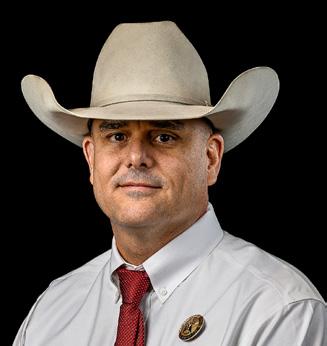
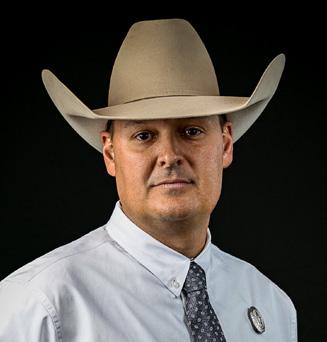


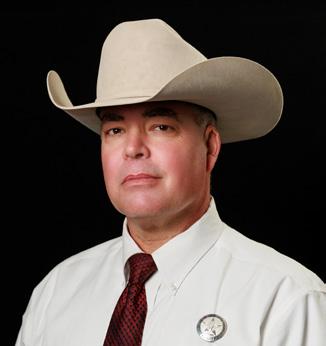
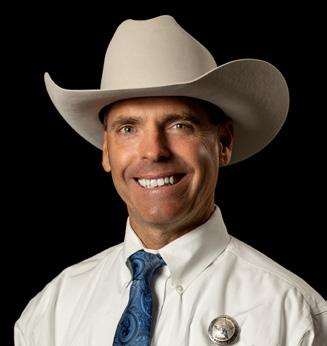

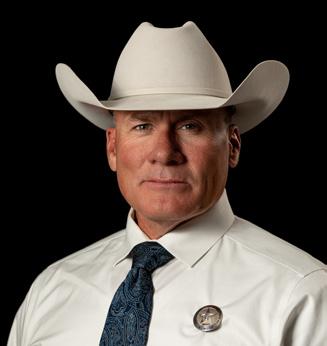



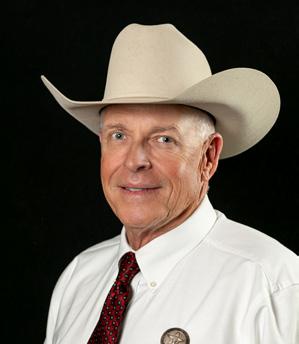


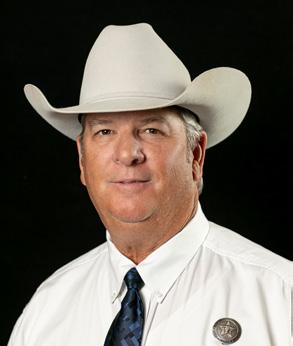


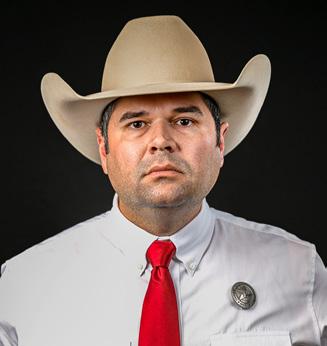

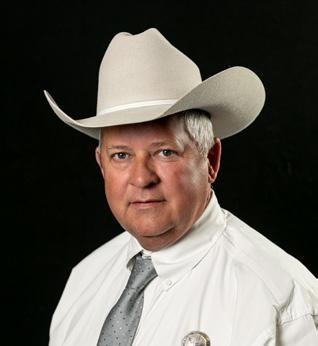

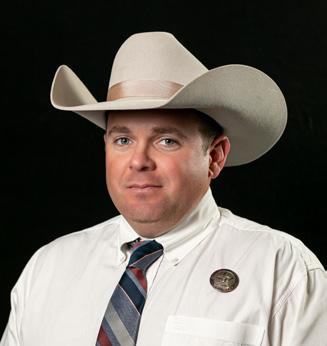
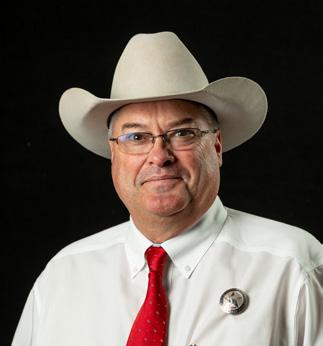
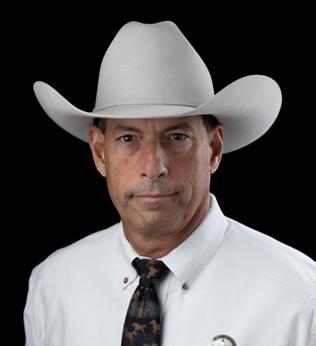
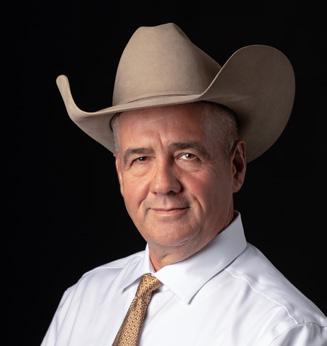


1874 Cattle Wellborn
2 McK Ranch Crockett
2graham Forney
4A Land & Cattle Co. Taylor
4B Livestock Tyler
4S Cattle Co. Seguin
6G Cattle Weatherford
7 Pinos Ranch Dickinson
Avery Aaron Wills Point
Jasmine Abney Temple
Andrew Aleman Stephenville
Avacelli Alvarez Fort Worth
Noah Archuleta Sierra Blanca
Graciela Argvelles Cleburne
Michael & Melinda Bahr Santa Fe
Ashlyn Bailey Pollok
Andrea Balderas Fort Worth
Bar L Land & Cattle Co. Tyler
Stephen Belz Pleasanton
Ty Bennett Jourdanton
Luke Biggs Blanco
Stanley Blaha Jr. El Campo
Sadie Blankenship Anson
Naomi Borchardt Tulia
Jackie & Devon Bouldin Ringgold
Addison Boulware Lufkin
Bobby Bowman Morton
Boyd Cattle Co. Luling
Lane Britten Canyon
Katie Browning Fate
C-Ham Cattle Co. Woodway
Bella Calloway Dallas
Ansley Campbell Denison
Mayra Cardona Stephenville
Cash Carruth Jr. Bloomfield, New Mexico
Carson Carter Iola
Alexa Castillo Fort Worth
Circle T Ranch Campbell Circle Y Farm Livingston
CL Cattle Dike
Clayton Ranch Dublin
Clevenger Family Glen Rose
Lane Close Windsor, Missouri
Coghlan Land & Cattle Conroe
Karson Colbert Lufkin
Zeke Coneway Vega
Katie Cooley Lubbock
Corteva Agriscience Fort Worth
Shawn Crutcher Montrose, Illinois
Cullum Farms Sallisaw, Oklahoma
Kimberly Dean Miami, Oklahoma
Harrison Doerr Katy
Double Six Ranch Groveton
Chad Douglas Waxahachie
Kyleigh Duckett Tyler
Duren Ranch Helotes
Allan Dye Chelsea, Oklahoma
Dyer Ranch Cisco
Stephen & Dina Eddleman Wills Point
Jemma Edwards Lufkin
EOCO F&R LLC
Austin
Dr. Norma Esparza Fort Worth
Jimmy Evans Midland
FKO Enterprises Ltd. Austin
Ryleigh Flynn Clewiston, Florida
Corinne Fonte Magnolia
Hailey Forshee Richmond
Alexandrea Foy Lufkin
Freeland Cattle Dawson
Laila Fuentes Austin
Cade Fuller Bronson
Hannah Gardner Lufkin
Garner Cattle Co. Iowa Park
Gentles Cattle Ranch Comanche
Hayden Glass Bluff Dale
Mallory Goff Lubbock
Sydney Gragg Lufkin
Blaine Grier New Braunfels
Brynlee Grier New Braunfels
Roger Guinn Bridgeport
HF4 Ranch Sonora
Glyn Hack Corpus Christi
Luke Hardin Sinton
Hadley Harris Poth
Hayes Hart Stephenville
Cameron Headley Lufkin
Holli Heim Henderson
Jeb & Hope Hogan Tilden
Micha Holloway Woodward, Oklahoma
Emma Hubbard Lufkin
Zane Ice Monahans
Ichthys Farm Emory
J-D Cattle Co. Ponder
JBC Ranch Oakwood
Gracie Johnson New Ulm
Jon Witte Farms Inc.
Clint
Chad Jones Brazoria
Brooke Kee Lufkin
Ken Watson, RBC Wealth Management Kerrville
Krolczyk Cattle Co. LLC Washington
The KT Group LLC Cleburne
KW Ranch Fort Worth
Jake Laminack Amarillo
Charles Lanfear Bridgeport
Las Lajas Ranch Ltd. San Antonio
Long Straw Land & Cattle Co. Wills Point
Lopez-Dale Ranch Goldthwaite
Los Campos
Dallas
Lovelace Farm & Ranch Round Rock
Raven Lovelady-Denning Pollok
Braylee Lowery Lufkin
Colin Martin Agua Dulce
Megan Martinez Houston
Mary’s Creek Cattle Co. La Salle
Elizabeth Cabrera Milanes San Marcos
Aspen Miller Silverton
Adriano Miranda Amarillo
MJ Brahmans Winnsboro
Moody Bennett Ranch
Austin
Carter Munson Hagerman, New Mexico
Weston Mushinski Brenham
Taylor Musick Lufkin
Elora Nath Huntsville
Beverly Nelson Long Branch
Seth Newton Lufkin
Bailey Niemann Milano
Ruben Ortiz Midland
Over the EDJE Ranch Mount Calm
Madison Pahlen Fort Worth
Bella Parker Godley
Brittany Patterson Cypress
Michael Penner College Station
Robin Perez College Station
Luis Perez Odessa
Petmecky Ranch Boerne
Justin Phillips Leander
Chloe Pierce Stillwater, Oklahoma
Syrenity Pitrucha Temple
Scott Ponder Haskell
Ethan Ponder Colleyville
Hannah Porter Pampa
Morgan Porubsky Temple
Robby & Kim Powell Como
Rebecca Preston Belton
Kalyn Quesenbury Nemo
Elizabeth Ray Pollok
Don Reece Flower Mound
Remember the Alamo Foundation San Antonio
Elena Reyna Rockwall
Preslee Richmond Stephenville
Garrett Ritz Snyder
Johnny & Denise Roberts Manvel
Jim Roberts Wills Point
Rockin F Seminole
Edgar Rubio Mineola
Gloria Ruiz Fort Worth
Jessica Ruiz Benbrook
Caleigh Sand Pollok
Reagan Sanders Houston
Annie Schacher Canyon
Kyndall Schakel Stillwater, Oklahoma
Sarah Schoener Victoria
Schoolboy Cattle Co. Hedley
Gerrit Schouten Stephenville
Michael Shrum Siloam Springs, Arkansas
John Mark Shudde Lubbock
Madison Siple Lufkin
Joshua Slay Houston
Seth Smith Elida, New Mexico
Kimberly Sosa Anderson County
Spangle & Sons LLC Katy
Star N Caddo
Curtis Steinle Jourdanton
Braylen Stevenson Nursery
Jacob Story Wichita Falls
Streidl Krueger Farm LLC Tomball
Sullivan-KJD Cattle Iowa Park
Jordan Suter
Austin
Jason Swain Robinson
Bradley Synnott La Grange
Idaleth Tavarez Odessa
Gary Taylor Grapeland
Christian Teer Lufkin
Makenzie Thigpen Lufkin
Thomas Ranch Perryton
Tyler Tschacher Howe
Brooke Turton Fort Worth
Two C Livestock Valley View
Van Ranch LLC Canton
Victor Valenzuela Tornillo
Jordan VanWinkle Yantis
Roland Villarreal Brenham
Ryon Walker
Moody
Kory Walker Salado
Walls Family
San Antonio
Silas Wells Licking, Missouri
Anna West Stephenville
Gage Whatley Groom
Pryce Williams Alva, Oklahoma
Wilson Farms Comanche
Windy Oaks Inc. Stephenville

Windy River Ranch San Antonio
Gail A. Wise Weatherford
Lauren Woodward Lufkin
Jackson Woodward Stephenville
Brighton Wooton Roswell, New Mexico
Alex Wright Brenham
YC Livestock Flynn


Elkhart Horse Auction
Where: Elkhart
Phone: 903-764-1495
Sale Day: Saturday
Contact: Tiffany Patterson, 903-388-7288
Atascosa Livestock Exchange
Where: Pleasanton
Phone: 830-281-2516
Sale Day: Tuesday Contact: Marvin Bendele, 210-213-5890
Four County Auction
Where: Industry
Phone: 979-357-2545
Sale Day: Tuesday
Contact: Lisa Sebastian, 979-270-3041
BAILEY
Muleshoe Livestock Auction
Where: Muleshoe
Phone: 806-272-4201
Sale Day: Friday
Contact: Leo Aviles, 956-437-3899
BEE
Beeville Livestock Comm.
Where: Beeville
Phone: 361-358-1727
Sale Day: Friday
Contact: Robert Bridge, 361-542-6693
Meridian L/S Comm. Co.
Where: Meridian Phone: 254-435-2988
Sale Day: Monday
Contact: Larry Brown, 254-265-1920
Clifton Livestock Comm. LLC
Where: Clifton Phone: 254-675-7717
Sale Day: Wednesday
Contact: Larry Brown, 254-265-1920
BOWIE
J & J Livestock Auction
Where: Texarkana Phone: 903-832-3576
Sale Day: Saturday
Contact: Cheri Beal, 903-280-4554
BRAZOS
Brazos Valley Livestock Comm.
Where: Bryan Phone: 979-778-0904
Sale Day: Tuesday
Contact: Nina Nygard, 512-281-6753
Caldwell Livestock Comm.
Where: Caldwell Phone: 979-567-4119
Sale Day: Wednesday
Contact: Mark Nygard, 512-281-6330
Lockhart Auction Where: Lockhart Phone: 512-398-3476
Sale Day: Thursday
Contact: Nina Nygard, 512-281-6753
Bruce Overstreet Livestock
Where: Pittsburg
Phone: 903-856-3440
Sale Day: Monday
Contact: Michelle Willeford, 903-767-0670
Tri County Livestock Market
Where: New Summerfield
Phone: 903-322-4940
Sale Day: Saturday
Contact: Jerry Boulware, 936-465-1597
Coleman Livestock Auction
Where: Coleman Phone: 325-625-4191
Sale Day: Wednesday
Contact: Dave Williams, 325-669-2030
Cattleman’s Columbus Livestock Auction
Where: Columbus Phone: 979-732-2622
Sale Day: Wednesday
Contact: Lisa Sebastian, 979-270-1228
Comanche Livestock Exchange
Where: Comanche Phone: 325-356-5231
Sale Day: Saturday
Contact: Michael Davis, 254-879-3121
The New Gainesville Livestock Auction
Where: Gainesville
Phone: 940-665-4367
Sale Day: Friday
Contact: Robin Gibbs, 903-227-0791
Coryell County Comm.
Where: Gatesville Phone: 254-865-9121
Sale Day: Wednesday
Contact: Ray Davis, 254-718-5512
Cattleman’s Livestock Comm.
Where: Dalhart
Phone: 806-249-5505
Sale Day: Thursday
Contact: Clifton Miller, 806-570-7439
Hereford Livestock Auction
Where: Hereford Phone: 806-240-3082
Sale Day: Tuesday
Contact: Joe Bob Via, 806-452-9280
Cuero Livestock Comm. Where: Cuero Phone: 361-275-2329
Sale Day: Friday
Contact: Kaylee Malatek, 979-942-0323
Texas Cattle Exchange
Where: Eastland Phone: 254-629-2288
Sale Day: Tuesday Contact: Ronnie Ober, 817-371-7071
Dublin Livestock Auction
Where: Dublin Phone: 254-445-1734
Sale Day: Friday Contact: Ronnie Ober, 817-371-7071
Erath County Dairy Sale Where: Dublin Phone: 254-968-7253
Sale Day: Friday Contact: Bob McBryde, 940-859-6217
Stephenville Cattle Co. Where: Stephenville Phone: 254-968-4844
Sale Day: Wednesday Contact: Bob McBryde, 940-859-6217
Flatonia Livestock Comm.
Where: Flatonia Phone: 361-865-3538
Sale Day: Monday Contact: Shannon Gallip, 512-995-1492
Schulenburg Livestock Auction Where: Schulenburg Phone: 979-743-6566
Sale Day: Saturday Contact: Vance Weltner, 210-473-9099
Floydada Livestock Sales
Where: Floydada Phone: 806-983-2153
Sale Day: Wednesday Contact: JE Stone, 806-777-4396
Pearsall Livestock Auction
Where: Pearsall Phone: 830-334-3653
Sale Day: Wednesday Contact: Clarence Stevens, 210-415-0441
Gillespie Livestock Co. Where: Fredericksburg Phone: 830-997-4394
Sale Day: Wednesday Contact: Larry Bowden, 210-846-0380
Gonzales Livestock Market
Where: Gonzales Phone: 830-672-2845
Sale Day: Saturday
Contact: JoGayle Stavena, 979-332-2186
Nixon Livestock Comm. Where: Nixon Phone: 830-582-1561
Sale Day: Monday
Contact: Landyn Maguglin, 361-492-9484
Longview Livestock
Where: Longview
Phone: 903-235-6385
Sale Day: Thursday
Contact: Paul Pruitt, 903-725-6200
Mid-Tex Livestock Auction
Where: Anderson
Phone: 936-825-3970
Sale Day: Thursday
Contact: Rick Faught, 936-442-1039
Navasota Livestock Auction
Where: Navasota
Phone: 936-825-6545
Sale Day: Saturday
Contact: Rick Faught, 936-442-1039
Seguin Cattle Co.
Where: Seguin
Phone: 830-379-9955
Sale Day: Wednesday
Contact: Elizabeth Cortez, 830-857-1945
Hamilton Livestock Comm.
Where: Hamilton
Phone: 254-386-3185
Sale Day: Tuesday
Contact: Bob McBryde, 940-859-6217
Gore Family Auction Center
Where: Silsbee
Phone: 409-782-0612
Sale Day: Saturday
Contact: Christy McCoy, 409-782-0612
Athens Comm. Co.
Where: Athens
Phone: 903-675-3333
Sale Day: Friday
Contact: Brandy Baughman, 903-440-4382
Edinburg Livestock Auction
Where: Edinburg
Phone: 956-383-5671
Sale Day: Saturday
Contact: Coney Alvarez Jr., 956-437-3899
Hubbard Livestock Market
Where: Hubbard
Phone: 254-576-2584
Sale Day: Monday
Contact: Bob McBryde, 940-859-6217
Sulphur Springs Livestock Comm.
Where: Sulphur Springs
Phone: 903-885-2455
Sale Day: Monday
Contact: Paul Pruitt, 903-725-6200
East Texas Livestock Auction
Where: Crockett
Phone: 936-544-2246
Sale Day: Tuesday
Contact: Cheyenne London, 936-222-3689
Big Spring Livestock Auction
Where: Big Spring
Phone: 432-267-5881
Sale Day: Wednesday
Contact: Bruce Brandenberger, 254-977-5763
Edna Livestock Auction
Where: Edna
Phone: 361-782-7666
Sale Day: Monday
Contact: Galynn Mazoch, 979-578-1823
Kirbyville Auction Barn
Where: Kirbyville
Phone: 409-423-2612
Sale Day: Saturday
Contact: Erica Morgan, 409-509-1946
Gulf Coast Livestock Market
Where: Alice Phone: 361-664-4395
Sale Day: Tuesday
Contact: Ramiro Garcia, 361-460-0008
Johnson County Cattle Auction
Where: Cleburne
Phone: 817-556-9090
Sale Day: Saturday
Contact: Lee Snyder, 254-707-1682
Karnes City Auction
Where: Karnes City
Phone: 830-780-3382
Sale Day: Saturday
Contact: Elizabeth Cortez, 830-857-1945
Karnes County Livestock Exchange
Where: Kenedy Phone: 830-583-2574
Sale Day: Thursday
Contact: Elizabeth Cortez, 830-857-1945
Cattlemen’s Livestock Comm.
Where: Paris
Phone: 903-784-2238
Sale Day: Saturday
Contact: Lana Caldwell, 903-908-0530
Paris Livestock Auction
Where: Paris
Phone: 903-739-2575
Sale Day: Wednesday
Contact: Robin Gibbs, 903-227-0791
Hallettsville Livestock Comm.
Where: Hallettsville
Phone: 361-798-4336
Sale Day: Tuesday
Contact: Kaylee Malatek, 979-942-0323
Giddings Livestock Comm.
Where: Giddings
Phone: 979-542-2274
Sale Day: Monday
Contact: Nina Nygard, 512-281-6753
Lexington Livestock Comm.
Where: Lexington Phone: 979-773-2922
Sale Day: Saturday
Contact: Nina Nygard, 512-281-6753
Buffalo Livestock Comm.
Where: Buffalo
Phone: 903-322-4940
Sale Day: Saturday
Contact: Cheyenne London, 936-222-3689
Raywood Livestock Market
Where: Raywood Phone: 936-587-4941
Sale Day: Monday Contact: Harvey Williamson, 963-334-5325
Groesbeck Auction & Livestock
Where: Groesbeck Phone: 254-729-3277
Sale Day: Thursday
Contact: Mallory Steen, 903-390-0594
Live Oak Livestock Auction
Where: Three Rivers Phone: 361-786-2553
Sale Day: Monday Contact: Marvin Bendele, 210-213-5890
Jordan Cattle Auction
Where: Mason Phone: 325-347-6361
Sale Day: Monday
Contact: Warren Ottmers, 830-669-2262
West Auction
Where: West Phone: 254-826-3725
Sale Day: Thursday Contact: Ray Davis, 254-718-5512
Union Comm.
Where: Hondo Phone: 830-741-8061
Sale Day: Monday Contact: Clarence Stevens, 210-415-0441
Milam County Livestock Auction
Where: Cameron Phone: 254-697-6697
Sale Day: Friday
Contact: Rick Faught, 936-442-1039
Nacogdoches Livestock Exchange
Where: Nacogdoches Phone: 936-564-8661
Sale Day: Thursday
Contact: Michael Witcher, 936-556-0992
Corsicana Livestock Market
Where: Corsicana
Phone: 903-872-1631
Sale Day: Tuesday
Contact: Kenda Meek, 254-379-3229
Carthage Livestock Auction LLC
Where: Carthage Phone: 903-693-6361
Sale Day: Tuesday
Contact: Lori Blankenship, 936-234-3441
Livingston Livestock Exchange
Where: Livingston Phone: 936-327-4917
Sale Day: Saturday
Contact: Harvey Williamson, 963-334-5325
Lonestar Stockyards
Where: Amarillo Phone: 806-677-0777
Sale Day: Tuesday
Contact: Gary McClellan, 806-334-0517
Emory Livestock Auction
Where: Emory Phone: 903-473-2512
Sale Days: Tuesday & Saturday
Contact: Brandy Baughman, 903-440-4382
Calvert Livestock Co.
Where: Calvert
Phone: 979-364-2829
Sale Day: Friday
Contact: Ray Davis, 254-718-5512
RUSK
Hunt Livestock Exchange
Where: Henderson Phone: 903-657-2690
Sale Day: Monday
Contact: Samuel Steadman, 318-617-1141
Jordan Cattle Auction
Where: San Saba
Phone: 325-372-5159
Sale Day: Thursday
Contact: David Munden, 325-456-7253
Center Auction Co.
Where: Center
Phone: 936-598-4395
Sale Day: Wednesday
Contact: Michael Witcher, 936-556-0992
Triple G Livestock Auction LLC
Where: Rio Grande City
Phone: 956-437-1988
Sale Day: Friday
Contact: Coney Alvarez Jr., 956-437-3899
Tulia Livestock Auction
Where: Tulia
Phone: 806-995-4184
Sale Day: Thursday
Contact: Tommy Thompson, 806-690-4080
Abilene Auction
Where: Abilene
Phone: 325-673-7865
Sale Day: Tuesday
Contact: Dave Williams, 325-669-2030
Stone Livestock Comm.
Where: Mt. Pleasant
Phone: 903-575-9099
Sale Day: Tuesday
Contact: Paul Pruitt, 903-725-6200
Producers Livestock Auction
Where: San Angelo
Phone: 325-653-3371
Sale Day: Thursday
Contact: Bruce Halfmann, 325-315-5972
Southwest Livestock Exchange
Where: Uvalde Phone: 830-278-5621
Sale Day: Thursday
Contact: Clarence Stevens, 210-415-0441
Mort Livestock Exchange
Where: Canton
Phone: 903-287-6386
Sale Day: Special Sales Only
Contact: Paul Pruitt, 903-725-6200
Brenham Livestock Auction
Where: Brenham
Phone: 979-836-3621
Sale Day: Friday
Contact: Lisa Sebastian, 979-270-3041
El Campo Livestock Exchange LLC
Where: El Campo Phone: 979-543-2703
Sale Day: Tuesday
Contact: Galynn Mazoch, 979-578-1823
Wharton Livestock Auction
Where: Wharton Phone: 979-532-3660
Sale Day: Wednesday
Contact: Megan Stavena, 979-320-4228
Wichita Livestock Sales
Where: Wichita Falls Phone: 940-541-2222
Sale Day: Wednesday Contact: R.C. Langford, 832-330-7279
Vernon Livestock Market LLC
Where: Vernon Phone: 940-552-6000
Sale Day: Tuesday
Contact: Dennis Wilson, 940-613-7693
Decatur Livestock Market
Where: Decatur Phone: 940-627-5599
Sale Day: Monday
Contact: Rebecca Benson, 940-389-6382
Winnsboro Livestock Auction
Where: Winnsboro Phone: 903-365-2201
Sale Day: Friday
Contact: Alan Pruitt, 903-725-6200
Graham Livestock Comm. LLC
Where: Graham Phone: 940-549-0078
Sale Day: Monday
Contact: Kyla Rater, 940-284-9968
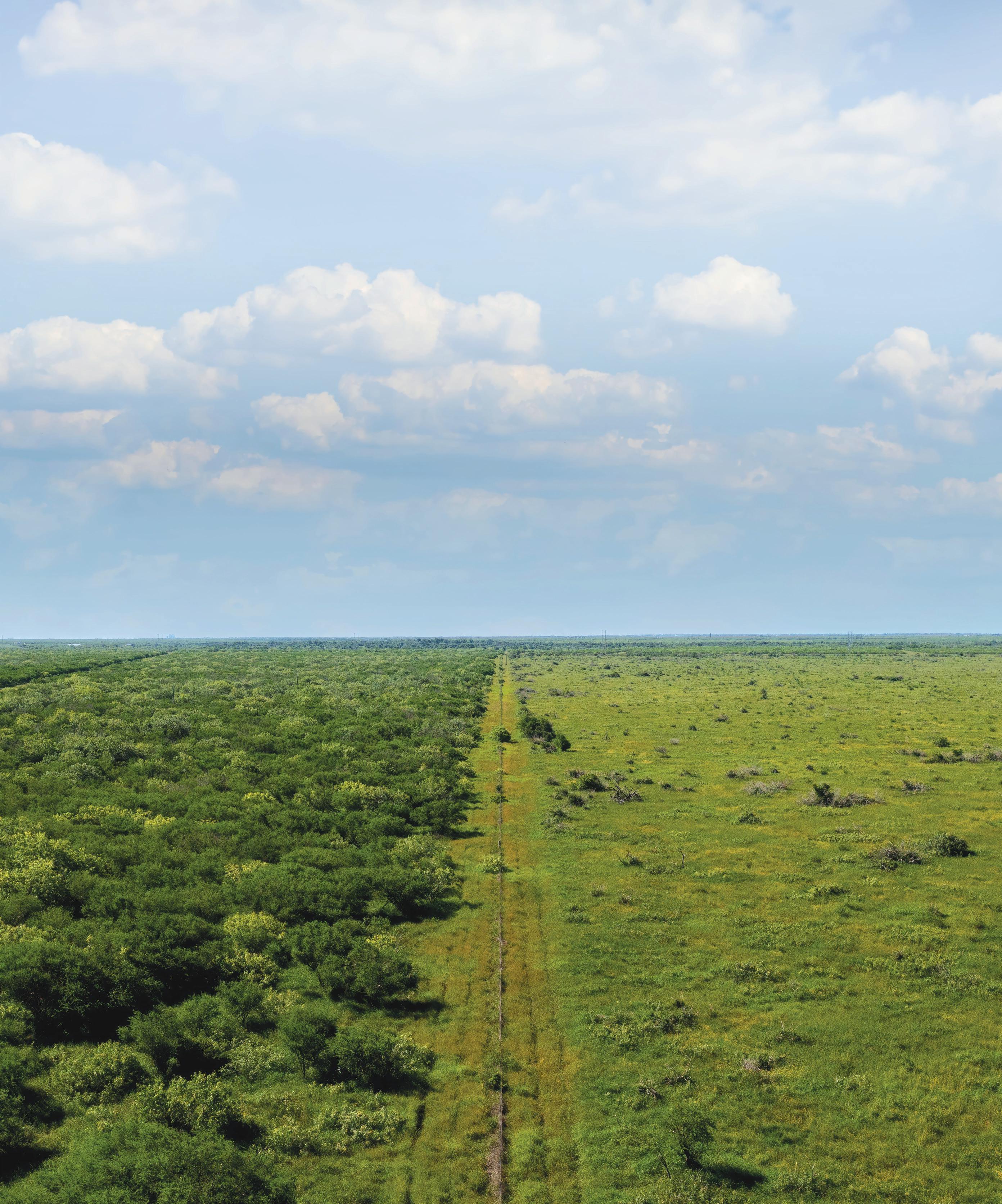
Five years of huisache and mesquite control — guaranteed.
The days of applying the same old chemical treatment over and over again are history. Backed by a decade of research and in-field trials, Invora® herbicide is redefining the meaning of long-lasting control with a game-changing guarantee, powered by the precision of RangeView™. So you can stop invasive species in their tracks, restore native vegetation and protect your land’s legacy for the long haul.
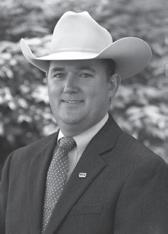




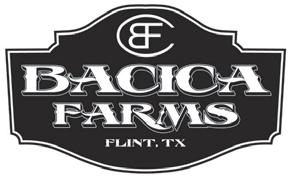

Black Herefords bacicafarms.com

Mike & Carla Bacica 11707 FM 2868 Flint, TX 75762 Mike: 903-520-0390 mbpga@aol.com Carla: 903-530-8551 wtnca@aol.com



Steve and Carlton Partin 3159 FM 837 • Montalba, Texas 75853

ma sters.co m



Hilltop Ranch Beefmasters Quality Beefmaster Cattle Ranches in Webb, Wilson and Kendall counties Mailing Address: P.O. Box 2947 Laredo, Texas 78044 Phone: 361/586-5067 Cullin Smith (409)779-9872
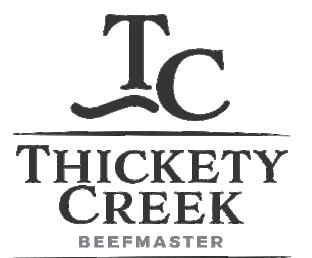





ROLLING O FARMS

QUALITY CHAROLAIS BULLS & HEIFERS REGISTERED + GENTLE
D.P. OWEN + GROESBECK, TEXAS 254-729-8644






CHAROLAIS BULLS
One or a truckload - Give us a call SW&S Cattle Company Don and Kathy Schill 903-388-1342 • Donie, Texas
T HOMAS CHAR O LAIS, INC . P.O. Box 595 • Raymondville, Texas 78580
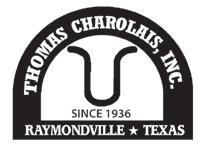
Mitch Thomas: 956-535-0936
Tonnyre Thomas Joe: 956-535-0942 thomasra@gte.net www.thomascharolais.com
TX 76941 325/835-2531


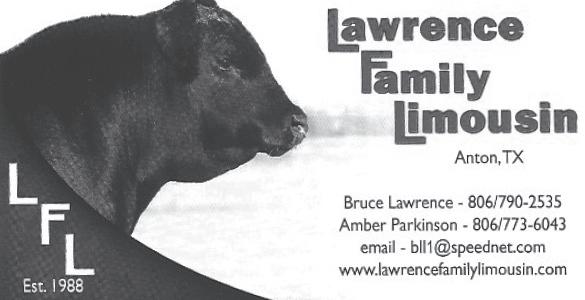

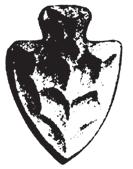
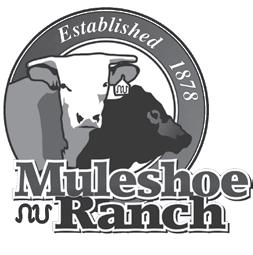
Registered Polled Herefords & Black Baldies
TX 79014 806-323-2906 lee@indianmoundranch.com www.indianmoundranch.com Lee & Jacqui Haygood J .T . E chols DVM P.O. Box 709 • Breckenridge, TX 76424 Of: (254) 559-9739 • Cell: (254) 559-0156 muleshoeranch@gmail.com Contact: Nina Neel Sanders 214-454-8587 • Brady, TX
Registered Herefords” Est.1921 – Bulls for sale at all times out of good milking cows

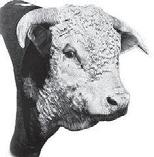
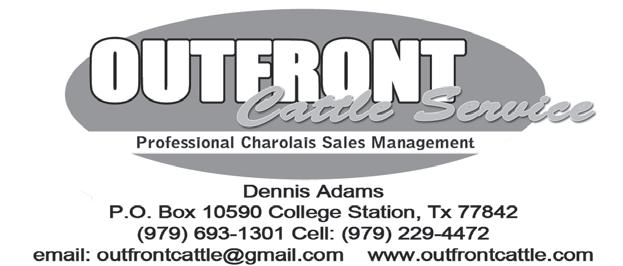

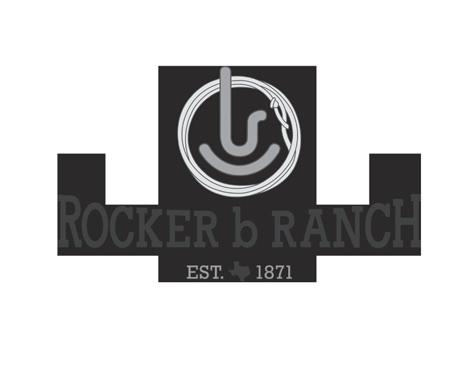







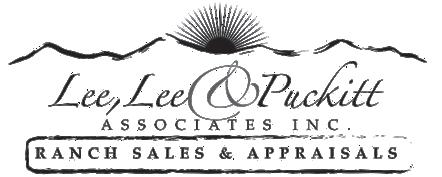





JOHN MARTIN RANCHES


From The Home of “Reputation” Breeding Santa Gertrudis Since 1936 SANTA GERTRUDIS CATTLE Box 869, San Diego, Texas 78384 Ranch: 361-701-5683
BRIGGS RANCHES
P.O. Box 1417 Victoria, Texas 77902 361/573-7141

Traylor Division San Roque DivisionSan Carlos Division Bloomington, TX Catarina, TXRio Grande City, TX Joe Jones-Manager • 361/897-1337
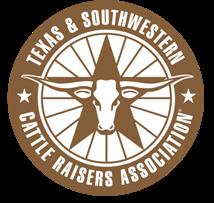

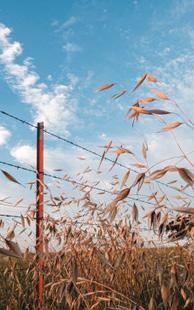


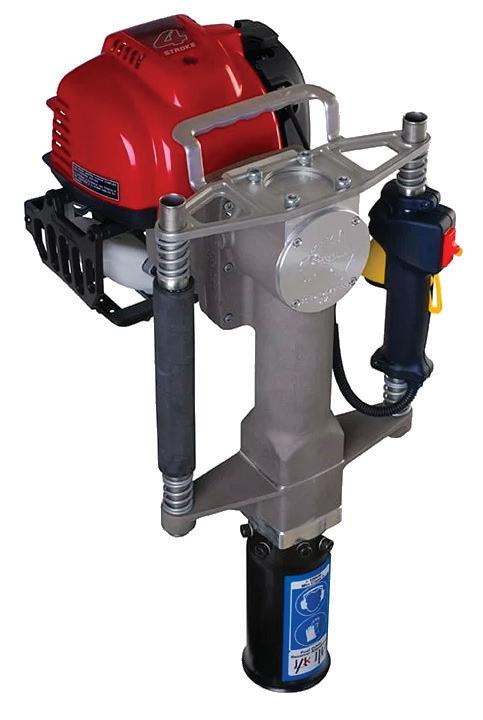
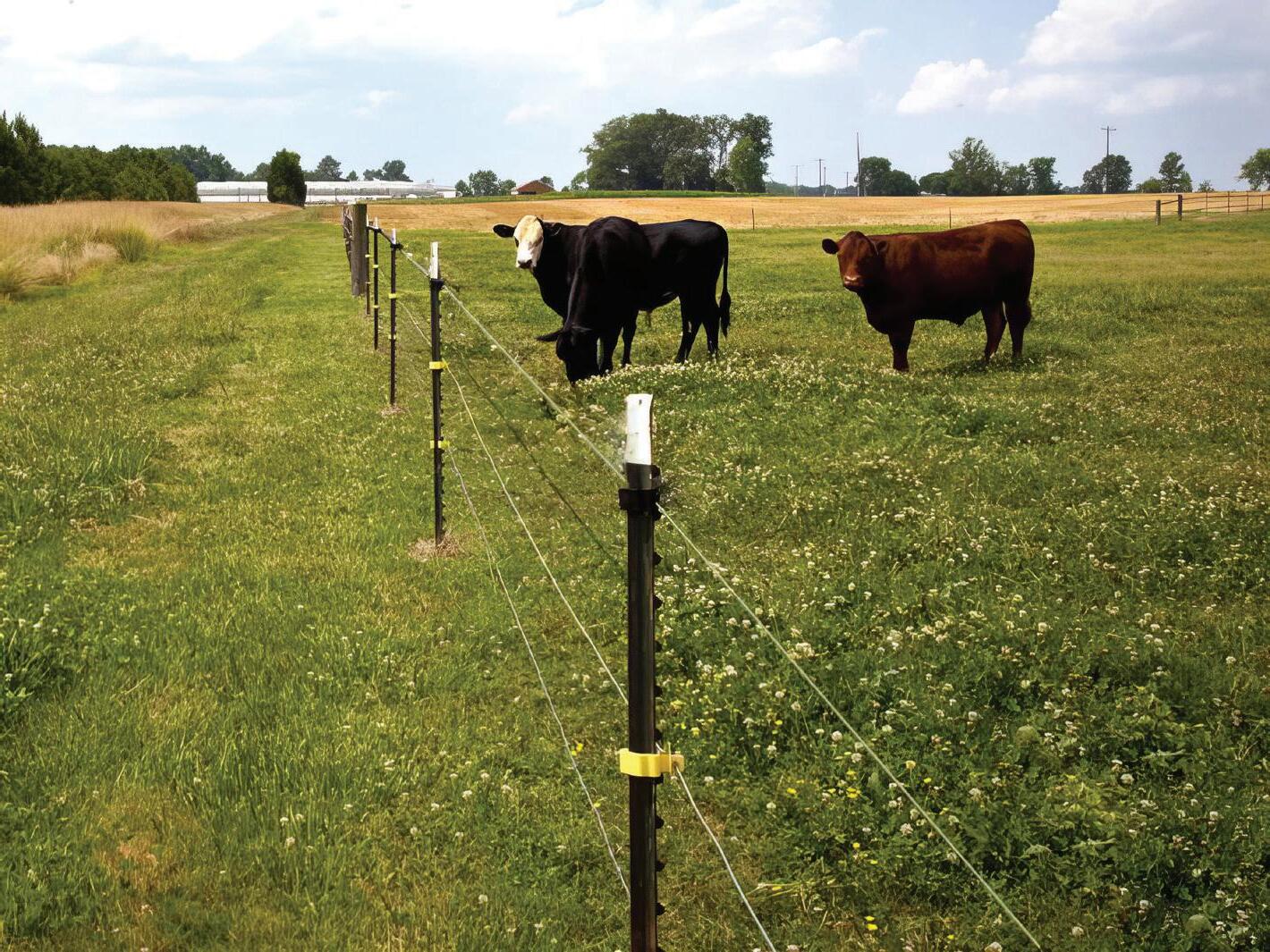




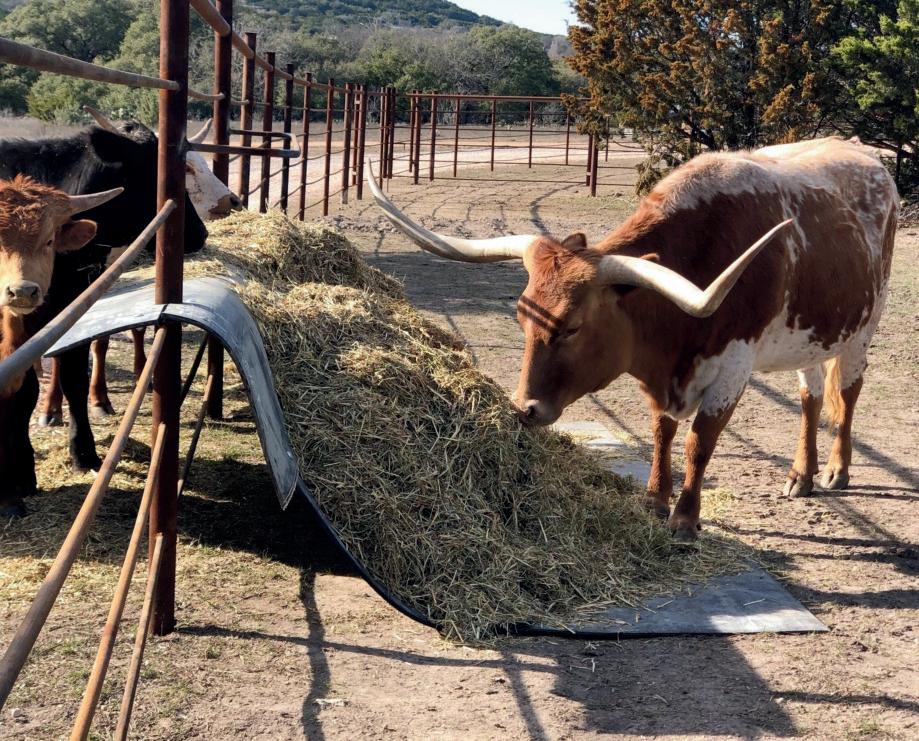



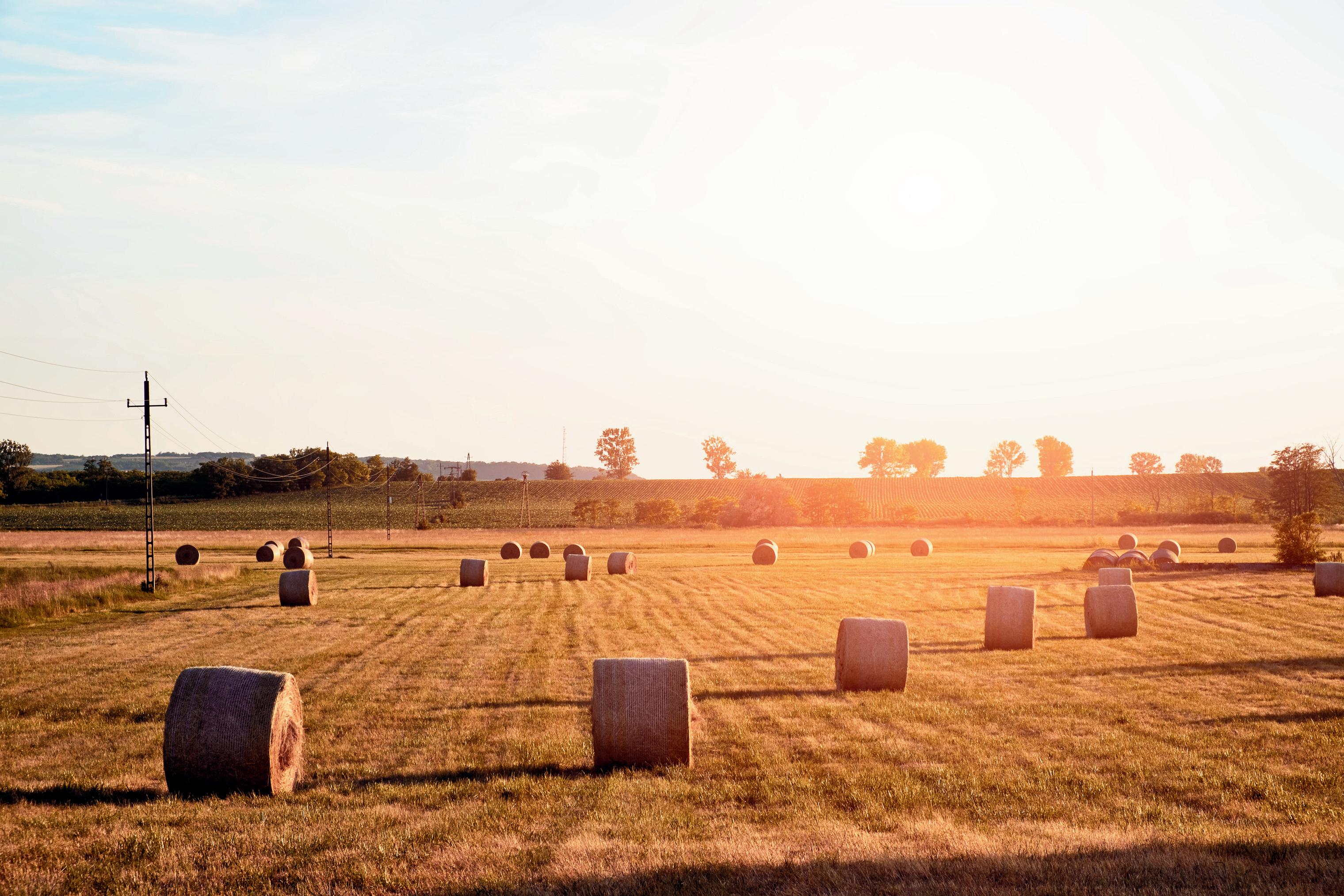




FRIDAY, NOV. 1SATURDAY, NOV. 2
Cattle Raisers Museum: Cowboy Artists of America 58th Annual Exhibition & Sale Where: Fort Worth
FRIDAY, NOV. 1MONDAY, NOV. 4
Angus Convention Where: Fort Worth
SATURDAY, NOV. 2
Barnett Angus Ranches: 5th Annual BAR Bull Sale Where: Washington, Georgia When: 12 p.m.
WEDNESDAY, NOV. 6
TSCRA Ranch Gathering Where: Goliad When: 5:30 p.m.
THURSDAY, NOV. 7
Jordan Cattle Auction: Special Bull Sale Featuring Hales Angus Farm & Cannon Charolais Where: San Saba When: 10 a.m.
TSCRA Ranch Gathering Where: Laredo When: 5:30 p.m.
THURSDAY, NOV. 7FRIDAY, NOV. 8
HOLT CAT Symposium on Excellence in Ranch Management Where: Kingsville and Online
FRIDAY, NOV. 8
Double Creek Farms: Bull Sale Where: Clifton When: 12:30 p.m.
SATURDAY, NOV. 9
Arrowhead Ranch: 17th Annual Bull Sale Where: Gonzales Livestock Market, Gonzales When: 11 a.m.
Leachman Cattle: Fall Harvest Sale Where: Fort Collins, Colorado
TUESDAY, NOV. 12
Wilks Ranch: Annual Bull Sale Where: Eastland
WEDNESDAY, NOV. 13
Jordan Cattle Auction: Special Bull Sale, Featuring Barber Hereford Ranch & Express Ranch Angus Where: San Saba When: 11 a.m.
THURSDAY, NOV. 14
Wichita Falls Luncheon Where: McBride’s Steakhouse, Wichita Falls When: 11:30 a.m.
Adams Ranch: 46th Annual Bull & Heifer Sale Where: Fort Pierce, Florida When: 12 p.m.
TSCRA Ranch Gathering Where: Houston When: 5:30 p.m.
FRIDAY, NOV. 15
Jorgensen Land & Cattle: Legends of the Fall Bull Sale Where: Arcadia, Florida When: 5:30 p.m.
FRIDAY, NOV. 15SATURDAY, NOV. 16
Cavender Ranches: 20 th Annual Fall Sale Where: Jacksonville
SATURDAY, NOV. 16
Leachman Cattle: Panhandle Stabilizer Sale Where: Gering, Nebraska
TUESDAY, NOV. 19
Ranching 101: Feed Your Cows Cake Where: Online When: 1 p.m.
THURSDAY, NOV. 21
Jordan Cattle Auction: Special Bull Sale, Featuring Schaefer Farms & Shady Oaks Farm Where: San Saba When: 10 a.m.
TSCRA Ranch Gathering Where: Dallas When: 5:30 p.m.
MONDAY, NOV. 25
Gardiner Angus Ranch: 22nd Annual Profit Proven Commercial Female Sale Where: Ashland, Kansas
THURSDAY, DEC. 5
TSCRA End-of-Year Board Meeting Where: Fort Worth
FRIDAY, DEC. 6SATURDAY, DEC. 7
GKB Cattle: Inaugural Brangus Event Where: Desdemona
SATURDAY, DEC. 7
Jordan Cattle Auction: “Best of the Best” Special Replacement Female Sale Where: San Saba When: 10 a.m.
Leachman Cattle: High Altitude Sale Where: Loma, Colorado
TUESDAY, DEC. 10
Ranching 101: Planning for the Next Generation Where: Online When: 1 p.m.
SATURDAY, DEC. 14
GKB Cattle & Barber Ranch: 2nd Annual Female Event Where: Desdemona When: 12 p.m.
Leachman Cattle: Central Plains Stabilizer Sale Where: Alma, Nebraska
THURSDAY, DEC. 19
Jordan Cattle Auction: Leachman Texas Fall Stabilizer Bull Sale Where: San Saba When: 10 a.m.

U
We’ll cover...
Aligning grazing goals with business goals
Smart ranch investments
Flexible grazing plans that work for you





Five-year-old Olive Shelmire Duncan, daughter of Mr. and Mrs. Bowie Duncan, of Egypt, and her pony, Fritz, made their mark on the history of The Cattleman magazine in November 1924.
So did writer J.L. Tormey, who predicted the market outlook for the beef cattle industry in the mid 1920s. He offered the following advice, which is applicable in any day and time.
“Many people seem to think that the future of the beef cattle business is very dark. So far as the future is concerned, everything is in the dark, but occasionally a ray of light may be thrown onto the future by experience and past behavior of markets.” T C




Crop Insurance (SCI) is a fullservice crop insurance agency specializing in Pasture, Rangeland and Forage (PRF) insurance. SCI expertly adapts PRF policies based on location, budget and weather forecasts. See for yourself how SCI sets the benchmark for knowledge and service.






